8 Reasons Why You Should Travel Locally and Ideas For Your Next Adventure

Looking for a way to travel more in 2021 while supporting your local community? Look no further.
This article will discuss 8 reasons why it is better to travel locally (they are difficult to argue with!) and give you 6 suggestions and ideas to help inspire your next local adventure.
Listen to an episode of The Solo Female Traveler where I discuss the importance of traveling locally with the wonderful host, Lu Colmenares
Table of Contents

8 Reasons it is Better to Travel Locally
1. travel locally to support your local economy (and neighbors).

Did you know that supporting the local businesses where you live has a positive impact on your life? Local businesses invest far more of their revenue locally through hiring local employees, using local vendors, banks, and service providers.
Local businesses have been documented to circulate far more of their revenue into the local economy which has many positive effects. It also means more taxes being paid locally translating to better infrastructure and local services.
Estimates say that when you spend $100 at a local businesses approximately 70% stays in the local economy compared to non-local businesses with around 30%. This is the local multiplier effect or local premium.
2. Gain a deeper understanding of local culture and history when you travel locally
Local history is much more personal and interesting – if you ask me! This is where you can learn about the human side of policies, conflict, societal changes, and other large scale events. While an event could have taken place across your country, how was your individual town impacted? What are the stories that people share?
It can be easy to take your surroundings for granted. Driving past the same buildings every day for years you might not have given them thought, but maybe they were part of the underground railroad , or the street art you walk past was once part of the Berlin Wall .
I join historical societies’ Facebook pages to see photos of places I lived or read the stories people share in the comments. I am always learning something new whether it is about my birthplace or my current home in Ljubljana.
Learning about local history and culture improves community pride, fosters tolerance, and encourages engagement and participation. It contributes to one’s local or national identity allowing them to feel connected to their community and its outcomes.
3. Local travel is more eco-friendly and sustainable
Automatically your carbon footprint is reduced if you are not flying across the planet or taking a 10-hour train or bus ride. Traveling locally also means less time traveling and more time enjoying your surroundings.
Not only is local travel more sustainable due to less travel distance and supporting local businesses, but also because there is less waste involved. Think about all of the small things that add up. If you are flying you will be getting a blanket – wrapped in plastic, maybe earbuds – wrapped in plastic, you will receive your drink – in a plastic cup. And as much as I love a good hotel buffet they are documented to have incredibly high food waste.
4. Travel locally to connect with other communities of people
Another positive benefit of traveling locally is connecting with your local community. Earlier I discussed learning about the history and individual experiences of your neighbors, but you can also learn about different cultures. Maybe there is a community of people from a different country or religion that you are not familiar with. Here is an opportunity to learn more about others around you.
Prejudice is grounded in fear of the unknown. Putting a human face and personal connection is one way to bridge the gap. Exposing yourself to their cultural events, food, festivals, or language can help build these blocks of understanding.
5. Traveling locally is more affordable
Overall, traveling locally is more affordable. Not having to pay for travel insurance, visas, plane tickets, accommodation, and anything else you might need quickly saves on travel bills. Traveling to a local museum might just require a short bike ride or a cheap bus ticket plus an entrance fee.
When traveling locally you can also take advantage of doing a picnic which can reduce eating out costs, walk or bike to your destination, and because you are more likely to be flexible about visiting days and times you can take advantage of free entrance days or reduce priced hours. These can be difficult to catch when you are visiting from far away (or abroad).
6. Local travel is easier to plan and more flexible
Local travel is just plain easier to plan, and you can be far more flexible. You can wake up on a Saturday morning and think the weather is great, I’d love to go on an adventure and just go. No need to book a plane ticket, hotel, check if you need a visa, get time off of work, the list goes on and it is exhausting.
Local travel gives you the flexibility to just pick up and go with a moment’s notice. You most likely speak the language, are familiar with current events, know the local spots and even hidden gems.
When travelers visit a new place they often hit the main sights. With limited time there is only so much that can be done, and the most popular sights are popular for a reason. Once you have ticked off that list, now you can dive even deeper! Find the hidden bakery with the best-baked goods or quirky architecture in a neighborhood you rarely visit.
7. Travel more frequently through local travel
Who doesn’t want to travel more? Due to the lower cost of local travel, you can now stretch your budget to travel even more often! Instead of a 2-week excursion abroad, you can do a day trip every other weekend or once a month.

8. Travel locally means no luggage limits
Okay, this is limited to those who have a car or maybe taking a train or bus to a nearby town. No weight limits on luggage is a dream! I love a good road trip and bringing anything and everything I want. Yes, that means I have packed several cameras, more outfits than I could possibly wear, and most importantly – all of the snacks.
Ideas for How to Travel Locally
Now that we have learned eight benefits to traveling locally I wanted to share some ideas to inspire you to take your next local trip. Here are all very easy ways to find local activities, events, or tours that I use to help me plan my trips.
Take a walking tour
Do a Google search to see if there are any walking tours or tour guides in your area. Some tour guides specialize in certain aspects of history or culture so you are bound to learn something new! Check with a local tourism board if there are any local tours available.
Bonus Tip: Virtualtrips is a great resource for doing virtual walking tours around the world from the comfort and safety of your home. All tours are conducted by local tour guides and are completely free – although it is polite to tip your tour guide!
Visit museums
There are a shocking number of museums in every little corner of the world. Some of them might be right under your nose! The last time I visited my hometown I did a search for things to do and found several museums I never visited. I was in for a treat and learned so much about my heritage and my ancestors’ experiences.
Go on a hike at a local park
Nature is healing! A study from Nov 2020 explored how a regular dose of nature may improve mental health during the pandemic. Another study from July 2019 also discusses the relationship between nature and mental health. Check out local green spaces to see if there are any nature walks or hikes that you can do on your own or with a local walking group.
Check local calendar for cultural events
Local calendars are full of cultural events to attend and oftentimes they are free. Local town or city websites, local tourism board sites, or websites like In Your Pocket or events on Facebook are great places to start. You can usually browse by date or topic to find upcoming events of interest in your area.

Take a cooking class or food tour
You can’t really go wrong with food. There are tons of food tours and cooking classes taking place across the world. There are many things that can be learned and experienced through a cooking class or food tour. You can learn how to make a traditional dish from your hometown to help carry the tradition and knowledge, or you can taste the latest craft beer or sweets available in your area.
Pro Tip: Eventbrite offers food and drink-themed online events from cooking classes to virtual dining parties. Some of which are completely free!
Visit an art gallery
Differing from museums there are many private art galleries scattered across the world. Some of them being run in dedicated spaces, pop-up galleries or events, and sometimes within small businesses. I have visited a lot of cafes that also double as art galleries that change out the work every few months. It is a good feeling supporting the local cafe as well as familiarizing myself with local art – and if it sparks an interest maybe even purchase it.
Save this article for later!
Save this article to Pinterest to share with friends or to access later.

Why Buy Local? An Assessment of the Economic Advantages of Shopping at Locally Owned Businesses [ link ]
Think Local! 7 Reasons Why Supporting Local Business is Good for Your Community [ link ]
Locally Owned vs Chain: The Local Premium [ link ]
Biting Off More Than They Can Chew: Food Waste at Hotel Breakfast Buffets [ link ]
3 thoughts on “8 Reasons Why You Should Travel Locally and Ideas For Your Next Adventure”
Amazing! Thanks for sharing. I am a travel blogger and i love this.
As a family of history enthusiasts, we’re excited to visit a picturesque South Carolina town renowned for its well-preserved past. During our trip, we’re planning to explore the historical development of emergency services, how they’ve evolved over time, and their crucial role in the town’s history. So, thanks for letting us know that traveling locally is more cost-effective since you avoid having to pay for travel insurance, visas, plane tickets, lodging, and other expenses that may come up unexpectedly.
Leave a Comment Cancel Reply
Your email address will not be published. Required fields are marked *
This site uses Akismet to reduce spam. Learn how your comment data is processed .
Privacy Overview
Listen on Apple • Listen on Spotify
[email protected]

Want to travel more but feel overwhelmed by flying, finding a week off, or leaving the country? Or maybe you already travel some but you’re feeling stuck in your routines? Are you at a place in life where it’s hard to commit far in advance? We have the solution – and today we go over exactly where to start if you’re feeling overwhelmed or stuck in a rut.
#1 There are many ways to define local travel, just like there are many ways to define travel in itself. But here’s how we define it: Local travel is all about getting out of your typical routine and discovering new things. What does that look like? It could look like going on a 3 day weekend to a nearby town. It could look like going to the next town over to go to a festival or fair. It could even mean going to a new brewery in your area. We would consider any of that local travel.
#2 The more you say yes- the easier it gets. The more you get out of your comfort zone and experience new things, the more you look for those experiences and when that flight finally shows up and all the stars align- you are much more likely to pull the trigger and say yes because you are already used to choosing new things and putting yourself out there. It’s kinda like Dave Ramsay’s Debt Snowball, if you’re familiar with that financial idea.
#3 We live in New England now but we also lived in the panhandle of FL and I lived in Memphis- right in the middle of the country. In each of these places we found cool places to go on local trips. Let’s start with New England
In New England- some of our favorite places to “travel local” are to the local fairs- pretty much our entire fall is spent this way. We also love Cape Cod for longer trips and of course, skiing
In Memphis- I liked Nashville of course, I actually went there and back in a day a few times. I also visited Saint Louis on a long weekend trip as well as Chattanooga, Hot Springs, the Ozarks and finally Tuscaloosa for a game!
And in Florida- we of course did Disney (on a resident’s pass), but we also did St. Augustine, and our very favorite weekend location- New Orleans.
We’d love to hear all about some of the local travel adventures you get up to! Shoot us an email at [email protected] to tell us all about it!

how to find free things to do while traveling
Of course beaches, hikes and wandering around a city are usually free while traveling, but did you...
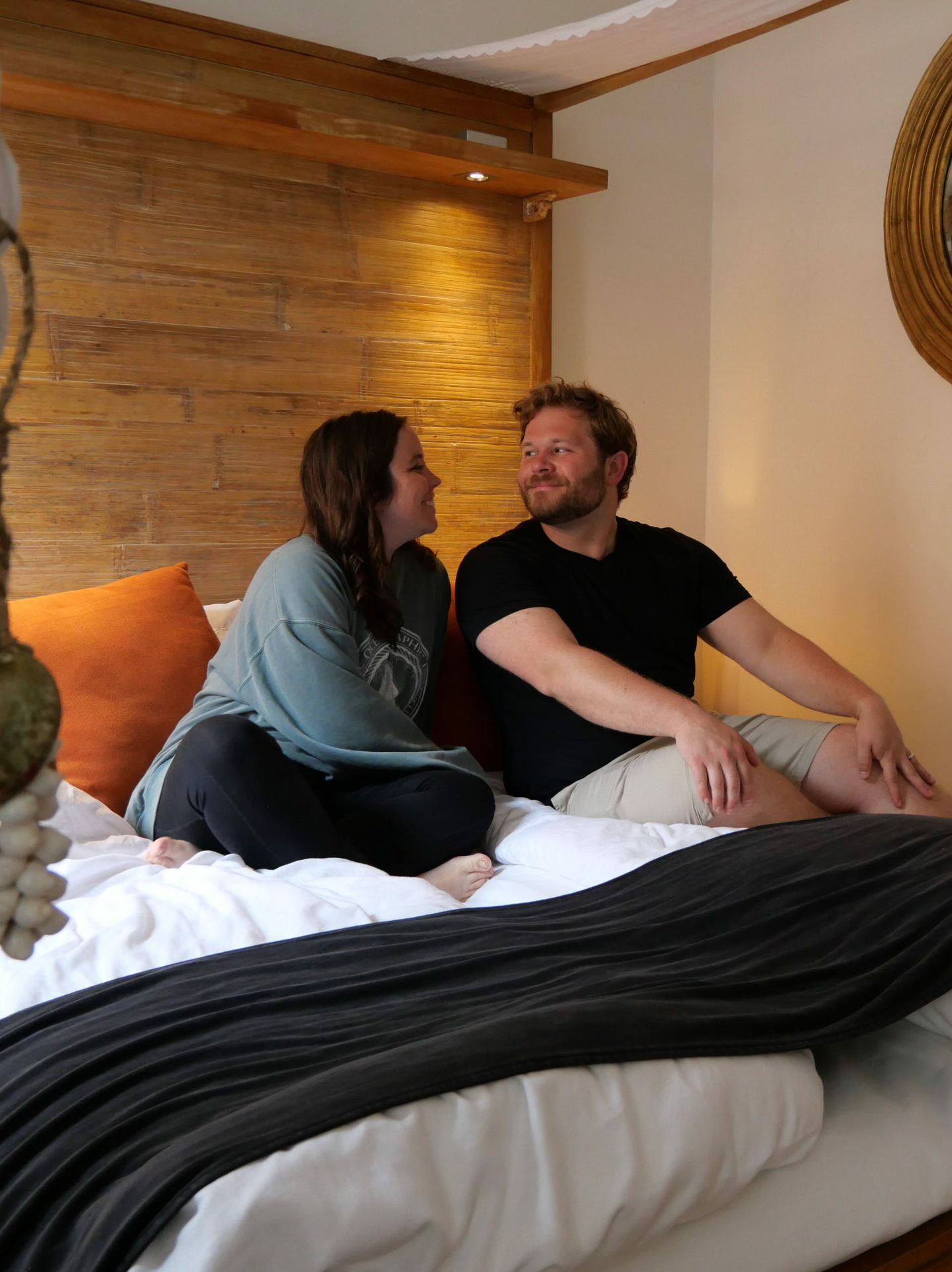
best travel credit cards: co-branded cards
Marriott, Hyatt, Hilton, Southwest, United, Delta There’s so many different brands and so many...
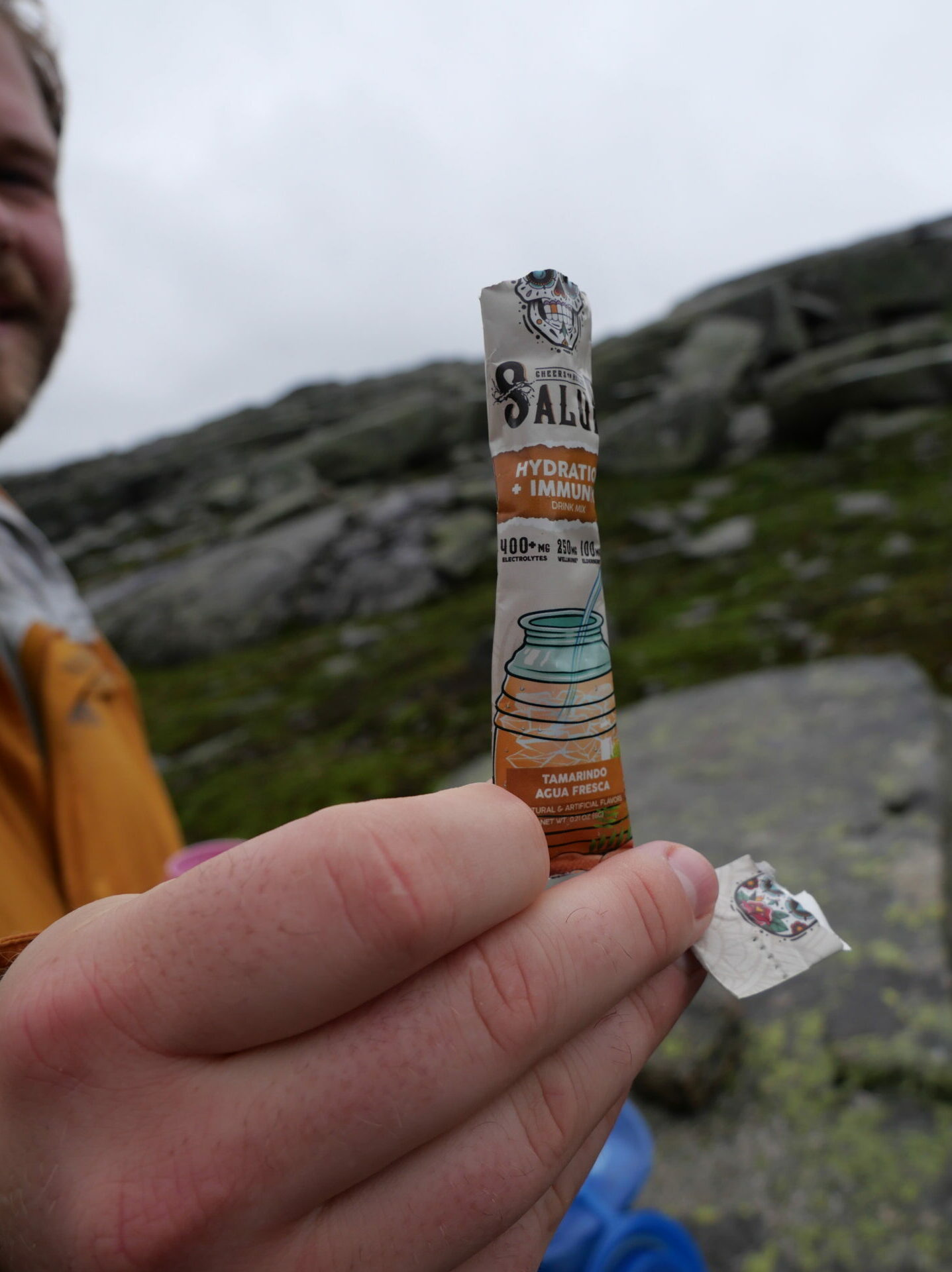
christmas in july! our favorite under-rated travel products
It's never too early to be thinking about Christmas! And with those Labor Day sales right around...

Get our Travel Budget Planner!
Join our mailing list to access our free Travel Budget Planner and receive the latest news and updates from our team.
You have Successfully Subscribed!

How to travel locally: the ultimate guide to local tourism
Local tourism is really gaining momentum these days – and for good reason. From the minimal environmental impact to the low-budget opportunities, it comes with a lot of benefits. Ready to travel locally on your next trip? Read this article to learn how!

Before you select the hottest new destination for your vacation, consider all of the beautiful options that are available to you locally .
Yes, driving two hours may not be as glamorous as a 12-hour flight to Southeast Asia, but there are many benefits to local travel that just aren’t available at popular tourist destinations.
From a decrease in cost to a minimal environmental impact, traveling locally just might be the answer you’ve been looking for.
But how to travel locally? And why ?
Read on to learn about all the ways local travel might work for you.
What is local travel?
Local travel is simply small-scale travel. It’s when you don’t go too far from home and spend one or a few days visiting local destinations and hidden gems. You might drive an hour or two away, hop on a train, or even be a tourist in your own city.
When people imagine travel, they often think of far-flung adventures, where the journey is just as important as the destination. And that’s certainly a great way to travel – but it’s not the only one out there. Think you’ve seen it all in your area ? This is exactly how you miss out on great experiences !
Although the terms are often considered synonyms, local travel is not exactly the same as domestic travel . Think of all the massive countries out there – a family from New York traveling to California are not local travelers just because they’re staying in the same country.
But local travel can definitely be international , especially in places like Europe where countries are so close to each other and public transportation is abundant.

Why is local travel sustainable?
Local travel is more sustainable than typical international travel by far. Before we get into detail, it’s important to note what sustainable travel even is.
In short, there are three pillars to sustainable travel: environmental , economic , and socio-cultural . Sustainable travel must not cause excessive harm to the environment, and it should support the local economy and its people in a way that doesn’t erode their culture.
Local travel can easily be sustainable in all three dimensions.

Local travel is environmentally sustainable
Carbon emissions when traveling locally are much lower compared to traveling internationally, or simply traveling large distances. Local travel often doesn’t involve flights and, when it does, the shorter distance lends a hand in reducing emissions.
Airlines also limit what and how much you can take on board with you, so you’ll have to use your suitcase space wisely and likely resort to travel-size products. This results in a lot of unnecessary waste. When traveling by car or public transportation, there are no such restrictions and you can pack eco-friendly products to further reduce your carbon footprint.
Check out my eco-friendly packing list .
Local travel also means you already know how to minimize your impact once you get to your destination. For example, has your country launched an app to locate water stations to refill your reusable bottle? That’s great, you can still use it on your trip. Or, are you expected to sort your trash before throwing it away? No problem, you already know how to do it.
When traveling to far-away destinations , you may be unaware of such habits and practices, and may not have enough time to research the necessary information. So, you’ll probably end up with no alternative but to buy bottled water, dump everything in the “mixed waste”, and so on.
Another point for local tourism!

Local travel is economically sustainable
Local travel is sustainable economically for both yourself and your community.
The push to shop locally is prevalent in sustainable travel. Who do you want to support – the locals or international hotel chains? The same applies to local travel, except this time you’re helping your own community and its economy.
It’s also easier to navigate all the available options because you are already familiar with the area and have a better sense of what is really a local offering versus what is sneakily a tourist trap.
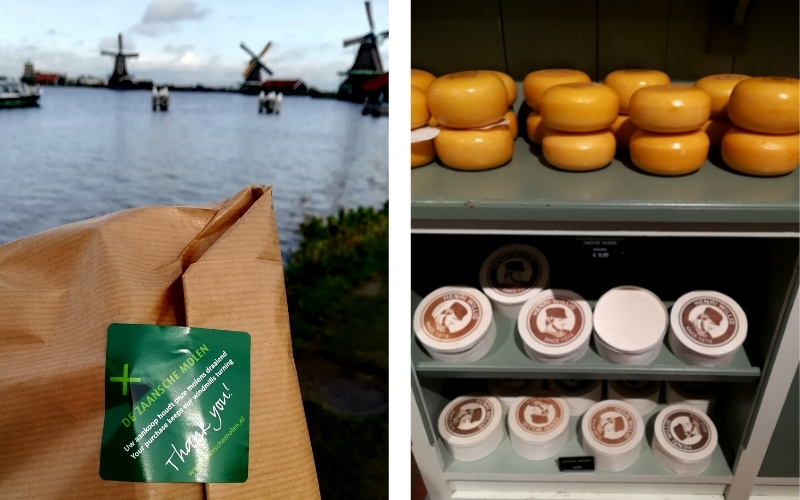
You’ll be also more inclined to book local and sustainable accommodation , especially if you’re one to seek the comforts of home while away.
The farther away you go, the higher the chances that a hotel room or vacation rental is very different from what you’re used to. Maybe the hygiene standards are not the same as in your home country, the local norms of hospitality look weird or even rude to you, or the amenities are not as you expected. Sustainable tourism should indeed be all about respecting the local culture and customs, but not everyone has the same spirit of adaptation (and that’s ok).
Luckily, you’ll have no such issues when traveling locally. Accommodations probably offer the same services you’re used to and there is less of a need to seek the comfort of a hotel chain. It will be that much easier to book a bed and breakfast, or to maybe even try out a campsite or other alternative forms of accommodation.
Learn more about what to look for in sustainable accommodation here .
Everything that is true about accommodation is true about eating locally . As a resident of the nearby area, you know what is truly local food and what isn’t, and you can support restaurants and the overall service industry close by.

Local travel is culturally sustainable
Local travel also preserves local culture and traditions . In over-traveled destinations, locals face pressure to adapt their habits and traditions to meet tourists’ expectations. This isn’t an issue when people travel locally, as they are already a part of, or better understand, the area that they are visiting.
Local travel is also much more flexible than traveling a great distance away. It’s much easier to pack up and go when you only have a short trip ahead. This means you can easily avoid crowds by traveling outside of peak season which is good for both you and the community you’re visiting. Traveling in the low season does not mean you won’t find anything fun to do. You can attend fairs, festivals, and exhibitions, both large and small, without putting a strain on the community’s resources.

Benefits of traveling locally
Local travel offers many other benefits to travelers that aren’t just about the environment and the community that’s being visited.
It’s cheaper
Oftentimes traveling locally is much cheaper than going on a long and far international vacation. The cost of transport, insurance, and baggage fees can add up fast, and if you’re traveling in a region that you’re familiar with, you will have a better understanding of ways to save money too.

It’s easy to plan
Local trips are easier and less time-consuming to plan as you’re familiar with customs and the way things work, and they also allow you to travel more frequently . When only traveling an hour or two in each direction it’s more manageable to take weekend trips.
And if you have a family or pets , you don’t have to worry about flight time, children in pain from the change of air pressure, or your dog not being allowed on the flight at all.

You learn about your area
When you travel locally, you have the chance to learn things about your area that you might have always overlooked. Travel often changes people’s mindsets. No longer are you in your daily life, but rather you are an outsider looking into the lives of people who live there.
So what if you’re only 30 minutes from your bedroom? If you visit an area from the perspective of a tourist , you will be much more open to learning about what other people experience, which will then lead you to view your own city differently.
It is also much easier to find hidden gems . If you’ve extensively traveled in a region and have already visited all of the must-see attractions, you should explore outside-the-box opportunities. You never know what you’ll find unless you get out there and look.

It’s more inclusive
Local travel is more inclusive from multiple perspectives.
It has the potential to be much more disability-friendly than international travel in many circumstances. For example, service animals are allowed, and it’s that much easier and stress-free to travel with all necessary equipment that may be needed.
Also, with no cultural or language barriers , you can better assess the actual inclusivity of an attraction or a destination and draw your conclusions. You may want to avoid places that you consider to be unsafe for certain marginalized groups, or go anyway with some precautions.
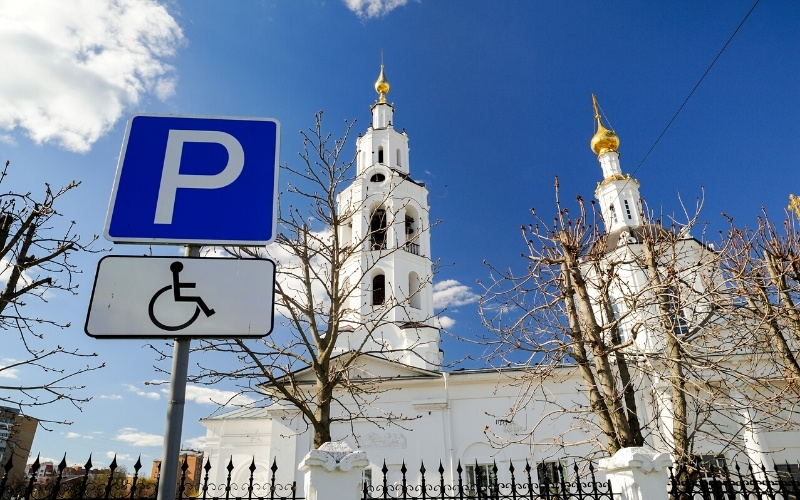
Ideas for local travel
Short on local vacation ideas? No problem, there are so many options when it comes to local travel.
Go on a road trip
Road trips are the easiest way to travel locally, especially if you already have a car. Make sure your vehicle is equipped to leave home: all elements should be in working order (tires have the correct air pressure, there’s enough oil, etc.), and you have jumper cables and a snow scraper as needed.
All that’s left is to hop in and hit the road!
Your car can take you wherever you want to go. There isn’t a set flight plan, and you won’t have a tour guide telling you what is next on the agenda.
There is so much to see and do throughout the world, and just because you’re close to home doesn’t mean it’s any less of an adventure .
Stop anywhere that looks interesting, and avoid highways when possible.

Travel doesn’t always have to mean luxurious getaways. Sometimes the best trips are the ones that are laid back and spent in nature.
There are campsites almost everywhere, and for all types of travelers. From state-of-the-art RV parks to family-friendly spots in the woods, you are sure to find your ideal way to connect with nature .

Hop on a train
You know what they say – travel is about the journey , not the destination. Well, what better way to get from point A to B than hopping on a train and enjoying the view all along?
Trains offer a fun, slowed-down experience in a world where people just want to travel as quickly as possible. They are also a great option for those who are not comfortable driving in unfamiliar places or just don’t want to relax on the trip.
Depending on where you live, trains may be a more or less accessible form of transportation, but they’re worth a try. You can even find money-saving deals such as 10-ride passes that you can use on multiple trips.
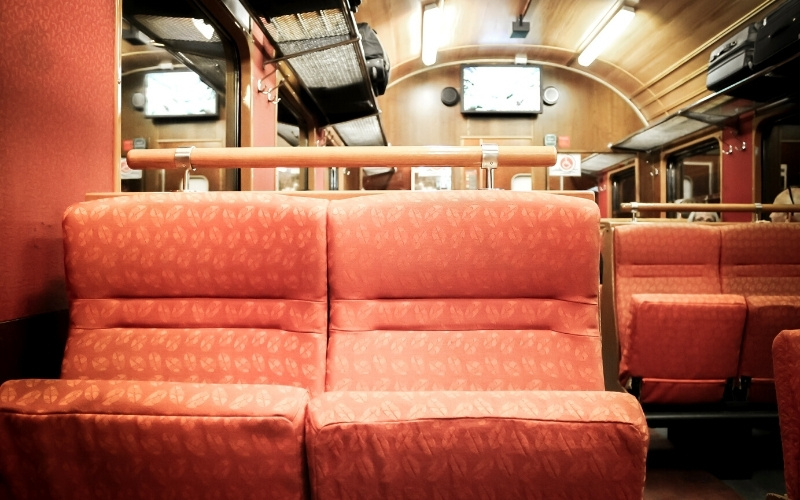
Hiking is what you make of it, and there’s no shortage of hiking options available. A hike can be as simple and accessible as a stroll along a town’s border or a weekend-long trek up a mountain.
No matter where you are in the world, you will have access to a hike to go on.
This is another great way to connect with nature , and as a bonus, it doesn’t have the time commitment that camping does.
If you aren’t in the mood to sleep in the wilderness, it’s more than possible to drive to the trailhead and head back to a hotel, or even back home, once the hike is completed.
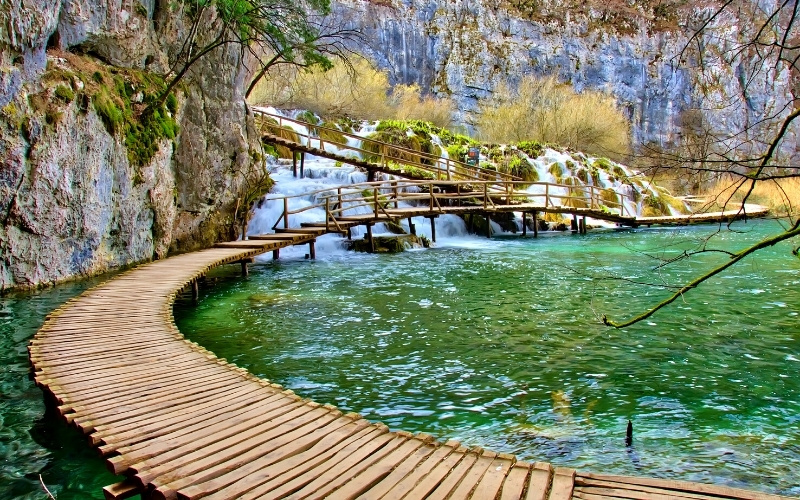
Visit a national park
National parks are bucket-list items for many people, and their accessibility makes them a great choice when considering local travel.
Entrance fees are what maintain the gorgeous land, so visiting them helps to preserve the area . Plus, when visiting locally you can choose to visit off of peak season to stave off overwhelming the area with tourists and enjoy the park even better.
Fewer people mean greater chances to spot wildlife – don’t forget to be respectful of the animals though! If you’re not sure what to do (or not to do), read this guide on ethical animal tourism .

Be a tourist in your own city
This may just be one of the best ways to travel locally and sustainably. Your home is filled with more to do than you know.
When we travel, we tend to use this time to escape monotony and try new things – why not just try new things at home?
Transportation costs will be low, and all money you spend at home will stay in your community .
Visit museums that you haven’t before, or take a walking tour to see what is being said about where you live. Try a cooking class , or eat at restaurants you otherwise wouldn’t try if you weren’t “visiting”.

Attend a local event or festival
So often we’re caught up in our daily lives that we only seek new experiences when we’re on vacation. Life doesn’t have to be like that.
Stay on the lookout for events going on in your town, or festivals happening in a neighboring town. Attending local events both supports your community and local artisans , and adds adventure to your life, all without a large time commitment. You can make it a turnaround trip, or turn it into an overnight stay.

Resources to travel locally
As with the travel industry as a whole, there are many resources available for those looking to travel locally.
Google is the greatest travel resource of them all. From providing access to maps and directions to being the home to all the travel blogs you could ever need, Google is the place to search for local travel ideas.
Local tourism board website
Many towns, no matter the size, have their own tourism board and website. You can spot them right away as they are usually called Visit Finland, Visit Canada, and so on. If not, they still appear at the top of Google Search results.
You’ll find inside information , hidden gems , cultural fun facts , events , and more.
These are an excellent resource, especially for those looking to visit smaller towns, as they are proud of what they have to offer and are always showing off what they provide.
Local tourist office or travel agency
You may associate travel agencies with long-haul flights and exotic landscapes, but they are a good resource when it comes to exploring local travel destinations and finding unique activities to embark on.
Stop by your local tourist office and see what they recommend in your area.
Dedicated apps
There’s definitely no shortage of travel apps to help you find local activities and events.
AllTrails ( iOS , Android ) will help you pick a hiking trail, Waze ( iOS , Android ) will be your best friend on a road trip, and Rick Steve Audio Europe ( iOS , Android ) will take you on free self-paced walking tours in Europe.
Many destinations also have their own app, so it is worth making a quick Google search. For example, Kide.app ( iOS , Android ) helps you find events and services in over 30 cities in Finland and you can even buy your tickets through it.
Recommendations from friends and family
Word of mouth is one of the best ways to discover new local travel ideas. You’re friends for a reason, which means your interests align and they will be able to give confident recommendations for an area.
It’s also a great idea to ask other locals in your town. Did your barista mention they go camping frequently? Ask them about their favorite campsites and trails.
Social media
Social media are a treasure trove of travel ideas. Start following local travel accounts or, if you already have a destination in mind, use the geotag and you’ll find yourself scrolling for hours through picture-perfect views and hidden corners of the world.

Tips for local travel
In conclusion, here’s a list of the best tips for local travel mentioned in this article.
1. Support the community by staying at locally-owned accommodations and eating at local restaurants.
2. Do what you can to minimize your carbon footprint . This is so much easier when you travel locally. For instance, you could bring eco-friendly travel items or choose low-impact forms of transportation.
3. Avoid tourist traps – who wants to pay for overpriced low-quality stuff in their own town that they probably know inside out?
4. Make friends . With no language barriers, you can easily strike up a conversation with other people on the same walking tour or with someone sitting next to you on the bus. It’ll be much easier to stay in touch with people living in the area than with someone who lives overseas.
5. Spread the word about the places you visit and give recommendations to your friends.
6. Most of all, have fun !

Final thoughts
So, have I convinced you to travel locally?
As you just read, local travel isn’t just good for the environment – it’s good for your community and your wallet as well.
It’s often cheaper than international travel, and it’s your own community that receives your tourist money.
If you’re in the mood for a change of pace, consider staying local – you never know what all your area has to offer until you try it out.
Three related articles

WHY IS SUSTAINABLE TOURISM IMPORTANT?

ANIMAL TOURISM: HOW TO TELL WHAT’S ETHICAL AND WHAT ISN’T

WHERE AND HOW TO FIND SUSTAINABLE ACCOMMODATION

previous post

post a comment cancel reply
Save my name, email, and website in this browser for the next time I comment.
I accept the Privacy Policy
This site uses Akismet to reduce spam. Learn how your comment data is processed .
Privacy Overview

- Service Providers + Destinations
- Content Creators
- Collaborations + Partnerships
- What is Rooted?
- Rooted’s Founder

Who defines what "local" means? | Photo by Mika Baumeister on Unsplash
Rethinking Tourism
May 18, 2021
What Do We Mean When We Say “Local?”
Everywhere you turn in the tourism industry these days, all eyes are on “locals” — locally focused travel experiences, supporting local businesses, listening to local stakeholders, shifting to local narratives and storytellers , and, yes, even focusing on local (domestic) travelers .
For a long time, the tourism industry centered travelers above all else — their needs, desires, and expected narratives. This traveler-centered myth , which is perpetuated throughout the buyer’s and traveler’s journey, has been at the heart of many destructive environmental and social issues. These include overcrowding, creation of carbon emissions, degradation of cultural and historical sites, gentrification due to an increase in short-term rentals, and exploitation of Indigenous people and commoditization of their cultures.
Finally, after years of relying on a mass tourism model, this emphasis on “going local” feels like a positive shift in perspective.
But, as with anything, this shift in focus requires careful consideration. There is nuance tied up in the “local” conversation, and that nuance matters.
Understanding Identity
Take a moment to consider your own personal situation and environment. Where do you consider yourself to be a “local?” When it comes to having a say in how tourism is managed in your “local community,” where, exactly, is that place?
In my case, I am an American citizen, but I haven’t lived on U.S. soil in several years. I have been a permanent resident in another city and country, living in the exact same apartment, for five years. I was born in one U.S. city, grew up and graduated from high school in another U.S. city, and graduated from college several thousand miles from both of those cities. Yet, I was a homeowner in an entirely different city and state, paying property taxes and a mortgage, for nearly a decade before moving abroad.
When people ask me where I’m from, I never know how to answer. Where is home? Where am I a stakeholder? Which of these many destinations should check in with me before making tourism-related decisions? In which of these destinations would people be supporting me as a “local?”
I am certainly not alone in lacking ties to and identifying with any one place as a human living on this planet. I care about how tourism impacts each and every one of these places I have called home at one point or another. But, turning the tables, in what scenarios should tourists care about me as a “local?”
Defining “Local”
Examining this question matters, and it’s something every tourism professional should be grappling with right now.
Are “locals” those people who have ancestral ties and claims to the land ? Are they people who pay taxes or are they people who physically live in the neighborhood … or do they have to meet both of these qualifications?
Are local businesses those that are unique to this specific destination? What if there are multiple branches or locations of the businesses beyond this specific destination? Is it “local” if those branches are within the same city, same county, same state, or same country? How many branches do there have to be before it’s “too big” to be considered local? And, is it still a local business if the majority of people working on-site are born-and-raised local residents?
Perhaps more importantly, how do the local people define themselves? It turns out there’s not a simple answer to that question either.
Just as no single person represents an entire population of people who share a particular characteristic, the temptation to label an entire host community as a single entity strips people and places of their widely diverse histories, needs, desires, and expectations. This recent article about what it means to be “local” in Hawaii , for example, notes the complicated and ugly history of colonization and oppression woven into a larger narrative of shared experience, identity, and ancestral ties — all of which matters when it comes to defining locality.
In the tourism context, it’s appealing to call something a “local” experience and be done with it. A quick Google search reveals pages upon pages of Hawaii-related travel content inviting people to “go native,” “do as the locals do,” and have “authentic Hawaiian experiences.” While this content might appeal to travelers, it does nothing to highlight the complexity of the situation, especially when there’s a conflict between travelers’ expectations of what a “local experience” looks like and the reality of daily life .
There’s a tricky catch-22 of tourism marketing that must balance attracting potential travelers while also upholding the integrity of an honest and transparent narrative. But in an attempt to pivot from the mass tourism model, those working in the tourism industry need to be mindful not to homogenize people and communities, especially for the sake of marketing.
Being willing to learn about and understand the nuances of locality in the destinations tour professionals work is an important first step in promoting offerings that meaningfully and intentionally support the people who live there.
Beware of “Local-Washing”
There’s a reason why taking this time is imperative: Beyond the complexities of the “local” label is the importance of understanding what it means to conduct business in a way that actually benefits local communities, which is specific to each individual community.
Shortly after reading the above-noted article about the nuance of this terminology in Hawaii, I noted the following tweet from a colleague: “An accelerated emphasis on all things local in travel and tourism is a good thing. But we'll also need to sniff out all the inevitable ‘local-washing’ and insist that a diversity, equity, and inclusion lens is applied to how we measure and report on tourism's benefits.”
This comment should raise a cautionary flag for every single person working in the tourism industry. When travel companies tout “local experiences,” it’s important that they understand who, exactly, benefits from their services and products.
At the height of mass tourism, up to 75% of tourism income in some destinations was victim to leakage as profits seeped back into the pockets of transnational hospitality conglomerates. Recognizing the need to “stay local,” some hospitality brands may undergo clever linguistic gymnastics to convince guests that they’re “supporting” and “benefiting” local communities and the people who live there.
But the question is: Who, specifically, financially benefits from tourism in this specific destination?
Even if profits stay within a destination, are only a few folks benefiting — and are they the same people who make all the decisions regarding how tourism operates in the destination? Is it someone with ancestral ties to the land? Someone who pays local taxes? Someone who grew up in the neighborhood, or someone who recently moved in?
And, is tourism income being dispersed, trickling down to those who have been historically marginalized and even commoditized by tourism in the past — or is the industry continuing to harm those it claims to help?
Continuing the Commitment
It is noteworthy that the tourism industry as a whole recognizes the dangers of leakage. It is promising that people increasingly recognize the importance of diversity, inclusion, and equity within the travel space.
But this isn’t the end of the conversation. In fact, it is only the beginning.
Those working in tourism have a responsibility to use their privilege and positions of power to do more than placate travelers’ desires. Yes, people want to support local communities when they travel — and that’s a good thing! — but the onus is on tourism professionals across the industry to ensure they’re offering more than lip service when they seek to meet these desires.
The key here is specificity: Tourism is complicated because it is intimately connected with people and places … and people and places are complicated. Instead of shying away from this nuance, it is imperative industry professionals lean into it.
Tour companies, service providers, and destination representatives must work closely with on-the-ground partners and each other to clearly understand the economic and environmental impact tourism has on a destination. All stakeholders must be transparent and detailed in their reporting, specifically stating who benefits from tourism and how.
And, beyond that, it’s important to understand not only what that benefit is but who defines that value.
As the industry discusses the importance of local impact, everyone must enter these conversations with curiosity while also boldly asking hard questions and holding each other accountable. Don’t be afraid to drill down to the micro level to clarify understanding: How exactly do service providers support “local” people? What exactly is the situation on the ground? Who exactly is benefiting, and in what way?
This is a new era of tourism. It’s an era that can actually support individuals throughout all layers of society and disrupt the traditional tourism narrative — but only if we’re willing to challenge our commitment to people and the planet while recognizing there’s always room for improvement.

JoAnna Haugen is an award-winning writer, speaker, consultant, and solutions advocate. She is also the founder of Rooted, a solutions platform at the intersection of sustainability, storytelling, and social impact. Hire her as a consultant or to speak at your next event.
Related posts
Why it’s time to move beyond “empowering” women in tourism — and what is needed instead, collaboration among destinations is essential for a sustainable future of tourism, “no” is an acceptable answer – even in hospitality and tourism, leave a reply.
Your email address will not be published. Required fields are marked
Save my name, email, and website in this browser for the next time I comment.
Excellent article! Thanks for sharing!
Kind regards
Thank you so much for your insights!! Wonderfully crafted & written. Would be honored to feature you in our magazine…www.agritourism.life/magazine Take a test drive & let me know…your voice is needed!
The more people really do their work for supporting the locals out of their heart the better. The more people who first think of their own money the worse.
Thanks for your comment, Yvonne. I’m glad to hear this resonated with you.

Don't Miss Out!
Biweekly newsletter highlights:
- Latest Rooted articles and favorites from the archives.
- Creative solutions addressing tourism's challenges.
- Actionable storytelling and sustainable travel tips.
- First-to-know details on learning opportunities.
- Updates and discounts on relevant products, services, and resources.
- Opportunities for highlighting your stories.
Latest Posts
- Discover the Best Local Travel Guides for Your Next Adventure
- 10 Epic Ways to Travel Around the World Like a Pro
- Unlock the Ultimate Guide to Buying Local Guide Accounts Today!
- Unleashing the Power of R Local Variables: A Comprehensive Guide
- Uncover the Hidden Gems of Historic Travel: A Journey Through Time
- Best local food spots
- Cultural experiences
- Eco-friendly accommodations
- Eco-friendly transportation
- Family-friendly activities
- Historical landmarks
- Off-the-beaten-path attractions
- Outdoor adventures
- Sustainable shopping

What is Local Travel?
- September 28, 2023
Exploring and experiencing the sights, customs, and way of life of a certain area or town is referred to as local travel. It entails becoming fully immersed in the cultures, traditions, and activities of the area in order to comprehend the destination’s distinctive features on a deeper level. When it comes to seeing undiscovered attractions, sampling regional food, and interacting with the local populace, traveling locally provides a richer and more genuine experience than visiting other countries. In addition to fostering sustainable tourism and aiding in the preservation of the destination’s cultural history, it also supports local companies and boosts the local economy. We will explore the idea of local travel in this post, along with its advantages and ways to improve our trips.
1. Introduction to Local Travel
1.1. definition of local travel, 1.2. benefits of local travel, 1.3. why choose local travel, 1.4. exploring your own backyard, 1.5. supporting local businesses, 2. popular local travel destinations, 2.1. discovering hidden gems, 2.2. exploring nearby cities, 2.3. visiting local attractions, 2.4. exploring natural wonders, 2.5. immersing in local culture, 3. tips for a memorable local travel experience, 3.1. planning your itinerary, 3.2. interacting with locals, 3.3. trying local cuisine, 3.4. engaging in local activities, 3.5. capturing memories through photography.
Exploring and experiencing a destination’s sights, culture, and way of life from the viewpoint of a local is known as local travel. It entails being fully involved in the neighborhood, mingling with residents, and finding off-the-beaten-path hidden gems. Travelers can learn more about a location, its people, and their way of life by going there locally. Discovering local cuisines, taking part in rituals, or attending ceremonies are just a few of the authentic and distinctive experiences that local travel offers. These experiences go beyond the standard tourist attractions. We will explore the idea of local travel in this post and discuss why it has grown in popularity among tourists looking for more engaging and meaningful experiences.
Traveling locally is defined as seeing and doing things inside a certain region. It entails traveling to neighboring towns, cities, or areas, typically a short flight or a few hours’ drive from one’s residence. People can learn about and enjoy the history, culture, landscape, and tourist attractions of their own area and those of nearby regions by traveling locally. It’s a means to encourage sustainable tourism, help small companies in the area, and become fully immersed in the community.
Local travel does not necessitate crossing borders or traveling to far-off places, in contrast to international travel. Rather, it centers on unearthing lesser-known locations and treasures that are frequently missed by travelers. Day trips, weekend vacations, and extended stays within a predetermined radius of one’s home can all be considered forms of local travel. It invites individuals to take a closer look at their immediate surroundings and go exploring in their own backyard.
There are many other ways to travel locally, like going to historical places, taking in the scenery, taking part in festivals and events, dining at local restaurants, and going on outdoor excursions. It provides a chance to get a taste of the distinctive tastes, customs, and traditions of a particular area. Additionally, traveling locally fosters a stronger appreciation for the local environment and heritage by generating a sense of pride and connection to one’s own community.
Local tourism has grown in popularity recently as more individuals look for travel experiences that are sustainable and meaningful. It enables people to lessen their carbon footprint by choosing to travel shorter distances and by patronizing nearby companies. Furthermore, because local travel does not have the significant expenditures associated with long-distance travel, it can be more affordable than international travel.
All things considered, exploring and appreciating the beauty and diversity of neighboring places is made possible by local travel. It makes it possible for people to become tourists in their own area, unearthing hidden gems and making enduring memories near home.
Exploring and visiting places in one’s own region or neighboring areas is referred to as local travel. It entails traveling a short distance to destinations that are easily accessible. Owing to all of its advantages, this type of travel has become more and more popular in recent years.
Finding hidden treasures in your own backyard is one of the main benefits of traveling locally. We often have a tendency to daydream about distant places while ignoring the beauty and individuality of our immediate surroundings. We can discover amazing landmarks, cultural institutions, and natural wonders that we were unaware existed by investigating local attractions.
Another more environmentally responsible and sustainable approach to see new locations is through local travel. Selecting local destinations instead than long-distance flights or lengthy drives helps to preserve the environment and lowers carbon emissions. In addition, encouraging tourism in the area helps strengthen the local economy by promoting local companies and communities.
Additionally, traveling locally gives you greater freedom and spontaneity. Either a day vacation or a weekend retreat can be easily planned with just a few bags and no need to reserve pricey lodging. Having the liberty to travel at your own speed infuses your travel experiences with a feeling of adventure and leisure.
Finally, exploring the area around you offers a special chance to take in the diversity and beauty of surrounding places. Discovering hidden treasures, encouraging sustainability, and relishing the liberty of impromptu travels are just a few advantages of exploring your own backyard.
Traveling within one’s own nation is referred to as local travel, often called domestic travel. It entails learning about the historical, cultural, and natural beauties that are nearby. Since more people are aware of the hidden treasures and distinctive experiences that may be found just in their own backyard, local travel has grown in popularity.
Choosing to visit locally enables people to support small businesses, become fully immersed in the culture of the area, and enhance the local economy. Long-haul flights are no longer necessary, and the carbon footprint of air travel is decreased.
Furthermore, going local offers the chance to learn more about one’s own nation, its customs, and its citizens. It makes it possible for tourists to discover lesser-known locations, hear previously unheard tales, and establish deeper connections with the local population.
This essay will explore the idea of local travel, its advantages, and how it may provide people and families with a fulfilling and enlightening experience.
Local travel, sometimes referred to as “exploring your own backyard,” is a fantastic method to find the hidden treasures and natural beauty that your neighborhood has to offer. Many choose to travel far and wide in quest of new experiences, frequently ignoring the riches that are right in their own neighborhoods. But if you take the time to look in your own backyard, you may find interesting cultural places, striking scenery, and unusual attractions that you were unaware of. Experiencing local travel can help you develop a greater sense of appreciation for your own place, whether it’s by going to local museums, trekking through neighboring nature reserves, or dining at local eateries. Now, let’s set out on a quest to uncover what lies in wait for us in our own backyard.
Traveling locally requires us to support local companies. When we discuss local travel, we mean discovering and taking advantage of the distinctive features of a specific location, including its local companies. Local companies are essential to a community’s economy and culture. They offer genuine goods, services, and encounters that are a reflection of the history and identity of the neighborhood.
Supporting small companies in the area helps to directly boost the local economy by generating jobs and opportunity for the local populace. In addition, patronizing neighborhood establishments promotes sustainable tourist practices and a feeling of community. Travelers can contribute to the preservation and promotion of the local customs and culture by choosing to spend their money at neighborhood businesses, eateries, lodging facilities, and tour companies.
Moreover, patronizing regional enterprises frequently results in more customized and fulfilling travel encounters. Local company owners can offer insider advice and recommendations that improve the entire vacation experience since they have extensive understanding of their communities. Travelers can fully immerse themselves in the local culture and establish deeper connections with the locals by taking part in community-led activities, dining on real local cuisine, and buying handcrafted goods from local artists.
To sum up, patronizing neighborhood establishments is an essential component of traveling locally. In addition to helping the local economy, it also contributes to the preservation of a destination’s distinct personality and customs. In addition to having more meaningful and genuine travel experiences, tourists may positively influence the community by making the deliberate decision to support local companies.
There are a gazillion places to discover when it comes to local travel. There’s something for everyone at these well-liked local travel locations, whether you’re searching for a quick weekend trip or a more extended holiday.
1. USA’s New York City: Often referred to as “the city that never sleeps,” New York City is a bustling, multifaceted travel destination. There’s always something going on in the Big Apple, from world-class museums to Broadway productions, and from famous sites like Times Square and the Statue of Liberty.
2. Paris, France: Known as the “city of love,” Paris is a popular tourist destination. It’s understandable why millions of people travel to the City of Light each year with its enchanting streets, breathtaking architecture, and internationally recognized food.
3. Tokyo, Japan: Known for its innovative blend of tradition and modernity, Tokyo is one of the world’s most technologically advanced cities. There is never a dull moment in this energetic city, which is home to contemporary skyscrapers, busy street markets, and ancient temples and shrines.
4. Cape Town, South Africa: This stunning city is situated at the southernmost point of Africa. Not surprisingly, given its breathtaking beaches, towering mountains, and thriving cultural landscape, it’s frequently called the Mother City.
5. Sydney, Australia: Nature lovers should not miss Sydney, which is well-known for the landmark Opera House and Harbour Bridge. There are many chances to experience nature firsthand thanks to the area’s stunning beaches, treks along the coast, and neighboring national parks.
These are but a handful of the well-liked local tourism spots. Local travel enables you to appreciate the diversity and beauty of your own backyard, whether you decide to take in the sights of a busy metropolis or unwind on a tropical beach.
There are a ton of undiscovered local travel treasures out there that are just waiting huge be found. For those who are prepared to investigate, these lesser-known locations, which are frequently hidden in small towns or off the main route, offer a distinctive and genuine experience. These well-liked local tourist locations, which range from picturesque historic places to spectacular natural wonders, are sure to enthrall any spirit of adventure.
Beautiful [Destination Name] town is one such hidden gem. This charming location, which is tucked away in the center of [Region], has [highlight intriguing features or attractions]. A glimpse into the rich cultural past of the area may be found in [Destination Name], with its charming streets, old buildings, and welcoming residents.
It’s a nature lover’s dream come true at [Destination Name]. The [landscape or natural feature] around it offers lots of chances for hiking, wildlife observation, and birdwatching. Discovering [particular natural attraction] or enjoying a leisurely walk beside the tranquil [body of water] are just two ways that guests at [Destination Name] can immerse themselves in the splendor of nature.
Apart from its breathtaking natural features, [Destination Name] has a thriving local culinary industry. Visitors can enjoy [name popular foods or local specialties] at the quaint cafés and restaurants dotted around the town. The food experience is further enhanced by the friendly hospitality of the locals, which makes it quite remarkable.
In case you’re seeking to avoid the throng and uncover an undiscovered treasure, [Destination Name] ought to be at the top of your list. Charming, gorgeous scenery, and a vibrant cultural history make it a well-liked option for travelers looking for a true local experience. Thus, gather your belongings, venture into the unknown, and discover the undiscovered beauties of [Destination Name].
Investigating neighboring cities can be a fascinating and enlightening experience when it comes to local travel. A region’s culture, history, and attractions can be glimpsed at a number of well-liked local vacation locations. These cities are unquestionably worth taking into consideration, regardless of your level of experience traveling or your desire to begin your first local experience.
Nestled in the North Carolina Blue Ridge Mountains, Asheville is a quaint city that is a well-liked local tourism destination. Asheville provides a variety of outdoor activities, cultural events, and delectable cuisine. It is well-known for its thriving arts scene, breathtaking natural beauty, and historic architecture.
Portland, Oregon is another city that must be seen. In addition to its amazing natural surroundings, this eco-friendly and hipster paradise is also known for its booming culinary and craft beer industry. There is something for everyone in this energetic city, from hiking in Forest Park to touring the famous Powell’s City of Books.
A great option if you’re interested in both history and architecture is Charleston, South Carolina. Cobblestone lanes, attractive gardens, and exquisitely restored antebellum mansions can be seen in this historic city. Indulge in Southern cuisine, tour historic plantations, and stroll along the Battery promenade.
Without considering New Orleans, Louisiana, no investigation of neighboring cities would be complete. This vibrant metropolis is well-known for its distinctive fusion of American, African, and French cultures. With its vibrant French Quarter music scene and delicious Creole and Cajun food, New Orleans provides a unique cultural experience.
These are but a handful of the well-liked nearby trip spots that are awaiting daring voyagers. There’s a nearby city just waiting to be discovered, whether your interests lie in history and food, art and culture, or outdoor activities.
It is imperative to explore well-known local sites when traveling locally. These locations provide a distinctive perspective on the history, culture, and natural beauty of a location. One of the best ways to fully immerse oneself in the local experience is to visit local sites, whether you’re a tourist or a resident trying to find hidden jewels in your own city.
The historic downtown district is a well-liked travel site in the neighborhood. This vibrant center is home to enchanting local restaurants, small stores, and attractive architecture. Enjoy the lively atmosphere by taking a leisurely stroll around the cobblestone streets. Remember to check out the local galleries and museums, as they frequently highlight the area’s rich artistic heritage and history.
The surrounding area’s natural treasures are yet another must-see local attraction. Nature enthusiasts will be amazed by the variety of scenery, which range from calm lakes and charming beaches to majestic mountains and attractive hiking trails. Take a day trip to one of the national parks or go on an outdoor activity like rock climbing or kayaking. The flora and animals of the area will undoubtedly captivate you.
Local festivals and events are a great way to fully immerse oneself in the traditions and customs of the area for individuals who are interested in cultural experiences. Events that highlight the local culture are constantly taking place, ranging from religious celebrations and traditional dances to food fairs and music festivals. Don’t pass up the opportunity to experience the regional cuisine and see customary entertainment.
Last but not least, the traveler ought to check out the local markets. These bright hubs are crammed with vendors offering handcrafted goods, fresh fruit, and distinctive mementos. Discover hidden gems by striking up a nice discussion with the neighborhood sellers. It’s also essential to sample the street food, which provides a taste of the regional cuisines and cooking customs.
In summary, seeing well-known local landmarks is a crucial component of local travel. There is something for everyone, regardless of interests in shopping, culture, history, or the outdoors. Thus, prepare for an unforgettable voyage through the hidden treasures of your selected location by packing your luggage, donning your explorer’s hat, and setting out.
Popular local tourism destinations include exploring natural beauties. There are lots of amazing places to see, regardless of whether you are a nature lover or just appreciate the beauty of the outdoors. These breathtaking waterfalls and imposing mountains are examples of nature’s wonders that inspire amazement and astonishment. Popular local tourism options for experiencing nature are scenic hiking routes, charming lakes, and national parks. These locations offer a chance to appreciate the natural beauty of the Earth, find peace, and establish a connection with the natural world. A great approach to appreciate the local environment and make lifelong memories is to explore natural wonders, whether your preference is hiking, camping, or just soaking in the view.
Discovering the genuine spirit of a place requires fully engaging with the local way of life. It is even more important to immerse yourself in the local culture when visiting well-known local locations in order to obtain a more comprehensive grasp of the area you are visiting. A destination’s heart and soul can be fully experienced through immersing oneself in the local customs, traditions, food, and way of life.
Discovering well-liked local tourist spots gives you an insight into the real way of life of the locals. It provides an opportunity to socialize with residents, discover their everyday routines, and partake in locally distinctive cultural events. Traveling and making memories is enhanced when you immerse yourself in the local culture, whether it’s through traditional festivals, sampling local cuisine, or doing traditional arts and crafts.
Be respectful and receptive when assimilating into the local way of life. Accept the contrasts and give in to the unknowable. Talk to the people there, enquire about their lives, and express a sincere interest in them. By doing this, you support the local economy and community in addition to improving your own trip experience.
Popular local vacation locations with a strong cultural heritage include Cuba’s Havana, Bali, Morocco, Kyoto, Japan, and Marrakech, Indonesia. From touring historic monuments and old temples to taking in traditional dances and local markets, these locations provide a wealth of options to fully immerse oneself in the local way of life.
In conclusion, when visiting well-known local vacation sites, it is imperative to fully immerse oneself in the local culture. It enables you to create meaningful travel experiences, have a deeper knowledge of the locals, and connect with the soul of a place. Therefore, the next time you travel to a well-known local location, be sure to fully immerse yourself in the local way of life and allow it to create enduring memories of your trip.
Traveling locally is a great way to discover and take in a place’s distinct character. Whether you are traveling to a big metropolis or a small hamlet, there are a few pointers that might help make your time there really unforgettable.
1. Plan ahead and do your homework: Spend some time researching the place you’re going before you leave on your local travel excursion. Discover its culture, history, and well-known sites. This will improve your comprehension of the area and assist you in creating a more efficient itinerary.
2. Engage in conversation with locals: Getting to know people is one of the finest methods to fully immerse oneself in their culture. Engage in dialogue with new acquaintances, seek advice, and have an open mind to novel situations. Locals can offer insightful information that guidebooks might not be able to provide, as well as insider suggestions.
3. Sample the local cuisine: Learning about a place’s culture through its food is essential. Don’t pass up the chance to sample the regional cuisine. Eat at neighborhood restaurants, sample street cuisine, and savor regional specialties. This is a delectable way to experience the customs and tastes of the area.
4. Discover off-the-beaten-path locations: Although well-known tourist destinations are definitely worthwhile visits, don’t neglect to discover off-the-beaten-path locations. Explore lesser-known landmarks, secret passageways, and neighborhood markets. These undiscovered treasures frequently provide a more genuine and personal experience.
5. Take part in local activities: Getting involved in local activities will help you grasp the place more fully. Participate in workshops, go to festivals, or attend cultural events. It’s a great opportunity to experience regional customs, pick up new abilities, and make lifelong memories.
As always, the secret to an amazing local travel experience is to fully embrace the distinctiveness of the place and become fully immersed in its culture. You can guarantee that your local travel experience will be an amazing one by paying attention to these pointers.
There is no experience as thrilling and exhilarating as an extreme adventure trip. These heart-pounding excursions offer the ideal chance to test your boundaries, put yourself through hardships, and make priceless memories. Whether you want to travel to a new place for adventure or are just wanting to push yourself, picking an extreme adventure trip can change your life. Traveling to isolated and rough settings and engaging in heart-pounding activities like skydiving and bungee jumping, these excursions offer a special combination of adventure, thrill, and the beauty of nature. So why go on trips filled with intense adventure? Let us explore the reasons for the consideration of these intense travels.
Those looking for an adrenaline rush can have a unique and exciting experience on extreme adventure vacations. These are not vacations for the timid; rather, they are for courageous, daring people who love adventure and the rush of testing their boundaries. Extreme adventure travel offers an unparalleled sense of thrill and exhilaration, whether it be via zip-lining through deep canyons, white-water rafting through dangerous rapids, or bungee jumping off towering cliffs.
Conquering obstacles and overcoming anxieties is one of the main advantages of going on an extreme adventure holiday. Pushing oneself through activities might help one become more confident and promote personal development. It’s an opportunity to push yourself beyond your comfort zone and find perseverance and inner strength.
Moreover, extreme adventure travel permits people to form a deep connection with the natural world. Traveling to isolated and unspoiled locations, like enormous rainforests or towering mountains, can foster a profound respect for the majesty and strength of the natural world. It’s an opportunity to take in the breath-taking beauty and feel the untainted power of nature up close.
Furthermore, extreme adventure travel provides a diversion from the boring and repetitive daily activities. They offer an opportunity to experience something unique and an escape from the mundane. These trips fill people with joy and excitement and leave them with lifelong memories.
In conclusion, people looking for an exhilarating experience might reap a number of advantages from extreme adventure travel. These trips offer a special chance for personal development, breathtaking experiences, and life-changing events. They can also help with self-confidence and create a stronger bond with nature.
Extreme adventure sports provide exhilarating experiences for those addicted to adrenaline who want a buzz unlike anything else. There are other kinds of extreme adventure activities that appeal to varying degrees of thrill-seekers, such as skydiving and bungee jumping. These activities allow one the chance to stretch their physical and mental limits and go beyond what is conventional. The top ten extreme adventure trips that will definitely make your heart race are covered in this post. Whatever your reason for seeking adventure and pushing yourself beyond your comfort zone, these trips promise to you an amazing time packed with adrenaline and excitement.
A memorable local travel experience often involves taking part in local activities. Immersion in the local way of life and culture can help you gain a deeper understanding and appreciation of the place you are visiting when you go to new places. Here are some pointers to help you have an absolutely amazing time when traveling locally:
Do your homework and make a plan before you go: Before starting your local travel trip, spend some time learning about the area’s distinctive traditions, customs, and tourist sites. This will assist you in prioritizing the experiences and activities you choose to engage in.
2. Make an effort to connect with locals: One of the finest ways to learn about a destination’s culture is to engage with locals. Engage in dialogue with the residents, solicit their advice, and show an interest in understanding their viewpoints. This may lead to genuine, off-the-beaten-path experiences.
3. Sample local food: Indulging in local cuisine is a requirement while traveling, as food plays a fundamental role in all cultures. Seek out neighborhood restaurants and food carts to experience the true flavors of the area. Take risks and venture outside of your comfort zone without fear.
4. Take part in regional celebrations and festivals: Several locations have exciting festivals and events that highlight the customs and traditions of the surrounding area. Look at the calendar to see if any events are scheduled for when you are visiting. Participating in these activities can yield memorable experiences and offer distinctive perspectives into the local way of life.
5. Take part in local activities: Enroll in events that are well-liked by the community, such as cooking classes, traditional craft classes, or local sporting events. You’ll have the opportunity to develop new abilities as well as establish a stronger connection with the community by doing this.
You may enhance and create lasting memories from your local vacation experience by participating in local activities. Always keep in mind to show respect for the traditions and practices of the places you visit, and go into your travels with an open mind and a readiness to try new things.
One of the greatest methods to save your local vacation experiences is to take pictures of them. A picture has the ability to take you back in time and relive the exact feelings you experienced at that very moment. These pointers can help you make the most of your local travel experience, whether you’re touring your own city or a neighboring community.
1. Select and plan your locations: Do some research and decide which must-see sights or hidden gems you want to photograph before setting off on your local travel excursion. Making the most of your time and making sure you don’t miss any crucial locations will be ensured by doing this.
2. Get up early or stay out late: The golden hours, which occur right before and after sunrise, provide the ideal lighting for photography. Make the most of these enchanted moments by organizing your photo shoots appropriately. Photographs taken during these hours will have an air of magic due to the warm, soft light.
3. Engage with locals: Talk to the people that live there to really understand the soul of the location. Engage in dialogue, seek advice, and become fully immersed in the way of life there. In addition to making your trip more enjoyable, this may also result in exceptional photo ops and captivating narratives to go along with your shots.
4. Try out various viewpoints: Don’t be scared to use your imagination when taking pictures. Aim for a variety of shots, play around with composition, and try out various lenses or camera settings. By venturing beyond your comfort zone, you could find fresh and intriguing approaches to encapsulate the spirit of the location you are visiting.
5. Pay attention to the details: Occasionally, the little things can have a major influence. Seek for eye-catching objects, textures, colors, patterns, or other elements to give your shots more depth and personality. These particulars can act as potent visual cues of your trip throughout the area.
6. Seize unposed moments: Although posed pictures might be stunning, unposed events frequently convey a more genuine tale. Always have your camera ready to record those candid moments of happiness, humor, or reflection. These unposed photos have the power to arouse deep feelings and accurately capture the spirit of the place.
Recall that the purpose of using photography to capture memories is to record your own feelings and experiences as well as to produce aesthetically beautiful pictures of your travels. Thus, don’t be scared to express your passion and inventiveness through your photos!
To sum up, local travel is defined as visiting and experiencing places that are near to one’s home. It enables people to support local businesses, explore the hidden treasures of their own area, and become fully immersed in the culture. Discovering neighboring towns, sampling regional cuisine, and getting involved in neighborhood events are just a few of the interesting and enlightening experiences that come with traveling locally.
Related posts:
- 10 Tips for Staying Motivated and Productive
- 10 Effective Ways to Manage Stress and Reduce its Impact
- 10 Effective Ways to Build Self-Confidence and Boost Self-Esteem
- 10 Essential Travel Guidelines for a Memorable Trip
About Author / Alexia Flossy

10 Eco-Friendly Ways to Enjoy Travel and Preserve the Environment
Vermont outdoor guide association: your ultimate resource for outdoor adventures.

Kristina Moscow
Wow, Im really excited to explore the wonders of local travel and uncover hidden gems! Its always amazing to immerse myself in the culture of nearby destinations and discover what my own backyard has to offer. Cant wait to experience the joy and convenience of exploring my own backyard!
As a normal human visitor, I must say that the idea of exploring local travel and uncovering hidden gems sounds intriguing. Immersing oneself in the culture of nearby destinations can provide a unique and enriching experience. Additionally, the convenience of exploring ones own backyard allows for spontaneous and frequent adventures. It is fascinating to think about the wonders that might be waiting just around the corner.
Letizia Peh
As a normal human visitor, I must say that the idea of exploring local travel and uncovering hidden gems in nearby destinations is truly fascinating. It offers an opportunity to immerse oneself in the rich culture and heritage of ones own backyard. The joy and convenience of such exploration cannot be overstated, as it allows for a deeper connection with the surroundings and a better understanding of the local environment. It is through this kind of experiential learning that we expand our knowledge and appreciation for the diverse wonders that exist within our immediate vicinity.
Nicolina Malkah
Sounds like a plan! Im always up for discovering hidden gems and immersing myself in the local culture. Theres something so exciting about exploring nearby destinations and getting to know the beauty of my own backyard. Cant wait to embark on this adventure!
Cahra Shivers
Wow, this post really sparked my imagination! The idea of exploring hidden gems and immersing myself in the culture of nearby destinations is truly exciting. I can already envision myself embarking on unique adventures and discovering the wonders that lie just outside my doorstep. The thought of experiencing the joy and convenience of exploring my own backyard fills me with a sense of wanderlust. Its incredible how much we can uncover and appreciate when we take the time to truly delve into the treasures that surround us. Im definitely motivated to start planning my local travel escapades right away!
Christin Hewet
As a normal human visitor, I find the concept of local travel quite fascinating from a scientific perspective. Exploring nearby destinations allows us to uncover hidden gems and immerse ourselves in the culture of our own backyard, bringing about a sense of joy and convenience. This experience can be seen as an opportunity to study the interconnectedness of human societies, observing how different cultures thrive and interact within a specific geographical region. Moreover, it opens up avenues for anthropological research, enabling us to delve into the unique traditions, customs, and practices that shape local communities. By engaging in such exploration, we not only broaden our own horizons but also contribute to the preservation and appreciation of our local heritage.
Oh my goodness, I am absolutely thrilled about this post [object Object]! Like, seriously, who needs to travel to faraway lands when there are hidden gems right in our own backyards?! Its like a treasure hunt, but with less pirates and more local culture. I am so ready to embark on this adventure and immerse myself in the wonders of nearby destinations. Lets go explore and bring out the inner explorer in all of us! 🌟🌍✨
Marian Bolt
Wow, this sounds like an amazing opportunity to discover the hidden treasures right at our doorstep! I cant wait to explore the wonders of local travel and immerse myself in the rich culture of nearby destinations. Its always fascinating to uncover gems that are often overlooked. Lets embrace the joy and convenience of exploring our own backyard!
Leave a Comment Cancel reply
Your email address will not be published.
Save my name, email, and website in this browser for the next time I comment.
You Might Also Like
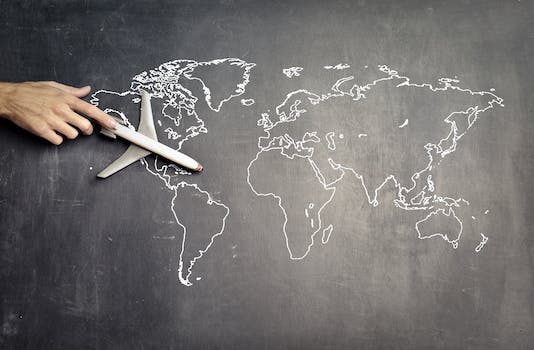
How Much Does a Travel Guide Cost: A Comprehensive Guide
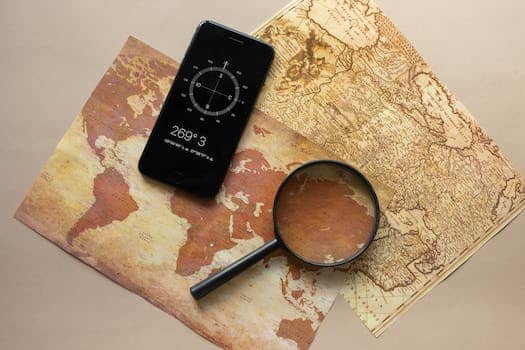
The Ultimate Guide to Finding Local Guides
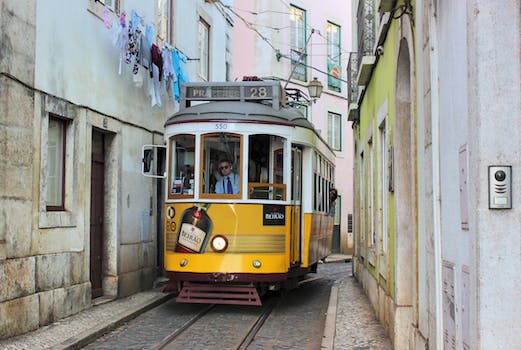
The Ultimate Guide to Local Travel: Discovering Hidden Gems in Your Area
Start typing and press Enter to search
- South America
- United States
- TRAVEL GEAR
- Privacy Policy

- PHILIPPINES
- NETHERLANDS
- UNITED STATES
- OFF THE BEATEN PATH
- Responsible travel
- Animal tourism
- Eco friendly products
- Interview series
Most Popular Posts , RESPONSIBLE TOURISM , Sustainability , TRAVEL TIPS
How to travel locally: a responsible guide to local travel.
For many, the only way to get on an adventure these days is to travel locally. And there are so many benefits of traveling locally both for the communities, for yourself, and for the small local tourism businesses .
As the travel addict I am, I have always traveled locally during weekends, no matter where I have lived. My biggest freedom has always been my car.
Not because I don’t enjoy public transport, but with limited of time in the weekends, it gives the freedom to travel off the beaten path, as well as when and where I want. It also makes it easy to get to campgrounds to save money on accommodation.
While I’ve been living in Spain, another important factor for me to have a car, is that I can’t bring my dog Ayla on buses and trains without having her in a cage. And trust me, I can’t carry an 18 kilos dog in a cage plus my own stash.
Growing up with most of my family abroad, also made me explore a lot of the “touristy” things whenever we had family visits. This is something I’ve definitely taken with me in life and that I enjoy a lot.
So while I can’t travel far, I like to travel near. There is so much to explore no matter where you live so I made this guide to make it easier for you too to travel locally wherever you live. With or without a car.
Disclosure: This post may contain affiliate links. That means that if you make a purchase through one of those links, I will get a small commission at no extra cost to you. If you have any questions about these services or products, feel free to ask me.
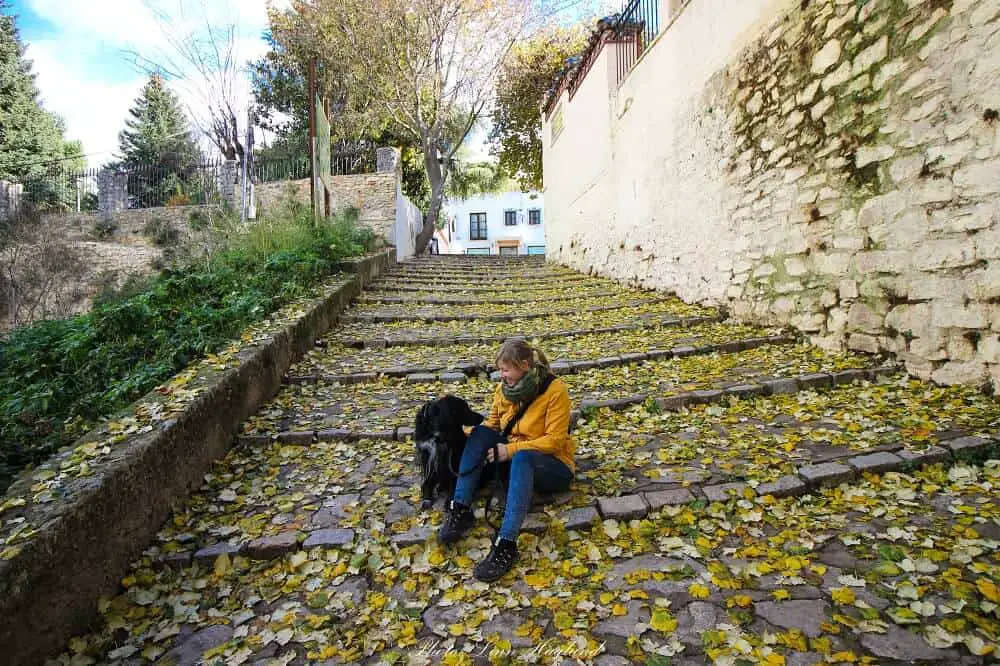
Benefits of traveling locally
Before we look at how to travel locally, I want to highlight some of the amazing benefits of local travel. It’s always exotic to travel far away, but believe me, you can find quite so exotic experiences close to home too. Most countries are very different from place to place.
Like where I live, in Spain, I can go to the desert, to the beach, to pine forests, or to treeless mountain tops. I can explore rivers, canyons, islands, and caves. The villages in Andalusia are completely different from the villages north in the country. Architecture change and so does customs, fiestas, and traditions.
You might not have the same in your country, but I’m sure you have a lot of variety to explore if you look for it. Let’s look at the benefits of local travel.

While it might be fun to travel to another continent and different culture, there is no denying that plane tickets are expensive and the cost of travel is high.
You can save quite a lot of money by traveling locally as the travel distance is shorter. Whether you pay for petrol or the bus, it is definitely cheaper than getting to and from the airport, flights, etc.
But you can also bring food from home if you’re staying in an apartment with kitchen or a campground.
Since you know the language and the norms of your country, you are highly unlikely to be scammed too. Not a bad thing!
Eco friendly
While you travel by land (or boat if you go to an island), you are way more eco friendly than if you travel by air. With public transport being the most eco friendly transport, you shouldn’t feel guilty about driving a car either.
There are also shared drive opportunities like BlaBlaCar in Europe, which gives you the opportunity to take passengers. That way you share the costs and the carbon emissions per person.
In need of an eco friendly backpack? Find the best ones here.
Learn about your local area
I’m sure you can still learn a lot about your local area’s history and traditions. I know I always learn new things when I’m out traveling locally.
Either because I talk to locals where I go or because I visit a museum or a landmark. Often, I visit natural areas where there are signs with information about the history, geography, flora, or fauna in the area.
You can also go on guided city tours and learn a lot from them! You might even be surprised by what you learn.
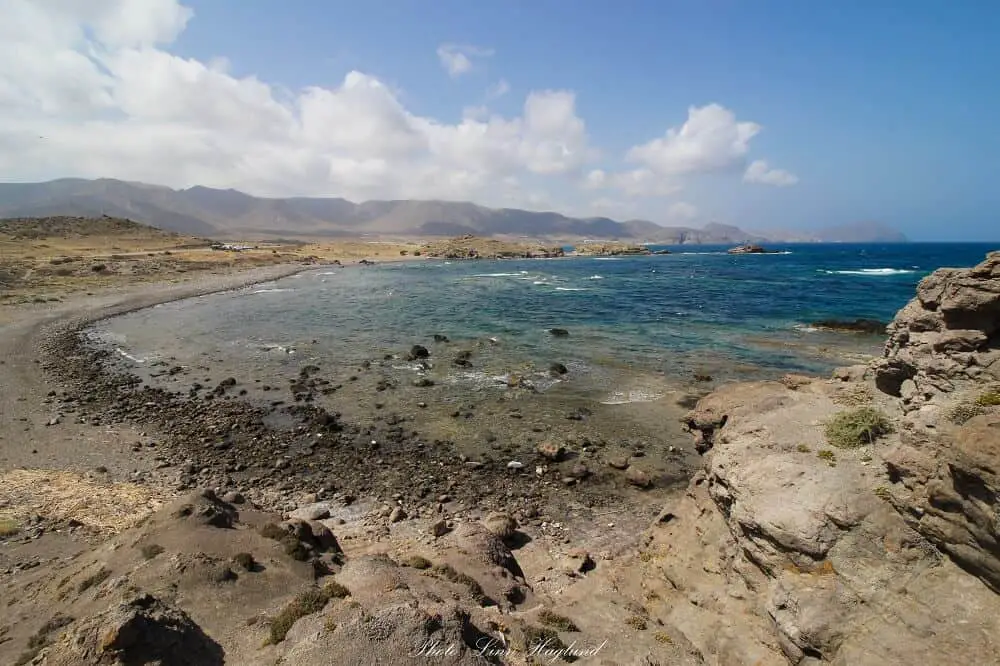
Support small local businesses
By traveling locally, you will also support small local businesses like restaurants, cafes, and museums. Especially post Covid19, they are in great need of support as international tourism isn’t the greatest.
Look for local artists and artisan shops where you go, have a chat with them about their work, and buy a new piece of art for your home or as a gift.
Choose small locally owned accommodation to make sure the money for your stay remains in the village, town, or city you’re visiting.
Discover the beauty of your own backyard
Finally, there is nothing like really discovering the beauty of your own backyard! I talk with so many people that overlook what they have at home. Think about what you like about traveling abroad and look for that in your own country.
You might not have palm trees and beaches, but you might have lakes and rivers. You might not have mountains of 5000 meters of altitude, but I’m sure you have a smaller top you can walk, unless you live in Denmark.
Denmark’s highest natural spot is actually only 170,89 meters (561 ft.) above sea level. But make sure you at least get there if you do live in Denmark!
You can Google tourist spots in your own country and check out if you have been everywhere (most likely you haven’t).
How to travel locally
There are so many places you can discover close to home no matter where you live, I’m sure there is a great variety in nature scene, many undiscovered towns and cities, and new corners of your own city you might not have explored yet.
Get on the train
One great way to travel locally is to jump on the train and see where it takes you. You can take the train for days and weeks and jump off random places.
I love to see on Google Maps where the train is heading and look up different places on the way to see if I want to explore any of them.
Getting the train is a really relaxing way to travel as you can listen to music, read a book, look out of the window, chat with other passengers, or watch a movie on your phone or tablet.

MAKE SURE TO CHECK OUT:
20 Best Travel Books To Fuel Your Wanderlust
Go on a road trip
If you prefer to take the car instead of the train, go on a road trip! Check on the map for places you haven’t been before or places you would love to revisit and make a fun road trip route across your country.
Or if you don’t want to plan too much, then don’t! Just look up places as you go, take a spontaneous turn towards a sign that seems fun, or ask the locals on the way where they recommend you visit next.
The advantage of traveling by car, is that you can leave when you want to without being attached to train times or train destinations.
As I said before, the car gives so much freedom and you can get to places really off the beaten path!
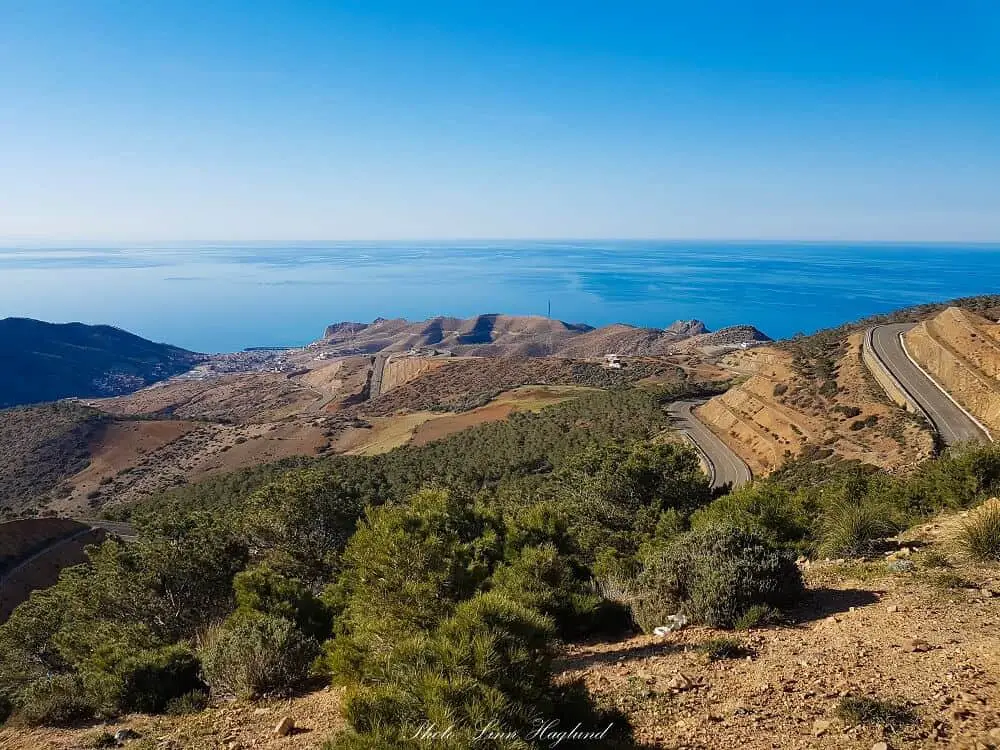
Going camping is a great and cheap way to travel locally. Some countries even allow free camping in nature which makes it a great combination with hiking or a few days at a lake. You can even do a road trip and camp different places along the way.
Camping definitely helps keeping the costs low and whether you’re at a camp ground or in nature it will really help you wind down. If you travel by car and explore different places, it gives a completely different view on your destination.
When I go camping it’s like the world around me slows down and I can really enjoy the moment as the distractions of the material world are minimized.
READ: Eco friendly camping gear list and sustainable packing list & accessories
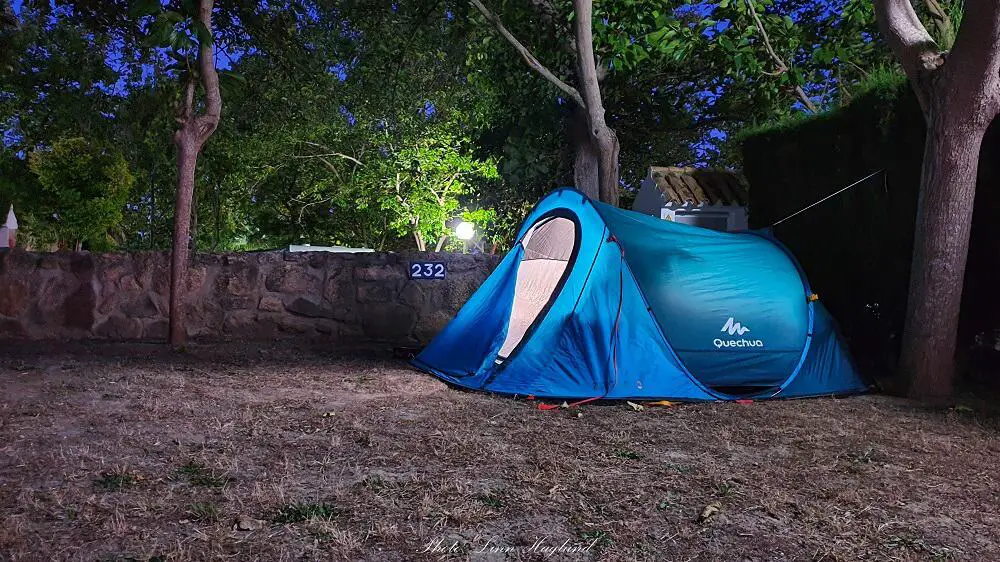
Go beach camping
If you have beaches in your country where you are allowed to camp, there is nothing better than beach camping!
Waking up to the waves crashing onto the beach, running down to the water in the crisp morning air jumping into the clear, cooling water.
Spending the days snorkeling, jumping from cliffs, and having a barbecue on the beach before sunset when it’s time to make a bonfire and get out the guitar for some tunes.
I know I want to go beach camping right now!
If you don’t have beach, you might have a lake with a beach or nearby forested area where you can pitch the tent.

Hit the hiking trails
I’m sure there are plenty of hiking opportunities you can explore wherever you live. It doesn’t have to be mountain tops, it could be forest hikes or coastal hikes.
Hiking is a great activity I often see people do only when traveling to far away destinations. However, the benefits of hiking are huge both mentally and physically.
Who doesn’t love to explore new spots in nature? I know I do! I don’t think there has been one single year here in Spain where I haven’t discovered one or more new hiking trails that have blown me away!
When I lived in Norway the same. So do some research, get out there, and hit those trails!
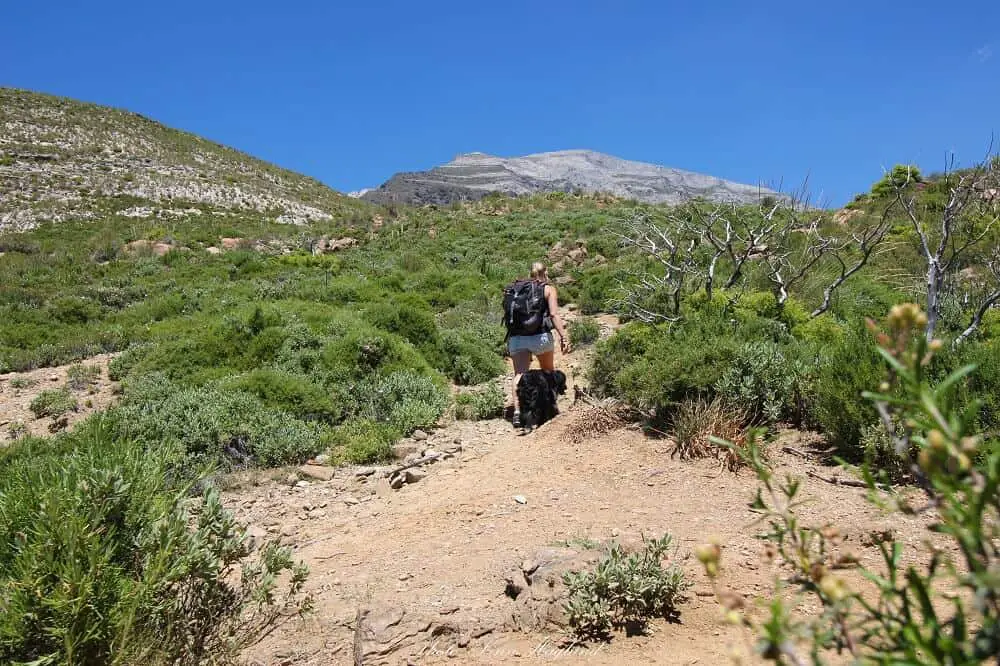
Visit museums
If you’re not much of an outdoorsy person, there are still plenty of things to do locally. Have you been to all the museums in your region? I’m sure you’ll find something of interest that you haven’t explored yet.
Either in the city you live in or the surrounding cities. There are so many different kinds of museums where you can learn about your country’s history and background but also about the city or place the museum is situated.
Visiting museums is also a great way to support tourism businesses.
Explore new beaches
If you live in a country with beaches, spend the summer exploring as many new beaches as possible. What I love about beaches is that they are all different and have their own charm.
Especially the ones off the beaten path, the virgin beaches that are a bit harder to get to. Search on the internet and look past the first and second page on Google and you might find some real treasures.
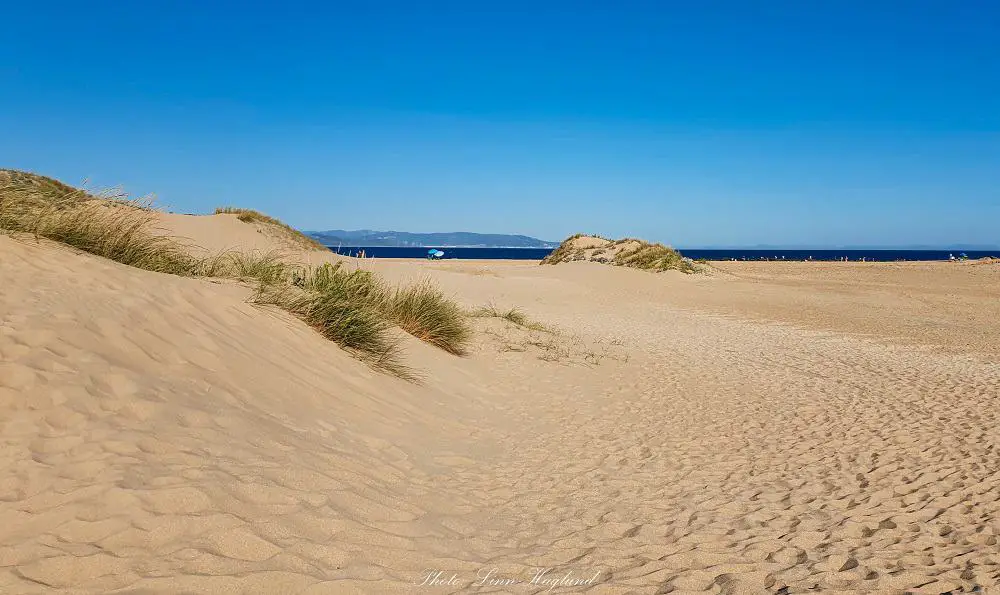
Discover rivers and lakes
Rivers and lakes are always a winner. Whether it’s a hot summer day or they’re capped in ice and snow in winter. I love looking at Google Maps and search for those blue spots on the map and research if they are worth visiting.
They usually are. Where the water flows, there is life. It’s dynamic and beautiful and it never fails.
In the summer months, bring your swimwear and towel and go searching for the best swimming holes!
Maybe you even have rivers that go through canyons that you can hike?
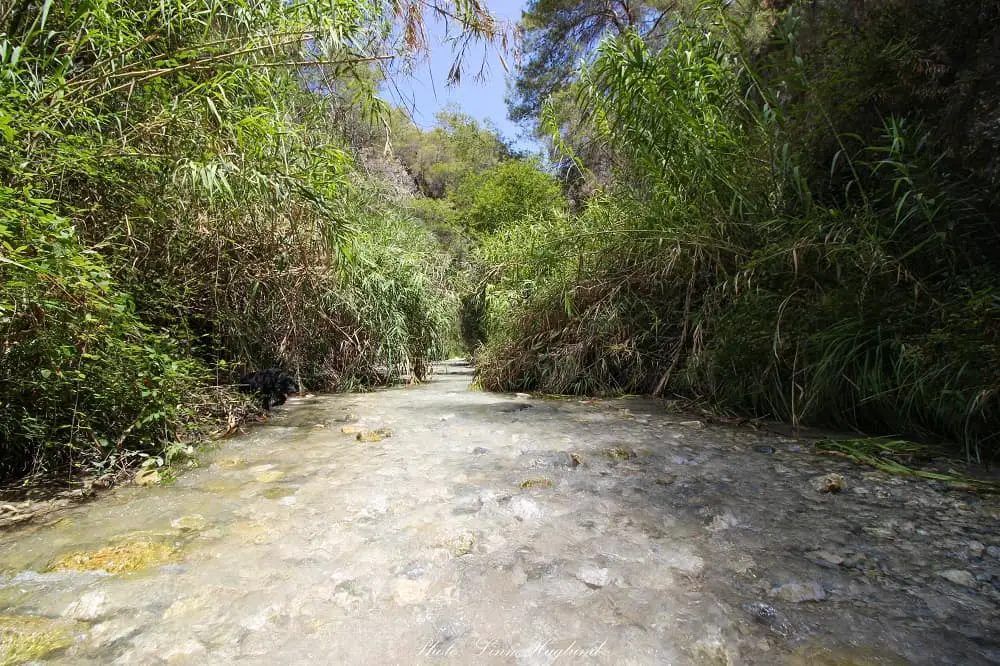
Uncover your local national parks
Do you have any national parks or nature reserves around where you live?
These are usually quite big areas and even though you’ve been there before, I’m sure you haven’t been everywhere!
Go explore, find new hidden corners that you haven’t been to before or revisit you favorite spots. It’s always good to be in nature. If you do a bit of research before you go, you might learn something new about it too.
I find that I often know very little about the places nearby. They’re just there. And I enjoy them, but as I don’t travel far to get there I hardly ever research them up front. It is definitely worth it though and since I started this blog, I have done it a lot more!
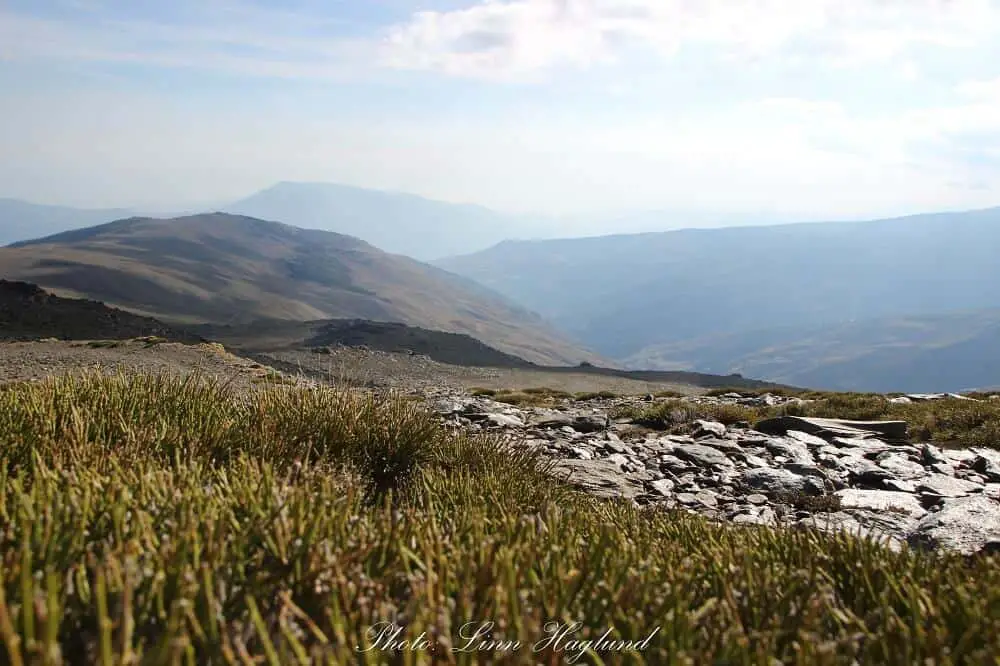
Be a tourist in your own city
If you live in a city, spend time exploring it as if it was the first time you visited. Stay in a local hostel or hotel and visit all the attractions you would have visited if you were a tourist.
Join local guided tours, visit museums, landmarks, and viewpoints. Try out new restaurants and cafes. Try your city or country’s specialties that you normally would only make at home. Visit a new neighborhood.
Talk to people you meet as you would have if you were traveling. Be curious and see your city with new eyes. It is incredible how rewarding this can be!
You could also explore the city in a different way by longboarding, rollerblading, or biking around if the city is suitable for it.
A few years ago I went longboarding around Malaga city and it was really nice to see the city from a different perspective.
By exploring your own city as a tourist, you might even find new favorite corners that you will return to.
Visit new towns and cities
I’m sure there are towns and cities you haven’t visited yet that have a lot to offer! Whether you’re into architecture, history, cafe life, food, or shopping, it’s always fun to explore a new town, village, or city.
Get a map, find out what the best tourist spots are, look for hidden treasures, and wander the back streets.
Spend time, find its charm, and enjoy!
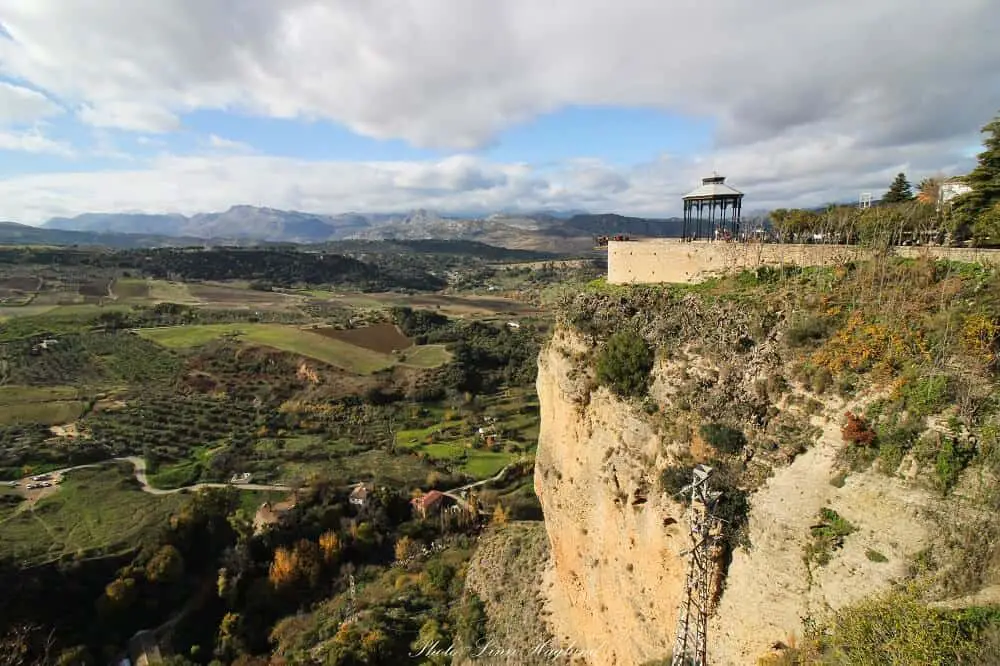
Local travel should also be done responsibly
Remember that even though you travel locally, it’s important to practice responsible tourism . There are always different norms in different parts of the country and different cities and towns can have different rules.
As an example, when I went to Toledo earlier this year, I had to pour water over Ayla’s pee. I’ve never heard of that other places in Spain. But it was still something I did every time she sat down doing her business.
Bring a reusable water bottle
Whether you travel locally or not, a reusable water bottle is always a great way to avoid single use plastic bottles. I always bring one with me.
Locally, I use the Brita filtered water bottle or the Greens Steel water bottle . Both bottles keep the temperature of the water all day which is awesome!
Tap water in Spain is safe to drink and I don’t have to filter it, but it never harms to do it. The Brita bottle is also easier to drink out of if I’m driving as I can open it with pushing the button on the lid and I don’t have to tip it to drink.
Avoid animal tourism
When traveling locally it is just as important to avoid unethical animal tourism. This could be horse carriage rides, visiting zoos, and aquariums. Some places you can ride animals as a tourist attraction and you should most likely stay away from that activity too.
If animals are exploited or asked to do things that are not natural to them so that tourists (local or not) can enjoy them, then it’s not ethical.
You can read more about unethical animal tourism and what to do instead here .
Respect the environment
If you are out exploring national parks, beaches or mountains it is natural to think about respecting the environment by staying on the marked trails, not leaving your waste behind and also pick up after others when you come over it.
But also in the cities and small towns and villages you should make an effort to keep it clean.
It is a good idea to always have a bag for rubbish in your backpack or bag so that you can store it there if it’s long until the next rubbish bin. If you are in a city where you can sort your waste, make sure you follow the guidelines.
There are also a few things you can bring with you to avoid plastic usage other than a reusable water bottle, like a metal straw and a tote bag for shopping.
While camping, try to bring as little single use plastic elements as possible. You can take plates, cups, knives, and forks from home.
Reflections on local travel
There are so many fun ways to travel locally and there is no reason not to do it as often as you can. For me, it helps to keep my wanderlust in balance when I’m “stuck at home” and I’m sure it will help you too!
Besides, there are so many positive benefits of local travel that there is no reason not to.
Let me know in the comments if you like to travel locally and if you have any other ideas than the ones already mentioned!
Did you like this? Pin it for later!

Email address:
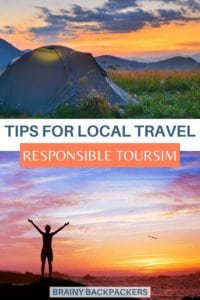
30 thoughts on “ How to travel locally: A responsible guide to local travel ”
I absolutely LOVE this!!!! We can help to make the difference and support our local communities by traveling localy. I live in a beautiful area in Florida and I haven’t had the chance to explore. I am starting to explore more now and be alocal tourist in my own town. Thanks for this article.
I’m so glad you liked it! Florida must be amazing to explore, make sure to find some hidden gems for when I come and visit in the future 🙂
I would love to start travelling more locally, I never realized how beautiful my own province was. You’re so right that it also saves a lot of money, and is just way less stressful!
It’s easy to take what you have in your own backyard for granted. I hope you get to do some amazing local travel this year! 🙂
Sometimes we do not even realize the gems that we have in our backyard! Now it’s a good time to do it! Love the tips!
I know, but there are so many pleasant surprises once you do explore them:)
It can be so easy to assume that travel adventures always need to take place in a foreign country and to forget to explore your own backyard. We’re looking forward to discovering more local gems in the UK this summer.
The UK have so many wonderful places to explore! I’m sure you will have an amazing summer:)
Thank you for this post…. I think if the lack of travel has taught us anything, it’s how much we LOVE travel!! For me, it’s also showed me that I need to be a better traveler. I’m always looking for ways to be a more responsible traveler, so loved all o your tips… and also really appreciate you calling out animal tourism.
Thank you, Shelley! I really appreciate your comment. Becoming a better traveler is a never ending process but it is always great to learn new things and to realize how much you change to the better with time:)
I love this. I’m actually traveling locally this weekend. Sure it’s sad I can’t go further but I’m super excited to see some of my own backyard this year
I know the feeling! I always want to go as far as possible;) But while that isn’t an option there is no reason not to be a local explorer. It actually feels just as good while you’re traveling locally:) I hope you enjoy your weekend!
We’ll all be looking for local travel destinations for the next little while :). I love jumping on a train and heading to a place I’ve never been before. We do these things overseas all the time. Why not do them at home? Thanks for the inspiration
Exactly! It’s weird we are more adventurous abroad than at home right? I hope you get to discover many beautiful local train journeys and new destinations! 🙂
I love this! I’ve been advocating for local tourism too, now more than ever. We tend to be so focus on ‘exotic’ destinations that we often neglect to see the wonders of our own backyard. Great tips to start noticing it ?
Thank you, Coni! The thing is that if we go to new local places they can be quite exotic too 🙂
This is a great read about travelling locally, something I really should do more of!
Thank you! I really hope you take the advantage of it when you can:)
I’m a big advocate of local travel. I call them outdoor pocket adventures. I just did 25 hikes within 10 miles of home during the lockdown. Found some great places. Thanks for promoting local travel.
I love “outdoor pocket adventures”! Oh wow! You were lucky to be able to hike under lockdown, I would probably have done the same if I could have. We were confined to our house for nearly 3 months. It’s just been 2-3 weeks since we could actually go out! So now it’s full on exploring again:)
I love camping and I can’t wait to discover more of my own country, Romania. There are so many beautiful places that I need to visit! Thanks for all your recommendations. They will be really useful
Thank you! I’m sure you’ll have a great time exploring Romania! I was meant to go there in April but the tickets obviously got cancelled. I hope to get there one day and maybe you’ll have some great tips for me then:)
These are great tips, we love to travel locally and eco-friendly too! 🙂
Thank you! Happy to connect with other conscious travelers:)
I love the idea of getting to know your own backyard and supporting local businesses. Frankly, we have all got so spoilt over the past few years that we do not see the beauty that is around us (when I say ‘we’ I very much include myself too). I love your take on traveling locally and will be incorporating your tips and tricks!
Thank you, Caroline! I really hope you get to explore a lot of local beauty this summer:)
Even before the pandemic I loved local travel because it is sustainable and often overlooked. Now with the pandemic I can see that being the norm for a while. You’ve written a lot of great tips, especially the tips to make sure you are still a responsible traveler. Great post and thanks for sharing!
Thanks for sharing these lovely tips Linn. Fabulous post!
Thank you, Hussain!
Comments are closed.

How to Travel Like a Local – 25 Secrets
- In the City
What’s the difference between visiting a place and truly experiencing it? These days, it’s common to see travelers ditch tours and embrace more authentic experiences. They’re dropping the “tourist” label, instead opting to “travel like a local”… but what does that really mean?
This is our fifth year of traveling full-time and we’ve made plenty of mistakes along the way. But we’ve also mastered the art of traveling like a local and it’s had a major impact on our lives! Turns out, being a doer passionate about authentic travel experiences can teach you how to be a better local in your hometown, too. That being said, for those of who’d like to adopt the ways of a local, learn to blend in a little more and dig deeper into a destination– you’ve come to the right place!

A big thank you to Kleenex Wet Wipes for sponsoring this post. All opinions are always our own. Thank you for supporting the brands that make Local Adventurer possible.
13 Secrets on How to Travel like a local
1. let locals plan your day.
Tours can be great if you don’t have time to plan your trip, if new places make you nervous and you’d rather get your feet wet before diving in, or if you just want everything taken care of for you. However, it’s not the best way to see a city from the eyes of those who live there. So don’t be shy! Talk to locals and discover their favorite spots. Even if you are a thorough researcher, there are still great gems only the locals know about.
Ask your cab driver or the valet for restaurant recommendations instead of the concierge. Often times, hotels partnerships with local businesses and promote them exclusively. They also don’t want to send guests anywhere that might be off-putting or not as polished. Instead, talk to waiters, shopkeepers or doorman about the places they love–we’ve discovered some of the best Italian food by talking to our taxi driver. If we find particular restaurants we love, we’ve also asked the chef for their favorite eats in the city.
2. Or Even Better, Have a Local Friend Show You Around
When we visit a new destination, we always try to connect with old friends or go to places where a friend already lives. You can also make friends on forums, dating apps, and social media. Lately, we’ve met a lot of people through Instagram and they’ve become real life friends.
Besides the popular dating apps, you can also try these: Bon Appetour , Global Greeter Network , PartyWith , Skout , WithLocals .

3. Explore Neighborhoods vs Attractions
Rather than running all over the city to see different sights, try sticking to one neighborhood to get a feel for what it’s like to live there. It makes the trip way less stressful and more enjoyable too. When we visited NYC in the past, we had a love-hate relationship with it mainly because we were going all over the place. It wasn’t until we moved here and started exploring the neighborhoods that we really fell in love with the city.
4. Take Public Transportation
You should absolutely take public transportation in any city that has a good system, like London , NYC , or Tokyo . Yes, it can be intimidating if you’re not used to it, but it’s a great way to see the city and provides unique opportunities to interact with all sorts of locals. Plus, taking a bus or train is a great cost saver– even short trips can be incredibly expensive in some cities. You can make navigating local transit systems less intimidating by downloading transit maps and apps to your phone ahead of time.
Bonus transit tip: bring Kleenex Wet Wipes on your ride so you can clean yourself and germy surfaces!

5. Ditch Your Room Key
If you’re staying in a hotel, you’re most likely surrounding yourself with other tourists. While our friend was out in NYC for a play, he rented out an apartment on the Lower East Side for an extended time. Every time we visited, we left feeling like we’d visited their home. Staying in the rental let his family become familiar with the neighborhood too.
Note : In NYC, Airbnb’s are a little tricky. They’re technically only legal if you’re staying for a month or if the homeowner is present.
You can also try FlipKey or even smaller boutique hotels that give you more personalized service. In our experience, they gave us better recommendations.
6. Cook for Yourself
Most people eat out the whole time they travel, and we’ll admit that we usually do too. But we love visiting the neighborhood supermarket to pick up local snacks for friends back home. At local farmer’s markets, we love learning about the nearby farms.
7. Do More, Fret Less
When we’re out of town, we always bring along a few key necessities so we’re prepared for anything. Bringing these items with us gives us more time to explore new places, avoiding time consuming trips to the store for supplies or mid-day refreshes back in our room. That list includes sunblock, extra batteries, memory cards, cash, a map and items that serve a duel purpose and Kleenex Wet Wipes – they’re perfect for cleaning your hands and face after a sweaty day of exploration where running water is out of reach. Try them for yourself here .

8. Learn the Lingo
If you’re traveling to a foreign country, it always helps to learn a few basic phrases. Even if you’re nowhere near fluent, locals usually appreciate visitors who try to speak their language.
Even if you’re vacationing in a different state, try to pick up on the local lingo and pronunciation. Here are a few key examples:
- Calling San Francisco “San Fran” will surely annoy the locals.
- Houston St in NYC is pronounced “HOW-ston” instead of like the city in Texas.
- In Portland, Couch St is “COOCH” and Portlander’s like to remind visitors that Wilamette is “Will-AM-it Dammit.”
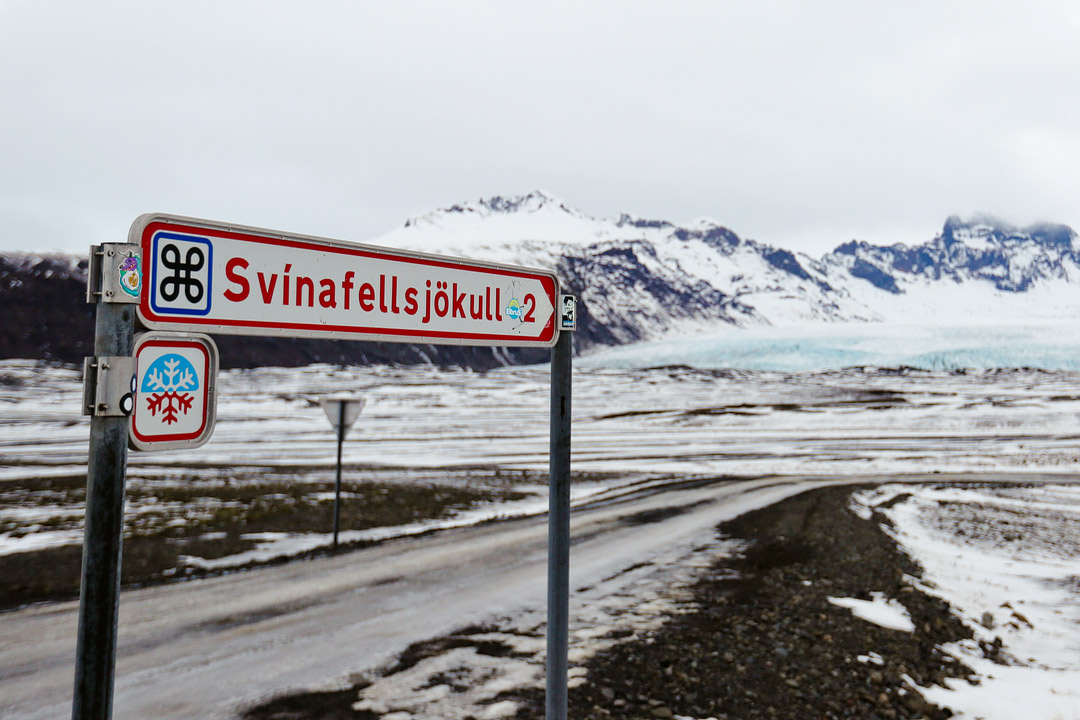
9. and the Dress Code
I remember when we first moved to NY, we still wore our bright red jackets and we would constantly get asked where we were visiting from. We soon learned that all black was the way to go in this city. Generally speaking, wearing neutral colors in most cities help you blend in.

10. Volunteer at a Local Organization
Volunteering when you travel is a great way to contribute to the local community while getting to know it. From building an urban garden in South America to conserving wildlife just a few states away, your options are endless. You’ll spend time instead of money doing something meaningful, learning about your new environment in a hands-on way no tour experience could offer.
We’ve taken trips with the sole purpose of giving back to local communities in the Philippines and Haiti and formed strong, meaningful relationships with locals because of it. Make sure to check the integrity of the organization you’re volunteering for through tools like Charity Navigator .
More recently, we like to volunteer at local animal shelters. If you’re ever in Atlanta and love cats and dogs, connect with FurKids .
11. Be Respectful
I wish this was obvious, but it seems like we always read or hear about another tourist doing something offensive or dumb. Remember to always respect the local culture, whether you’re far off overseas or just in another city. Each city and town has it’s own rhythm and feel, and sometimes all it takes is to pay attention to what’s going around you to figure out what that unspoken culture is.
12. Workout at a Local Gym
We hate working out, but we do like visiting different climbing gyms everywhere we travel. Whatever you’re into, whether it’s crossfit, yoga, or rock climbing , visit the local gym. It’s usually easy to start up conversations with the locals and get some insider tips too.
This was a climbing gym we visited in Tokyo.

13. Extend Your Stay
We still visit the popular and touristy spots when we visit a new destination, but if we can, we try to extend our stay so we can explore more of the city. Try slow travel like us!
We took this tip to heart when we decided to move to a new city every year. If there is a city you visit regularly, make it a point to explore a new spot every time you’re there rather than going to the same places again and again. This way it gives you time to get lost and wander.

If you’re headed to NYC, you can also check out: 21 Things You Need to Know Before Visiting NYC & Local Tips for Moving to NYC .
What does traveling like a local mean to you?
Did you enjoy this post? Pin it for later

ESTHER + JACOB
Esther and Jacob are the founders of Local Adventurer, which is one of the top 5 travel blogs in the US. They believe that adventure can be found both near and far and hope to inspire others to explore locally. They explore a new city in depth every year and currently base themselves in NYC.
You might also love
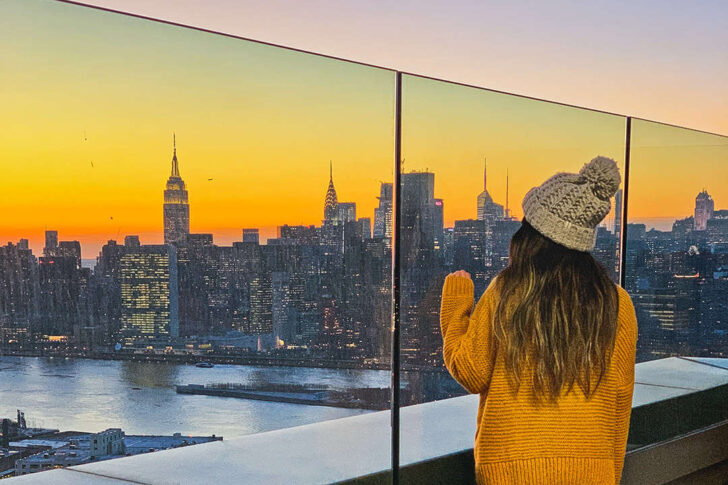
Moving to New York Advice { Local Tips for Living in NYC }

How to Move like a Pro: Moving Tips and Checklist

21 Things You Must Know Before Visiting Morocco Travel Tips
Leave a reply cancel reply.
This site uses Akismet to reduce spam. Learn how your comment data is processed .
Winter is here! Check out the winter wonderlands at these 5 amazing winter destinations in Montana
- Travel Tips
What Does Local Tourism Mean
Published: December 12, 2023
Modified: December 28, 2023
by Genni Wellman
- Plan Your Trip
- Sustainability
Introduction
When it comes to exploring new destinations and experiencing different cultures, there is a growing trend towards embracing local tourism. Local tourism, also known as community-based tourism or grassroots tourism, is all about immersing oneself in the local community and getting a genuine taste of the destination.
Unlike traditional tourism, which often focuses on popular tourist attractions and staying in mainstream hotels, local tourism offers a more authentic and enriching experience by connecting travelers with local residents, traditions, and customs. It allows visitors to go beyond the surface level and truly understand the essence of a place.
Traveling as a local tourist means venturing off the beaten path, exploring hidden gems, interacting with locals, and contributing to the local economy. It is a way to support sustainable tourism practices, preserve cultural heritage, and promote community development.
In recent years, local tourism has gained significant popularity due to various factors. Firstly, there is a growing interest among travelers in seeking unique and meaningful experiences. Many people are no longer satisfied with superficial sightseeing and are eager to engage with locals and learn about their way of life.
Secondly, the rise of social media has played a crucial role in promoting local tourism. Travelers are sharing their experiences and recommendations online, which influences others to follow in their footsteps. This word-of-mouth promotion has helped uncover lesser-known destinations and contributed to their growth.
Lastly, travelers are becoming more conscious of the impact of their choices. They are looking for ways to minimize their carbon footprint, support local economies, and preserve cultural heritage. Local tourism aligns perfectly with these values, as it allows visitors to have a positive impact on the communities they visit.
In this article, we will delve deeper into the concept of local tourism, its importance, benefits, challenges, and strategies for promoting it effectively. We will also explore successful examples of local tourism initiatives from around the world. So, pack your bags and get ready for a journey into the heart of local tourism!
Definition of Local Tourism
Local tourism can be defined as a form of travel that focuses on immersing oneself in the local community and culture of a destination. It emphasizes grassroots experiences, connecting travelers with the local residents, traditions, and customs of a place. Unlike traditional tourism, which often revolves around well-known tourist attractions and commercial establishments, local tourism highlights the unique aspects of a destination that are not as widely known or explored.
Local tourism goes beyond just visiting a place; it aims to provide travelers with an authentic and immersive experience. It involves staying in locally-owned accommodations, dining at neighborhood restaurants, shopping at local markets, and participating in community events. It encourages travelers to engage with the local population, learn about their way of life, and contribute to the local economy and community development.
One of the key aspects of local tourism is sustainability. It promotes responsible travel practices that minimize the negative impact on the environment and cultural heritage. By supporting small businesses and local initiatives, visitors help to preserve and promote the cultural heritage of a destination. In return, they gain a deeper understanding of the local culture, traditions, and history.
Local tourism can take many forms, depending on the destination and the interests of the traveler. It could involve exploring rural villages, participating in traditional crafts or art workshops, learning about local cuisine, or engaging in cultural performances. The focus is on creating meaningful connections and experiences that leave a lasting impression on both the traveler and the community.
Overall, local tourism offers a unique and alternative way of experiencing a destination. It allows travelers to go beyond the surface level and truly understand the essence of a place through local interactions. By embracing local tourism, travelers not only enrich their own travel experiences but also contribute to the well-being and sustainability of the communities they visit.
Importance of Local Tourism
Local tourism plays a crucial role in the development and sustainability of a destination. It offers numerous benefits, both for the travelers and the local communities. Let’s explore why local tourism is important.
1. Preserving Cultural Heritage: Local tourism helps to preserve and promote the unique cultural heritage of a destination. By supporting local artisans, craftsmen, and cultural initiatives, travelers contribute to the preservation and transmission of traditional customs, practices, and knowledge from one generation to another.
2. Economic Advancement: Local tourism has a significant economic impact on communities. By choosing local accommodations, restaurants, and businesses, travelers channel their spending directly into the local economy. This supports job creation, entrepreneurship, and overall economic development, particularly in rural areas that may otherwise struggle to attract visitors.
3. Sustainable Development: Local tourism promotes sustainable and responsible travel practices. It encourages visitors to reduce their carbon footprint by supporting environmentally friendly initiatives, such as eco-lodges, farm-to-table dining, and nature conservation projects. By minimizing negative environmental impacts, local tourism helps to safeguard natural resources for future generations.
4. Authentic Experiences: One of the key benefits of local tourism is the opportunity to have authentic and immersive experiences. Travelers get the chance to go beyond the typical tourist attractions and interact with the locals. This fosters a deeper understanding of the local culture, traditions, and way of life.
5. Community Empowerment: Local tourism empowers local communities to take control of their own development. By involving local residents in tourism activities, they gain a sense of pride and ownership. This stimulates community involvement, leading to increased social cohesion, cultural appreciation, and self-sufficiency.
6. Diversifying Tourism Offerings: Local tourism helps to diversify the tourism offerings of a destination. It brings attention to lesser-known places, encourages the development of new tourism products and services, and promotes a more balanced distribution of visitors. This reduces the strain on overcrowded tourist hotspots and helps to distribute economic benefits more evenly.
7. Enhancing Sustainability: By supporting local tourism, travelers contribute to the long-term sustainability of a destination. They help to maintain the unique character and authenticity of the place by fostering cultural pride, environmental protection, and social well-being.
Overall, local tourism is essential for the preservation of cultural identity, economic growth, and sustainable development. By choosing to travel as local tourists, we can make a positive impact on the communities we visit while enjoying enriching and meaningful experiences.
Benefits of Local Tourism
Local tourism offers a wide range of benefits, both for travelers and the local communities they visit. Let’s explore some of the key advantages of embracing local tourism.
1. Authentic Experiences: One of the major benefits of local tourism is the opportunity to have authentic, off-the-beaten-path experiences. Travelers can immerse themselves in the local culture, traditions, and way of life, providing a deeper understanding and appreciation for the destination. By interacting with locals, participating in community activities, and exploring hidden gems, travelers can create lifelong memories and unique stories to share.
2. Cultural Exchange: Local tourism fosters cultural exchange between travelers and local residents. It encourages meaningful interactions, allowing visitors to learn firsthand about different cultures, traditions, and perspectives. This promotes cross-cultural understanding, tolerance, and appreciation, breaking down barriers and creating bridges of friendship and empathy.
3. Support for Local Economies: When travelers engage in local tourism, they directly contribute to the local economy. By staying in locally-owned accommodations, dining at local restaurants, and supporting local businesses, travelers help create jobs and stimulate economic growth. This income directly benefits the local community, improving the quality of life for residents and encouraging entrepreneurship.
4. Preserving Cultural Heritage: Local tourism plays a vital role in preserving the cultural heritage of a destination. By supporting local artisans, craftsmen, and cultural initiatives, travelers contribute to the survival and continuation of traditional customs, practices, and craftsmanship. This helps maintain the unique identity and authenticity of a place and ensures that cultural heritage is passed down to future generations.
5. Environmental Sustainability: Local tourism promotes sustainable travel practices, minimizing the negative impact on the environment. By supporting eco-friendly initiatives, such as organic farming, renewable energy, and nature conservation projects, travelers help protect the natural resources and biodiversity of a destination. This ensures the preservation of natural landscapes and habitats for future generations to enjoy.
6. Strengthening Communities: Local tourism empowers local communities and strengthens social bonds. It encourages community involvement and participation in tourism activities, fostering a sense of pride and ownership. This strengthens social cohesion, cultural identity, and local resilience, creating a sustainable and inclusive community.
7. Unique and Personalized Experiences: Local tourism offers personalized experiences tailored to individual preferences and interests. Whether it’s exploring local markets, participating in cooking classes, or engaging in cultural performances, travelers can create a customized itinerary that aligns with their desires. This allows for more meaningful and memorable experiences that go beyond the typical tourist attractions.
In summary, local tourism provides a multitude of benefits, including authentic experiences, cultural exchange, economic support, cultural preservation, environmental sustainability, community empowerment, and personalized experiences. By embracing local tourism, travelers can make a positive impact on the destinations they visit while enjoying enriching and rewarding experiences themselves.
Challenges of Local Tourism
While local tourism offers numerous benefits, it also faces various challenges that need to be addressed for its successful implementation. Let’s explore some of the challenges associated with local tourism.
1. Infrastructure and Facilities: Local communities may face challenges in providing adequate infrastructure and facilities to accommodate the needs of tourists. Limited transportation options, lack of quality accommodations, and limited access to amenities can deter travelers from choosing local tourism. Investment in infrastructure development is crucial to ensure a comfortable and convenient experience for visitors.
2. Limited Awareness and Marketing: Local tourism initiatives often struggle with limited awareness and marketing efforts. Many travelers may be unaware of the unique experiences and attractions that local communities offer. Lack of effective marketing strategies and presence in tourism platforms can hinder the visibility and promotion of local tourism opportunities.
3. Balancing Sustainability and Commercialization: Local tourism needs to strike a balance between sustainable practices and commercialization. As tourism grows, there is a risk of overcommercialization and loss of authenticity. It’s essential to implement sustainable tourism practices that protect the local environment, culture, and traditional way of life, while still generating economic benefits for the community.
4. Preserving Cultural Integrity: Maintaining the cultural integrity of a destination can be a challenge in the face of increased tourism. Local communities need to find ways to protect their cultural heritage and prevent it from being diluted or commodified. Sustainable tourism practices, community involvement, and responsible visitor behavior can help preserve the cultural authenticity of a place.
5. Capacity Building and Training: Local tourism initiatives require appropriate training and capacity building for community members involved in tourism-related activities. This includes training in hospitality, customer service, cultural preservation, and environmental conservation. Building the necessary skills and knowledge will help ensure a high-quality experience for visitors and enhance the overall sustainability of local tourism.
6. Seasonality and Tourism Dependence: Many local tourism destinations heavily rely on seasonal visitation, which can lead to economic fluctuations and dependency on a particular time of the year. Diversifying tourism offerings and extending the length of the tourism season can help mitigate this challenge and create more stable economic opportunities for local communities.
7. Balancing Local Needs and Visitor Expectations: Local tourism initiatives must strike a balance between meeting the needs and expectations of both local residents and visitors. It is essential to consider the social, cultural, and economic impacts on the community while ensuring a positive and satisfying experience for travelers.
Addressing these challenges requires collaboration and cooperation between local communities, government bodies, tourism organizations, and visitors. By overcoming these obstacles, local tourism can thrive and continue to provide meaningful experiences for both travelers and locals alike.
Strategies for Promoting Local Tourism
Promoting local tourism requires a strategic approach that encompasses various aspects, from marketing and community engagement to sustainable development. Here are some effective strategies that can be employed to promote and support local tourism initiatives.
1. Collaboration and Partnerships: Foster collaboration among local stakeholders, including community members, tourism organizations, local businesses, and government authorities. By working together, they can create a unified vision for local tourism and develop joint marketing campaigns, shared infrastructure, and cooperative ventures that benefit the entire community.
2. Engage the Local Community: Involve and engage the local community in the tourism development process. Encourage their participation in decision-making, training programs, and tourism-related activities. This not only creates a sense of ownership but also ensures that the community’s perspectives, traditions, and expertise are respected and valued.
3. Develop Authentic Experiences: Emphasize the unique and authentic experiences available in the local community. Highlight the cultural heritage, traditional craftsmanship, local cuisine, and lesser-known attractions that differentiate the destination from mainstream tourism. This can be done through storytelling, local guides, immersive activities, and showcasing the local way of life.
4. Digital Marketing and Online Presence: Leverage digital platforms and social media to reach a broader audience. Create a website or online platform dedicated to promoting local tourism, featuring captivating visuals, informative content, and user-generated content. Engage with travel influencers, bloggers, and online communities to generate buzz and create awareness about the destination.
5. Sustainable Tourism Practices: Prioritize sustainable tourism practices that minimize the negative impact on the environment, culture, and community. Encourage eco-friendly initiatives such as waste reduction, renewable energy, and responsible tourism guidelines. Showcase the destination’s commitment to sustainability, which can attract eco-conscious travelers seeking meaningful and responsible travel experiences.
6. Cultural Preservation and Education: Implement programs that preserve and promote the local culture and heritage. This can include cultural festivals, art exhibitions, workshops, and heritage tours. By educating both locals and visitors about the importance of cultural preservation, there is a greater appreciation for the destination’s unique identity and traditions.
7. Support Local Businesses: Encourage visitors to support local businesses by highlighting the benefits of shopping at local markets, staying in locally-owned accommodations, and dining at neighborhood restaurants. Promote the connection between local products, services, and the overall local experience. This creates economic opportunities for the community and ensures a more authentic and vibrant tourism sector.
8. Community-Based Tourism Initiatives: Initiate and support community-based tourism projects that allow visitors to directly interact with locals and learn about their way of life. This can include homestays, community-led tours, and volunteering opportunities. By actively involving the local community in tourism activities, visitors gain a deeper understanding of the destination while contributing to its sustainable development.
9. Visitor Education and Responsible Travel: Educate visitors about responsible travel practices, such as respecting local customs, traditions, and the environment. Provide guidelines on how to engage with the community respectfully and encourage them to be mindful of their behavior and impact on the destination. Empower them to be ambassadors for responsible travel and share their experiences with others.
10. Monitoring and Evaluation: Continuously monitor the impact of local tourism initiatives and evaluate their effectiveness. Collect feedback from visitors and the local community to identify areas for improvement and measure the success of promotional strategies. This data-driven approach allows for effective decision-making and the adaptation of strategies to changing needs and trends.
By implementing these strategies, destinations can effectively promote and support local tourism. This will not only benefit the local community but also provide travelers with unique and enriching experiences that leave a positive impact.
Examples of Successful Local Tourism Initiatives
Several destinations around the world have successfully implemented local tourism initiatives, showcasing the positive outcomes that can be achieved through community involvement and sustainable practices. Let’s explore some inspiring examples of successful local tourism initiatives.
1. The Guna Yala Indigenous Community, Panama: The Guna Yala community in Panama has embraced community-based tourism to preserve their culture and improve their livelihoods. Visitors can stay in traditional Guna-owned accommodations, learn about their customs and traditions, and engage in activities such as fishing, coconut harvesting, and traditional dance performances. Through controlled tourism, the Guna Yala community has been able to generate income while preserving their ancestral lands and way of life.
2. Kerala Backwaters, India: The Kerala Backwaters in India has implemented a successful community-based tourism model. Local residents offer homestays, boat tours, and cooking classes, providing visitors with an authentic experience while creating economic opportunities for local communities. The community-based approach has helped sustain the fragile ecosystem of the backwaters while promoting cultural exchange and supporting livelihoods.
3. The Sami Cultural Tourism Network, Norway: The Sami cultural tourism network in Norway has been successful in preserving and promoting Sami traditions and culture. Local Sami communities offer guided tours, reindeer sledding, and traditional handicraft workshops. Through these initiatives, visitors gain insights into Sami traditions and contribute to the economic well-being of the community. The network also works towards sustainable tourism development by respecting and protecting the environment and Sami cultural practices.
4. The Rimba Raya Biodiversity Reserve, Borneo: Located in Borneo, the Rimba Raya Biodiversity Reserve showcases how local tourism can contribute to environmental conservation. The reserve focuses on ecotourism, offering guided tours that highlight the importance of conserving the habitat and protecting endangered wildlife. Revenue from tourism activities supports reforestation efforts, local communities, and wildlife conservation initiatives.
5. The Maasai Mara Community Conservancies, Kenya: The Maasai Mara Community Conservancies in Kenya demonstrate the successful involvement of local communities in wildlife conservation and sustainable tourism. Maasai communities have established conservancies where visitors can go on guided safaris and experience Maasai culture and traditions. The conservancies have helped protect wildlife habitats, preserve cultural heritage, and provide alternative livelihoods for the Maasai people.
6. The Slow Food Movement, Italy: The Slow Food movement in Italy promotes local food culture and culinary heritage. It encourages travelers to experience local traditions and flavors by supporting local farmers, food producers, and chefs. Through events, festivals, and educational opportunities, the Slow Food movement enhances the overall tourism experience while promoting sustainability, local economies, and cultural preservation.
7. The Community-Based Homestays in Thailand: In several rural communities in Thailand, community-based homestays have been established to provide travelers with an authentic cultural experience. Visitors stay with local families, participate in daily activities, and learn about Thai customs and traditions. The income generated from homestays benefits the community, supporting local businesses and improving infrastructure and services.
These successful examples showcase the power of local tourism initiatives in preserving cultural heritage, supporting local communities, promoting sustainability, and offering unique travel experiences. They demonstrate the positive outcomes that can be achieved when local communities actively engage in tourism activities and collaborate with stakeholders to create a thriving and responsible tourism sector.
Local tourism offers a refreshing and authentic alternative to traditional tourism, providing travelers with immersive experiences that go beyond surface-level sightseeing. It emphasizes community engagement, cultural preservation, and sustainable practices, making it a valuable and meaningful way to explore a destination.
Throughout this article, we have explored the definition, importance, benefits, challenges, strategies, and successful examples of local tourism initiatives. We have seen how local tourism contributes to the preservation of cultural heritage, economic growth, environmental sustainability, and community empowerment.
Local tourism provides authentic and enriching experiences that create lasting memories for travelers. It connects visitors with local communities, allowing for cultural exchange and deeper understanding of different ways of life. By staying in locally-owned accommodations, supporting local businesses, and engaging in community activities, travelers play a vital role in the economic well-being of local communities.
However, local tourism also faces challenges that need to be addressed, such as infrastructure limitations, balancing sustainability and commercialization, and ensuring the preservation of cultural integrity. Through collaboration, community engagement, and responsible travel practices, these challenges can be overcome.
By promoting local tourism, destinations can diversify their offerings, reduce the strain on overcrowded tourist areas, and create a more sustainable and inclusive tourism sector. Travelers can contribute to the preservation of cultural heritage, support local economies, and gain unique insights into the local way of life.
In conclusion, local tourism is an invaluable and transformative way to travel. It allows us to step off the beaten path, connect with local communities, and make a positive impact on the destinations we visit. Through local tourism, we can foster cultural appreciation, economic growth, and environmental sustainability, ensuring a more vibrant and responsible future for the travel industry.

- Privacy Overview
- Strictly Necessary Cookies
This website uses cookies so that we can provide you with the best user experience possible. Cookie information is stored in your browser and performs functions such as recognising you when you return to our website and helping our team to understand which sections of the website you find most interesting and useful.
Strictly Necessary Cookie should be enabled at all times so that we can save your preferences for cookie settings.
If you disable this cookie, we will not be able to save your preferences. This means that every time you visit this website you will need to enable or disable cookies again.

What is a Local Tourist and Why You Should Become One?
Have you ever driven past that quirky roadside attraction and wondered what was inside?
Stumbled on a flyer for a festival in a nearby town and wished you could go?
Turns out, unlocking travel adventures doesn’t have to mean expensive flights and far-off lands.
This is where the “local tourist” comes in – someone ready to explore hidden gems and fresh experiences within their own region.
Embrace lower costs, support your community, and find unexpected wonder just a short trip from home.

What is a Local Tourist?
Types of local tourists.
- why is local tourism important?
Advantages of Local Tourism
Disadvantages of local tourism, how to be a local tourist, examples of local tourism experience, common mistakes to avoid as a local tourist, tips for planning a local tour, local tourist vs. traditional tourist.
- Researching local events and activities
- Finding off-the-beaten-path destination
- Exploring local cuisine and culture
- Take a different mode of transportation
- Talk to locals for recommendations
Wrapping Up
A local tourist refers to an individual who visits attractions, engages in tourism activities, or generally explores areas within their own country, state, or community, as opposed to traveling abroad.
This can include day trips to local attractions, staycations (where one stays at home but engages in leisure activities within driving distance), or short trips to other parts of their own country.
Forget exotic destinations and faraway lands – sometimes, the greatest adventures are closer than you think.
Enter the local tourist : a breed of explorer who rediscovers the magic of their own city, state, or region with fresh eyes.
Think beyond your daily routine. Imagine visiting local landmarks as if you’re seeing them for the first time.
Unearth hidden gems in your own neighborhood – a cozy cafe tucked away on a side street, a breathtaking park you’ve never explored, or an artisan workshop brimming with local flair.
Local tourism isn’t just about sightseeing, it’s about connecting. Strike up conversations with friendly shopkeepers, learn the stories behind historical sites, and savor the local cuisine with newfound appreciation.
It’s about rediscovering the soul of your own community and forging genuine connections with the people who make it unique.
So, ditch the suitcase and embrace the local adventure!
Weekend getaways to charming nearby towns, day trips to forgotten historical sites, or simply exploring a different corner of your city – the possibilities are endless.
Pack your curiosity, not your preconceived notions. Leave the tourist traps behind and unlock the magic waiting right in your own backyard.
You might be surprised by the hidden treasures and authentic experiences waiting to be discovered.
Remember, local tourism isn’t a vacation, it’s a mindset. It’s about appreciating the familiar with fresh eyes, supporting your community, and leaving a positive impact wherever you wander.
Are you ready to answer the call and become a local tourist in your own city? The adventure awaits!

Local tourism isn’t a one-size-fits-all adventure – it’s a vibrant tapestry woven with endless possibilities to match your unique desires.
Forget rigid categories; here’s how you can customize your local exploration :
1. The Foodie Forager
Indulge your taste buds! Embark on a culinary quest , savoring hidden gems like street food stalls, bustling markets, and hole-in-the-wall restaurants that locals frequent.
Uncover regional specialties, learn traditional cooking techniques, and connect with passionate food artisans. Your taste buds will thank you!
2. The History Hunter
Delve into the whispers of the past ! Explore historic sites, museums, and forgotten corners of your city, unearthing stories of bygone eras.
Join local walking tours led by passionate guides who bring history to life, or simply wander through charming neighborhoods and let the architecture tell its own tale.
3. The Adventure Seeker:
Crave adrenaline-pumping thrills? Local adventures await! Hike through hidden trails, kayak on pristine waterways, or challenge yourself with local outdoor activities.
Escape the city bustle and reconnect with nature, all while discovering breathtaking landscapes on your doorstep.
4. The Culture Connoisseur
Immerse yourself in the vibrant tapestry of local culture!
Attend festivals and celebrations, learn traditional crafts from artisans, or visit art galleries showcasing local talent.
Engage in conversation with residents, soak up the unique atmosphere, and discover the heart and soul of your community.
5. The Offbeat Explorer
Seek the unusual and unexpected! Explore abandoned buildings transformed into art spaces, visit quirky museums dedicated to unique themes, or follow intriguing rumors of hidden gems whispered by locals.
Embrace the unknown, embrace the offbeat , and discover a side of your city you never knew existed.
Why is Local Tourism Important?

Sure, tourist traps have their charm, but wouldn’t you rather discover the beating heart of a place?
That’s where local tourism steps in, offering a treasure trove of benefits that reach far beyond your own personal satisfaction.
Here’s why embracing the local scene matters more than ever:
1. Empowering Communities, Not Exploiting Them
Ditch the mass tourism model that often bypasses local communities.
Your choice to explore locally injects your dollars directly into the veins of the city, supporting family-run businesses, artisans, and cultural initiatives.
Think of it as an investment in the very soul of the place you’re visiting.
2. Sustainability Superhero
Forget the carbon footprint of long-haul flights! Local tourism encourages eco-friendly exploration.
Think cycling through hidden alleys, exploring local parks, or indulging in a picnic with fresh, regional produce.
Your green choices add up, making a positive impact on the environment you’re enjoying.
3. Preservation Power
Imagine wandering through a museum curated by locals, their stories breathing life into artifacts.
Local tourism promotes cultural heritage preservation, ensuring traditions and local knowledge are passed down to future generations.
You’re not just a visitor, you’re a temporary guardian of a unique cultural tapestry.
4. Beyond the Glitz, Into the Grit
Forget picture-perfect postcards – the real magic lies in the unexpected.
Local exploration lets you stumble upon hidden gems, charming cafes tucked away, and vibrant street art that tells the city’s authentic story.
It’s about peeling back the tourist veneer and discovering the raw, unfiltered beauty of a place.
5. Fostering Connections, Not Just Checkmarks
Ditch the impersonal “hello” at a crowded landmark. Local tourism opens doors to meaningful connections.
Strike up conversations with shopkeepers, join community events, or take a cooking class led by a local.
These authentic interactions create memories that linger long after your tan fades.
6. Your Own Backyard, a World of Wonder
Don’t underestimate the magic of your own city. Local exploration allows you to rediscover hidden corners, appreciate familiar sights with fresh eyes, and unearth forgotten neighborhoods.
Your own backyard becomes an exciting playground, waiting to be explored with a sense of curiosity and adventure.

Forget expensive plane tickets and tourist traps – there’s a hidden treasure chest waiting to be discovered right in your own backyard!
Embracing local tourism isn’t just about saving money (although that’s a sweet bonus!), it’s about unlocking a world of unique experiences and positive impacts that benefit both you and your community.
Here’s why ditching the traditional tourist path and becoming a local explorer is a win-win for everyone:
1. Experience Authenticity, Not Artificiality
Dive headfirst into the real deal! Ditch the commercialized tourist experiences and immerse yourself in the true spirit of a place.
Interact with locals, savor authentic cuisine that bursts with flavor, and participate in traditions that tell the story of your city.
No more manufactured souvenirs – here, you’ll discover unique treasures made with love by local artisans.
2. Empower Your Community
Every dollar spent at a local business stays local, directly impacting the people who make your city vibrant.
Support family-run cafes, charming boutiques, and independent artists – your choices have the power to empower livelihoods and fuel community development.
Remember, tourism dollars often bypass local communities, so choosing local is choosing to make a difference.
3. Go Green, Explore Keen
Ditch the carbon footprint of long-haul flights and embrace the eco-friendly side of travel.
Local tourism often involves shorter distances, meaning less environmental impact and a lighter step on our planet.
Imagine exploring hidden gems on a bicycle, soaking up the scenery on a local hike, or enjoying a picnic in a nearby park – sustainable adventures await!
4. Unearth Hidden Gems
Forget following the well-trodden tourist path and embark on a treasure hunt for the extraordinary!
Local exploration allows you to stumble upon charming cafes tucked away on side streets, discover scenic trails off the beaten track, and unearth historic landmarks forgotten by time.
Your city holds secrets waiting to be unveiled – become a local explorer and unlock them!
5. Preserve the Past, Shape the Future
By supporting local artisans, museums, and historical sites, you’re not just buying a souvenir, you’re investing in the future.
Local tourism helps preserve cultural heritage, ensuring traditions and stories are passed down to future generations.
Imagine supporting a local artist who keeps traditional crafts alive, or visiting a museum that tells the unique story of your city – you’re becoming a part of its legacy.
6. Escape the Crowds, Find Your Zen
Ditch the shoulder-to-shoulder crowds at popular tourist destinations and discover the serenity of local exploration.
Lesser-known spots offer peaceful experiences where you can truly connect with your surroundings.
Imagine enjoying a quiet picnic in a hidden park, exploring a local market without the tourist frenzy, or soaking up the tranquility of a charming neighborhood street – your own city can be your personal oasis.
7. Budget-Friendly Adventures
Don’t let travel dreams be limited by your wallet! Local tourism is often the more cost-effective option.
Ditch expensive flights and luxurious accommodations, and explore your city on your own terms.
Imagine discovering free local events, exploring parks and green spaces, or enjoying affordable meals at family-run restaurants – the adventures are endless, and your wallet will thank you.
While local tourism boasts a treasure trove of benefits, it’s important to acknowledge that, like any adventure, it also comes with its own set of potential challenges.
So, before you pack your backpack and ditch the passport, let’s take a peek at the flip side of the coin:
1. Feeling Familiar Fatigue
Sometimes, even the most beautiful backyard can start to feel repetitive.
Compared to the dizzying array of options offered by international destinations, local areas might seem limited in terms of attractions, accommodations, and activities.
If you crave constant novelty and diverse experiences, local exploration might not always satisfy your wanderlust.
2. Been There, Done That?
For frequent local explorers, the excitement of discovering entirely new cultures, landscapes, and traditions associated with international travel can be missing.
While your own city holds hidden gems, the allure of the unknown and exotic might beckon louder, calling you to venture beyond familiar surroundings.
3. Popularity Paradox
Though often less crowded than major tourist hubs, even local gems can suffer from overcrowding during peak seasons or holidays.
This can transform a peaceful exploration into a shoulder-to-shoulder scramble, diminishing the quality of your experience.
Remember, sometimes, the magic lies in finding the balance between hidden treasures and manageable crowds.
4. Blinded by Routine
It’s easy to take your own backyard for granted. Familiarity can breed a sense of “been there, done that,” causing you to overlook the unique beauty and hidden wonders right under your nose.
Don’t underestimate the power of a fresh perspective! Look at your city with new eyes, and you might just be surprised by what you discover.
5. Weather Woes
Unlike the controlled environments of some tourist destinations, local exploration is at the mercy of nature’s whims.
Unfavorable weather can disrupt your plans, especially if you’re focusing on outdoor activities.
Remember, flexibility is key when embarking on local adventures – be prepared to adapt and embrace the unexpected.
6. Where’s the Wow Factor?
Let’s be honest, the allure of the exotic is undeniable.
Distant landscapes and foreign cultures hold a certain mystique that local destinations might not always possess.
If your heart yearns for the thrill of the unknown and the awe-inspiring “wow” factor, local exploration might leave you wanting a bit more.

7. Routine Rituals
Repeated visits to the same local spots can, over time, create a sense of routine.
The element of surprise and adventure can diminish, replaced by a comfortable predictability.
Remember, even local explorations can be infused with fresh experiences – try new activities, explore different neighborhoods, and keep your curiosity alive!
Forget needing a plane ticket to ignite your wanderlust! You have a hidden adventurer waiting to be unleashed, right in your own backyard. Buckle up, because we’re diving into the exciting world of becoming a Local Tourist mastermind . No need for passports or itineraries – just a curious mind and an openness to rediscovering your city with fresh eyes.
Think of it like being a secret agent on a mission to unlock the hidden magic of your own town. Ditch the usual haunts and embark on a treasure hunt for hidden gems, local flavors, and experiences that truly capture the soul of your community. Forget generic souvenirs – here, you’ll find unique treasures in bustling markets and discover delectable dishes at family-run cafes that will become your personal travel memories.
Ready to unleash your inner explorer? Here are some missions to get you started:
1. Become a Shutterbug Spy
Grab your camera and transform ordinary sights into extraordinary captures.
Use a macro lens to reveal hidden details in architecture, nature, or street scenes.
Bonus points for joining a local photography tour – a perfect opportunity to learn insider tips and hidden locations.
2. Embrace the Sunrise Serenade
Swap hitting the snooze button for a dawn adventure.
Witness the magic of your town waking up – take an early morning stroll, find a sunrise spot with breathtaking views, or simply bask in the quiet beauty of a new day.
Remember, sometimes the most amazing discoveries happen when the world is still sleepy.
3. Ascend to New Heights
Seek out hidden viewpoints for a bird’s-eye perspective.
Whether it’s a rooftop bar with panoramic vistas, a hilltop offering breathtaking landscapes, or a scenic overlook that reveals your town in a whole new light – seeing things from above can shift your perspective and spark fresh discoveries.
4. Join the Secret Society of Walkers
Local guides often offer free walking tours, packed with fascinating history, hidden gems, and insider tips.
Learn about the stories etched in your city’s streets and uncover secret spots known only to a few.
No guided tours available? No worries! Embark on a self-guided adventure with a map and a sense of curiosity.
5. Explore Uncharted Territories
Ditch your usual routine and venture beyond your comfort zone.
Explore unfamiliar neighborhoods, charming streets you’ve never noticed before, or quirky shops waiting to be discovered.
Remember, the greatest adventures often start with a single step into the unknown.
6. Become a History Buff
Dive into the rich tapestry of your town’s past. Visit local archives, museums, or historical societies to uncover forgotten stories and hidden chapters.
Understanding your heritage adds depth and meaning to your local adventures.
7. See the World with New Eyes
Look at familiar sights with a fresh perspective.
Climb a tree, lie on a grassy hill, or sit by the waterfront. Observe the world from unexpected angles and rediscover the beauty in everyday details.
You might be surprised by what you find!
8. Share the Adventure
Play tour guide for a friend who hasn’t seen your favorite spots.
Share your local gems, hidden cafes, and unique experiences.
Creating memories together adds a whole new layer of joy to your local tourist adventures.
9. Immerse Yourself in Local Vibes
Check event calendars and discover the vibrant life of your community.
Attend concerts, markets, art exhibitions, and cultural celebrations.
Immerse yourself in the energy and connect with your fellow townspeople.
10. Become a Culinary Adventurer
Embark on a delicious journey at eateries you’ve never tried.
Sample local specialties, support small businesses, and discover hidden culinary gems that will tantalize your taste buds.
Remember, the best way to experience a culture is through its food!
11. Reconnect with Nature
Rediscover the beauty of your local parks, botanical gardens, or nature reserves.
Breathe in the fresh air, soak up the greenery, and find moments of peace and tranquility amidst the urban buzz.
Sometimes, the best adventures are the quiet ones.
12. Be an Information Insider
Stay informed about the latest happenings in your town.
Read local blogs and magazines, follow social media pages, and keep an eye out for upcoming events and hidden attractions.
Remember, knowledge is power, and it can unlock even more exciting local adventures!
Forget the predictable souvenir shops and crowded landmarks – local tourism is about unearthing the unexpected jewels that most visitors miss.
Imagine yourself stepping beyond the well-trodden tourist path, embarking on an adventure that ignites your senses and connects you with the heart and soul of a place.
Here are just a few examples to spark your imagination:
1. Become a Culinary Explorer
Skip the generic restaurants and join a cooking class led by a local .
Learn the secrets of regional dishes, your hands kneading dough or stirring spices just like generations before you.
Imagine savoring your creation, not just a meal but a story on your plate.
2. Wanderlust by Bicycle
Ditch the tourist buses and hop on a bicycle (or tuk-tuk, depending on your location!).
Navigate hidden alleys, discovering charming cafes tucked away from the crowds.
Breathe in the fresh air, feel the wind in your hair, and stumble upon unexpected street art that tells the city’s hidden stories.
3. Unveil the Nightlife with Locals
Instead of tourist bars, seek out a hidden jazz club recommended by a friendly shopkeeper.
Let the music wash over you, share laughter with locals, and experience the city’s vibrant pulse after dark.
Remember, the most authentic connections often happen beyond the tourist spotlight.
4. Market Marvels
Forget souvenir shops – immerse yourself in the vibrant energy of a bustling local market.
Haggle with friendly vendors, sample exotic fruits and spices , and discover unique handcrafted treasures.
Let the sights, smells, and sounds transport you to the heart of the local culture.
5. Walking Through History
Join a guided walk led by passionate locals , unveiling hidden corners of the city.
Immerse yourself in its history, architecture, and culture through their captivating stories.
From cobbled alleyways to forgotten squares, discover the city’s hidden gems with a newfound appreciation.
6. Nature’s Hidden Gems
Ditch the crowded parks and find your own quiet retreat.
Ask a local about their favorite hiking trail, leading you to breathtaking waterfalls or panoramic views untouched by tourist masses.
Breathe in the fresh air, reconnect with nature, and create memories that go beyond the ordinary.
7. Craft Your Own Souvenir
Instead of generic trinkets, create a unique souvenir filled with local flair.
Participate in a pottery, weaving, or painting workshop led by skilled artisans.
Learn new techniques, embrace the local spirit, and take home a reminder of your journey that’s truly one-of-a-kind.
8. Storytelling by Elders
Gather around a crackling campfire or in a cozy cafe, listening to captivating stories passed down through generations .
Imagine elders weaving tales of the region’s history, folklore, and traditions.
Feel the past come alive, gaining a deeper understanding of the place you’re exploring.
9. Immerse Yourself in Local Traditions
Go beyond the sightseeing and delve into the local way of life.
Stay with a local family or on a farm , experiencing daily routines, sharing meals, and gaining insights into their customs.
Fish or sail alongside local fishermen , learning their techniques and stories.
Attend gigs, theater shows, or football games , immersing yourself in the vibrant local entertainment scene.
10. Strike Up Conversations
Remember, the most rewarding experiences often come from genuine interactions. Don’t be afraid to speak to as many people as you can .
Ask locals about their lives, traditions, and favorite spots.
Their recommendations will lead you to hidden gems and create memories that linger long after you return home.
Local tourism isn’t about replicating the sanitized tourist experience – it’s about immersing yourself in the authentic tapestry of a place.
But even the most enthusiastic explorer can make missteps.
Here’s how to navigate like a local pro and avoid some common pitfalls:
1. Ignoring Cultural Cues
Don’t be that oblivious tourist! Respect local customs and dress codes.
Research appropriate behavior, especially at religious sites or cultural events.
Remember, a little cultural sensitivity goes a long way in earning respect and fostering genuine connections.
2. Being a Picture-Obsessed Paparazzi
While capturing memories is part of the fun, don’t become a nuisance. Be mindful of locals going about their daily lives.
Ask permission before taking photos of people, especially children. Remember, you’re a guest, not a paparazzo on a mission.
3. Bargaining Like a Bully
Haggling can be fun, but don’t turn it into a hostile takeover.
Research fair prices beforehand and avoid lowball offers that disrespect local livelihoods.
Remember, fair bargaining is about mutual respect, not about winning a prize.
4. Sticking to the Tourist Ghetto
Resist the siren song of overpriced souvenir shops and crowded restaurants. Venture beyond the well-trodden path.
Explore local markets, hidden alleyways, and family-run businesses.
You’ll discover authentic treasures and support the very community you’re trying to experience.
5. Treating Locals Like Tourist Attractions
Remember, locals are people, not photo ops. Don’t intrude on their privacy or bombard them with questions.
Engage in respectful conversations, learn from their stories, and appreciate their hospitality without treating them like museum exhibits.
6. Leaving a Trail of Trash
Be a responsible guest ! Dispose of your waste properly, respecting the environment and the community you’re visiting.
Remember, the magic of local tourism lies in leaving a positive footprint, not a pile of plastic bottles.
7. Ignoring the Power of “No”
It’s okay to say no! If something feels uncomfortable or exploitative, don’t be afraid to decline.
Trust your gut and avoid situations that compromise your own well-being or violate local customs.
8. Forgetting the Power of Gratitude
A simple “thank you” goes a long way! Express your appreciation to locals who help you, share their knowledge, or offer you kindness.
Remember, genuine gratitude fosters positive connections and enriches your travel experience.
Forget the same old tourist traps – your city is an untapped treasure chest waiting to be plundered!
Ditch the predictable and embrace the extraordinary with these creative ways to supercharge your local tourism adventures :
1. Theme Yourself into Thrills
Craft epic itineraries based on your passions. Become a history buff, hunting down forgotten landmarks.
Unleash your inner artist, seeking out vibrant street art murals. Or transform into a ghost hunter, chilling your spine with tales of haunted houses. Imagine:
- Graffiti Guerrilla: Go on a “hunt” for captivating murals, capturing their vibrant stories with your camera.
- Time Traveler: Step into the past, visiting historical sites and imagining life in different eras.
- Foodie Quest: Embark on a culinary adventure, savoring iconic dishes from hidden local gems.
2. Challenge Accepted!
Spice things up with mini quests and playful challenges.
Turn your exploration into a photo scavenger hunt, capturing quirky landmarks or hidden details.
Seek out lesser-known spots using online forums, transforming yourself into a local legend.
3. Mythical Encounters
Dive into the fantastical side of your city. Visit places woven into local legends, fueling your imagination.
Explore “haunted” houses, or uncover the secrets of mythical creatures said to roam your streets.
4. Locals Know Best
Don’t be a stranger! Strike up conversations with baristas, farmers, or fellow travelers.
Their insider knowledge can unlock hidden gems and unique experiences you wouldn’t find on any map.
5. Nighttime Ninja
Unleash your inner explorer after dark. Escape the city lights and find a quiet spot to become a stargazer, capturing the cosmos with your camera.
Or, transform into a nocturnal photographer, capturing the city’s illuminated beauty in a new light.
6. Master Local Skills
Become a culinary artist with a cooking class, learning to whip up regional dishes.
Unleash your creativity with pottery, weaving, or painting workshops, taking home a piece of your local adventure.
7. Urban Explorer
Channel your inner Indiana Jones, safely venturing into abandoned buildings, tunnels, or hidden alleys (with permission, of course!).
Climb to rooftops for panoramic city views, or delve into the depths of old subway stations, uncovering forgotten secrets.
8. Dress Up for Adventure
Let your imagination run wild with themed dress-up days.
Travel back in time with vintage clothing while exploring historical sites.
Or, unleash your inner superhero or fantastical creature, adding a playful twist to your local explorations.
9. Immerse Yourself in the Local Vibe
Dive into the heart of your city’s creative spirit.
Catch captivating live music, wander through vibrant art exhibitions, or join an open mic night to connect with local artists.
Even street performers can become your guides, their music telling the story of your city’s soul.
10. Create Your Local Bucket List
Let your imagination run wild!
Compile a list of unique experiences you want to have in your own backyard.
Hike to a nearby hill for a breathtaking sunrise, or discover hidden green spaces that become your personal secret gardens.
Forget the rigid “local” and “tourist” labels – travel is a vibrant tapestry woven with diverse threads of exploration!
While both seek adventure, their approaches paint different brushstrokes on the canvas of discovery.

1. Local Tourists: The Insiders’ Guide
- Definition: Residents who deeply understand their region’s culture, customs, and language.
- Familiarity: They know the best places to eat, shop, and have fun, sharing their knowledge with pride.
- Insider Knowledge: They unveil hidden gems, local cuisine, and landmarks unknown to outsiders.
- Attachment: A strong sense of pride and connection fuels their desire to delve deeper into their community.
- Example: A Tokyo resident navigating hidden cafes and secret scenic spots.
2. Traditional Tourists: Fresh Eyes, Wide-Eyed Wonder
- Definition: Visitors seeking leisure, pleasure, or business experiences, often unfamiliar with the local culture.
- Limited Time: Relying on guidebooks, maps, and locals for information during their temporary stay.
- Popular Attractions: Drawn to famous landmarks, restaurants, and accommodations for a well-known experience.
- Outsiders: Lacking the ingrained connection, but bringing a unique freshness to their exploration.
- Example: A traveler in Paris ticking off iconic landmarks and trying classic French pastries.
3. Usage in a Sentence:
When writing about travel experiences, use “local” and “tourist” accurately:
- “I met some locals in Tokyo who shared their hidden gems.”
- “I enjoyed a delicious meal at a local Parisian restaurant.”
Ditch the well-trodden tourist trails and embrace the untamed magic of local adventures!
This isn’t about ticking off landmarks; it’s about savoring hidden gems, learning from elders’ wisdom, and sharing stories with smiling faces you’ll never forget.
Local tourism isn’t a trend, it’s a heartfelt connection .
It’s about embracing the unexpected, asking questions with an open heart, and leaving a positive footprint wherever you wander.
So, pack your curiosity, not your preconceived notions .
Step outside your comfort zone, spark conversations, and discover the magic that unfolds when you explore like a local.
The world is waiting – are you ready to answer its call?
FAQs (Frequently Asked Questions)
Is local tourism just for budget travelers.
Absolutely not! While it can be cost-effective, local tourism goes beyond affordability. It’s about seeking authentic experiences, supporting local communities, and forging deeper connections with the places you visit, regardless of your budget. Imagine skipping overpriced tourist traps and savoring delicious street food with locals instead – that’s the magic of local exploration!
But I don’t know anyone in the place I’m visiting! How do I connect with locals?
Embrace the spirit of adventure! Strike up conversations with shopkeepers, ask for recommendations at cafes, or join local events or guided tours led by passionate residents. You’ll be surprised at how open and welcoming locals are to curious travelers seeking genuine connections.
Isn’t exploring on my own more adventurous than following a guided tour?
It can be! But local guides offer insider knowledge, hidden gems, and cultural insights you might miss on your own. Think of them as friendly navigators, unlocking the city’s secrets and enriching your experience with local stories and traditions.
But won’t I miss out on famous landmarks as a local tourist?
Of course, you can still visit iconic attractions! But the beauty of local tourism lies in discovering hidden gems beyond the typical tourist trail. Imagine stumbling upon a charming bookstore tucked away in a quiet alley or savoring local cuisine at a family-run restaurant – these are the moments that create truly unforgettable memories.
I’m worried about getting lost or not speaking the language.
Don’t let that hold you back! Many locals appreciate your effort to engage with their culture, even if you make mistakes. Embrace the adventure of navigating with a map or translation app, and remember, getting lost can lead to unexpected discoveries!
What’s Local Tourism All About?
Ditch the tourist traps and dive into the soul of a place! Local tourism is about connecting with communities, supporting local businesses, and experiencing authentic culture. Imagine savoring hidden culinary gems, learning traditional crafts from artisans, or sharing stories with friendly locals – that’s the magic of exploring like a local, not a tourist.
How Can I Be a Responsible Local Tourist?
Respect the local culture and environment. Support local businesses, dress modestly at religious sites, and dispose of waste responsibly. Remember, you’re a guest in their community, so be mindful and leave a positive impact.
I’m Ready to Dive In! What Are Some Local Tourism Resources?
There are countless resources to help you plan your local adventure! Look for websites like Couchsurfing, local food tour companies, or community-driven platforms like Airbnb Experiences. Social media groups focused on specific destinations can also offer valuable insights and recommendations.
Leave a Comment Cancel reply
Save my name, email, and website in this browser for the next time I comment.
Notify me of new posts by email.
© 2021-2024 Exploretouristplaces.com
An official website of the United States Government
- Kreyòl ayisyen
- Search Toggle search Search Include Historical Content - Any - No Include Historical Content - Any - No Search
- Menu Toggle menu
- INFORMATION FOR…
- Individuals
- Business & Self Employed
- Charities and Nonprofits
- International Taxpayers
- Federal State and Local Governments
- Indian Tribal Governments
- Tax Exempt Bonds
- FILING FOR INDIVIDUALS
- How to File
- When to File
- Where to File
- Update Your Information
- Get Your Tax Record
- Apply for an Employer ID Number (EIN)
- Check Your Amended Return Status
- Get an Identity Protection PIN (IP PIN)
- File Your Taxes for Free
- Bank Account (Direct Pay)
- Payment Plan (Installment Agreement)
- Electronic Federal Tax Payment System (EFTPS)
- Your Online Account
- Tax Withholding Estimator
- Estimated Taxes
- Where's My Refund
- What to Expect
- Direct Deposit
- Reduced Refunds
- Amend Return
Credits & Deductions
- INFORMATION FOR...
- Businesses & Self-Employed
- Earned Income Credit (EITC)
- Child Tax Credit
- Clean Energy and Vehicle Credits
- Standard Deduction
- Retirement Plans
Forms & Instructions
- POPULAR FORMS & INSTRUCTIONS
- Form 1040 Instructions
- Form 4506-T
- POPULAR FOR TAX PROS
- Form 1040-X
- Circular 230
- 1.32.1.1.1 Background
- 1.32.1.1.2 Authorities
- 1.32.1.1.3.1 Approving Officials
- 1.32.1.1.3.2 Employees
- 1.32.1.1.3.3 CFO and Deputy CFO
- 1.32.1.1.3.4 Senior Associate CFO Financial Management
- 1.32.1.1.3.5 Travel Management Office
- 1.32.1.1.3.6 Travel Policy and Review
- 1.32.1.1.3.7 Travel Services
- 1.32.1.1.3.8 Travel Operations
- 1.32.1.1.4.1 Program Reports
- 1.32.1.1.4.2 Program Effectiveness
- 1.32.1.1.5 Program Controls
- 1.32.1.1.6 Terms/Definitions
- 1.32.1.1.7 Acronyms
- 1.32.1.1.8 Related Resources
- 1.32.1.2 General Rules
- 1.32.1.3 Travel Guidance for Year End
- 1.32.1.4 Travel During Periods Covered by Continuing Resolution Authority
- 1.32.1.5 Training Travel
- 1.32.1.6 Invitational Travel
- 1.32.1.7.1 Government-Owned Vehicle (GOV)
- 1.32.1.7.2 Public Transportation
- 1.32.1.7.3 Taxis, TNCs, Innovative Mobility Technology Companies, Shuttle Services or Other Courtesy Transportation
- 1.32.1.7.4 Rental Car
- 1.32.1.7.5.1 Mileage Reimbursement
- 1.32.1.7.5.2 50-mile Offset Rule
- 1.32.1.7.5.3 Six Day Rule
- 1.32.1.7.6 Parking Fees and Rented Parking Space
- 1.32.1.7.7 Limousine and Executive Car Service
- 1.32.1.8 Per Diem Expenses for Local Travel
- 1.32.1.9 Miscellaneous Expenses
- 1.32.1.10 Public Transportation Subsidy Program (PTSP)
- 1.32.1.11 Taxable Travel Reimbursement
- 1.32.1.12 Local Long-Term Taxable Travel
- 1.32.1.13 Filing Authorization for Long-Term Taxable Travel Form
- 1.32.1.14 Extended Temporary Duty Travel Tax Reimbursement Allowance
- 1.32.1.15.1 Arranging for Transportation
- 1.32.1.15.2 Fees
- 1.32.1.15.3 Paying Travel Expenses Using the Government Travel Card
- 1.32.1.15.4 Claiming Reimbursement
- 1.32.1.16 Death of Employee While in Travel Status
- 1.32.1.17 Travel Forms
- 1.32.1.18 Delegation Orders (DO)
Part 1. Organization, Finance, and Management
Chapter 32. servicewide travel policies and procedures, section 1. irs local travel guide, 1.32.1 irs local travel guide, manual transmittal.
March 22, 2023
(1) This transmits revised IRM 1.32.1, Servicewide Travel Policies and Procedures, IRS Local Travel Guide.
Material Changes
(1) 1.32.1.1(5), Program Scope and Objectives - Primary Stakeholders - added employees who perform or approve official local travel.
(2) 1.32.1.1.3.1 (1)(p), Approving Officials - added Ensuring that travelers submit a local travel voucher every 30 days or if an infrequent traveler with minimal expenses that do not require immediate reimbursement, employees may file a quarterly voucher; and ensuring claimed travel expenses are correct.
(3) 1.32.1.1.3.2 (1)(k), Employees - added Ensuring that travelers submit a local travel voucher every 30 days or if an infrequent traveler with minimal expenses that do not require immediate reimbursement, employees may file a quarterly voucher; and ensuring claimed travel expenses are correct.
(4) 1.32.1.1.3.6(f), Travel Policy and Review - changed travelers to employees.
(5) 1.32.1.1.4 2(a), Program Effectiveness - General Review Items - updated based on updated definition of local travel.
(6) 1.32.1.1.4.2(1), Program Effectiveness - Referrals to Labor/Employee Relations and Negotiations (LERN) - added for clarification - Employees’ audit errors with 1) two or more repeated violations of IRS travel policy, or 2) potential fraudulent transactions, will be put into the Alerts system and referred to Labor/Employee Relations and Negotiations for further determination of disciplinary action.
(7) 1.32.1.1.6 (s), Terms/Definitions - local travel - updated based on FTR definition of city-to-city travel - Travel within a 50-mile radius of the employees officially assigned duty station which is completed within one day and does not require any air, rail or lodging expenses.
(8) 1.32.1.1.6 (u), Terms/Definitions - Official Station - updated for clarification with definition from FTR -An area defined by the agency that includes the location where the employee regularly performs his or her duties or an invitational traveler's home or regular place of business (see § 301-1.2 ). The area may be a mileage radius around a particular point, a geographic boundary, or any other definite domain, provided no part of the area is more than 50 miles from where the employee regularly performs his or her duties or from an invitational traveler's home or regular place of business. If the employee's work involves recurring travel or varies on a recurring basis, the location where the work activities of the employee's position of record are based is considered the regular place of work.
(9) 1.32.11.1.6(2)(v), Terms/Definitions - added definition - Official Assigned Duty Station/Post of Duty (POD) - the specific building address of record the employee is permanently assigned.
(10) 1.32.1.1.6 (z), Terms/Definitions - Residence - reworded for clarification - The home in which an employee lives in the vicinity of the official assigned duty station, and where an employee commutes to and from the official assigned duty station daily or when required to report to the official assigned duty station.
(11) 1.32.1.2 (2), General Rules - updated based on definition of local travel - This IRM covers travel on official business, which is performed within a 50-mile radius of the employee’s official assigned duty station that is performed within one day and does not require any air, rail or lodging expenses.
(12) 1.32.1.2 (3), General Rules - added - The employee must apply the 50-mile offset and six day rule when applicable.
(13) 1.32.1.2 (4), General Rules - added - The employee must use the proper line of accounting to identify local long-term taxable travel.
(14) 1.32.1.7(2), Transportation Expenses - updated for clarification - Employees performing local travel may claim transportation expenses for:
Public transportation like buses, streetcar, trolley or other public transportation
Taxis, TNCs, shuttle services and other local transit systems
Rental cars, plus fuel
POV mileage, minus any applicable offset or rule per IRM 1.32.1.7.5, Privately Owned Vehicle (POV)
Rented parking spaces
(15) 1.32.1.7.2, Public Transportation - section added for clarification - Employees should use public transportation such as bus, streetcar or subway when available and practical.
(16) IRM 1.32.1.7.3(5), Taxis, TNCs, Innovative Mobility Technology Companies, Shuttle Services or Other Courtesy Transportation - added - Employees are not authorized the use of luxury or executive type vehicle services offered by Uber or Lyft (e.g., Uber Black, Uber Premier, Lyft Lux, etc.).
(17) 1.32.1.7.4(1), Rental Car - added for official government travel only for clarification.
(18) 1.32.1.7.5(2)(a), Privately Owned Vehicle (POV) - reworded (a) for clarification -Limit reimbursement to the constructive cost of the authorized method of transportation, which is the sum of the reasonable transportation expenses the employee would have incurred when traveling by the authorized method of transportation versus POV mileage
(19) 1.32.1.7.5(2)(b), Privately Owned Vehicle (POV) - removed (b) not needed for one day travel.
(20) 1.32.1.7.5 (3), Privately Owned Vehicle (POV) - removed requirement to deduct normal commute and in excess of normal commute.
(21) 1.32.1.7.5.2, 50-mile Offset Rule - added back in from July 10, 2019, IRM 1.32.1 with more detailed information for clarification.
(22) 1.32.1.7.5.3, Six Day Rule - added back in from July 10, 2019, IRM 1.32.1.7.5.3, Six Day Rule, with more detailed information for clarification.
(23) 1.32.1.7.6 (3), Parking Fees and Rented Parking Space - added Employees must provide a receipt for any parking expenses in excess of $25.
(24) 1.32.1.11 (1), Taxable Travel Reimbursement - added (a) Daily travel between employee’s residence and a non-temporary work location (other than the officially assigned duty station).
(25) 1.32.1.11, Taxable Travel Reimbursement - added (3) & (4).
(26) 1.32.1.12, Local Long-Term Taxable Travel - added section.
(27) 1.32.1.14, Extended Temporary Duty Travel Tax Reimbursement Allowance - added section.
(28) 1.32.1.15.4 ( ), Claiming Reimbursement - added If you are an infrequent traveler and have minimal expenses that do not require immediate reimbursement you may file a voucher on a quarterly basis.
(29) 1.32.1.15.4 (10), Claiming Reimbursement - added Parking receipt in excess of $25.
(30) This revision includes changes throughout the document for the following:
Updated the CFO office names and responsibilities
Per Executive Order 13988, references to him, her and his were updated
Removed references specific to city-to-city travel and not applicable to local travel
Added minor editorial changes such as grammatical, spelling and minor changes for clarification purposes
Updated links throughout the IRM
Corrected references throughout the IRM
Effect on Other Documents
Effective date.
Teresa R. Hunter Chief Financial Officer
Program Scope and Objectives
Purpose: This IRM provides guidance for all IRS employees on official local travel.
Audience: All business units
Policy Owner: CFO, Financial Management
Program Owner: The CFO, Financial Management, Travel Management office develops and maintains this IRM
Primary Stakeholders: The primary stakeholders are IRS employees who perform or approve official local travel.
Program Goal: To ensure that IRS employees exercise integrity and comply with the Federal Travel Regulations (FTR) and IRS travel policy.
The FTR does not address local travel and instead delegates that responsibility to each federal agency.
This IRM authorizes the IRS to reimburse employees for local travel expenses incurred when performing official business.
This IRM outlines the IRS’s local policies and procedures including case-related, training, emergency and invitational travel. It also provides procedures for preparing and approving authorizations and claiming reimbursement for local travel expenses.
This IRM implements policies to ensure that local travel expenses are authorized in accordance with travel policy. IRS cannot reimburse an employee for expenses that are not consistent with this IRM which may have been a result of inaccurate information.
City-to-city and relocation travel policy is not covered in this IRM. City-to-city travel is covered in IRM 1.32.11, IRS City-to-City Travel Guide, and relocation travel is covered in IRM 1.32.12, IRS Relocation Travel Guide.
Authorities
31 U.S. Code Section 901, Establishment of agency Chief Financial Officers
Revenue Ruling 99-7
5 U.S. Code, Chapter 41, Training
Travel and Transportation Reform Act of 1998
Responsibilities
This section provides responsibilities for:
Approving officials
CFO and Deputy CFO
Senior associate cfo financial management.
Travel Management
Travel Policy and Review
Travel services, travel operations, approving officials.
Approving officials are responsible for:
Completing mandatory travel policy training every two years.
Providing employees with access and the opportunity to review the material in this guide and any other travel regulations prior to traveling.
Answering questions an employee may have about the content of this guide or related travel matters.
Providing employees who are expected to travel with information on how to apply for a government travel card.
Planning travel to ensure that employees' time and travel funds are used in the most efficient and economical manner.
Directing employees' attention to possible travel savings.
Planning travel so employees do not incur personal expenses for properly authorized travel.
Reviewing and approving travel authorizations and vouchers to ensure expenses and accounting information are correct.
Approving travel authorizations at least four days prior to the actual travel dates.
Ensuring travel expenses are authorized under travel policy. IRS cannot reimburse an employee for expenses that are not consistent with this IRM which may have been a result of inaccurate information.
Ensuring required receipts and supporting documentation are scanned or faxed into ETS or attached to the manual vouchers.
Reconciling receipts and supporting documentation against the expenses claimed on the voucher before approving.
Maintaining copies of approved travel authorizations and supporting documentation for manual vouchers in compliance with General Records Schedule (GRS) 1.1, item 010 Financial Transaction Records Related to Procuring Goods and Services, Paying Bills, Collecting Debts, and Accounting.
Reviewing advances to ensure that they are appropriate for expected travel requirements.
Ensuring that employees who are either transferring or separating have repaid outstanding travel advances.
Ensuring that travelers submit a local travel voucher every 30 days or if an infrequent traveler with minimal expenses that do not require immediate reimbursement, employees may file a quarterly voucher; and ensuring claimed travel expenses are correct.
Approving or returning a travel voucher within seven calendar days of submission (to ensure payment within 30 calendar days of submission).
Ensuring that advances are liquidated on the vouchers.
Ensuring reporting instructions are attached if purpose code "T" is used.
Delegation Order 1-30, Authorization and Approval of Official Travel within the United States, identifies the appropriate IRS officials with the delegated authority to authorize and approve travel. This authority has been delegated to managers and may be redelegated to a level no lower than management official.
Employees are responsible for:
Performing official travel within the guidance of travel policies, regulations and procedures.
Requesting clarification on any travel policies, regulations and procedures that are not understood.
Planning travel to minimize travel cost to the IRS.
Exercising the same prudence and economy when incurring expenses in the performance of official travel that a prudent person would exercise if traveling on personal business.
Submitting a travel authorization at least five days before traveling and incurring local travel expenses.
Paying all charges and fees associated with the government travel card by the due date on the invoice. Employees are liable for all charges and will not be reimbursed above maximum levels prescribed by law.
Using the mode of transportation that results in the greatest overall advantage to the government.
Using the government travel card for official travel including transportation expenses (bus, streetcar, transit system), automobile rentals and other major travel-related expenses.
Canceling unused travel authorizations.
Submitting a local travel voucher every 30 days or if you are an infrequent traveler with minimal expenses that do not require immediate reimbursement, you may file a quarterly voucher; and ensuring claimed travel expenses are correct. IRS cannot reimburse an employee for expenses that are not consistent with this IRM which may have been a result of inaccurate information.
Liquidating a travel advance on a voucher or by submitting a check to Travel Operations.
Accounting for travel advances received and repaying any advances that are not liquidated by travel expenses. Employees are indebted to the government for advances which may become taxable.
Paying additional expenses resulting from scheduling travel for personal convenience and charging excess travel time against leave.
Not delaying the performance of official travel for personal reasons.
Not claiming personal expenses on travel vouchers.
Ensuring required receipts and supporting documentation are scanned, faxed or uploaded into the Electronic Travel System (ETS) or attached to your manual voucher.
Ensuring any outstanding advances are repaid if you are separating from the service.
Ensuring approval is obtained prior to incurring any expenses that require advance approval. For example: per diem within the commuting area.
Acknowledge that they have read and understand the following truth and accuracy statement before signing their voucher: “I certify that this voucher is true and correct to the best of my knowledge and belief, and that payment or credit has not been received by me.”
The CFO and the Deputy CFO are responsible for:
Overseeing policies, procedures, standards and controls for the IRS financial processes and systems.
Ensuring that IRS’s financial management activities comply with laws and regulations.
The Senior Associate CFO Financial Management is responsible for establishing and ensuring compliance with policies and procedures, and for maintaining internal controls on local travel.
Travel Management Office
The Travel Management office is responsible for:
Developing and issuing IRS local and city-to-city travel policy.
Approving exemptions to using electronic travel system (ETS).
Reviewing financial policies and procedures for compliance with financial laws and regulations.
Approving reduced per diem rates.
Approving exceptions to the required commute for receiving per diem.
Reviewing and submitting premium class travel requests to CFO for denial or approval of requests.
Reviewing and/or approving all reimbursements for expenses which require higher level approval.
The Travel Policy and Review staff is responsible for:
Educating customers on travel policy, Federal Travel Regulations, ETS and travel procedures.
Review travel course materials used when Travel Services conducts travel workshops and customer outreach to ensure traveler compliance with regulations and travel policy.
Authoring travel IRMs, Interim Guidance, delegation orders and travel forms.
Develop, administer and manage mandatory travel policy training in Integrated Talent Management (ITM).
Developing travel communications.
Performing travel compliance reviews on travel documents and referring employees with two or more repeated violations, within twelve months, of the FTR and/or IRS travel policies or potential fraudulent transactions to Labor/Employee Relations and Negotiations for further determination of disciplinary action.
Conducting quarterly analysis on audit findings and creating scorecards for each business unit.
Monitoring and conducting quarterly reviews of Local long term taxable travel (LTTT) for all travelers to determine if travel is to a single location. Review to determine if there appears to be excessive travel to a single location and should be reported as LTTT and reviewing all executive travel for potential LTTT.
Managing the Travel Management Center (TMC) contract.
Travel Services is responsible for:
Providing help desk services for users and authorizing officials.
Administering the ETS, a web-based end-to-end travel system.
Interpreting federal travel policies and procedures.
Communicating travel related information.
Serving as the Federal Agency Travel Administrator (FATA).
Performing eTravel post audit reviews of local travel vouchers.
Updating training material to conduct quarterly travel workshops to continue travel education.
Travel Operations is responsible for:
Reviewing and processing manual travel authorizations and vouchers.
Processing Extended TDY Tax Reimbursement Allowance (ETTRA) reimbursement.
Processing travel reclassifications identified by Travel Policy and Review.
Performing eTravel post audit reviews of city-to-city and foreign travel vouchers.
Educating travelers on established travel policy, Federal Travel Regulation (FTR) and travel procedures.
Providing customer service for vouchers reviews.
Program Management and Review
The CFO is required to report all travel and transportation payments of more than $5 million during the fiscal year to Government Services Administration (GSA).
The travel reports include a list of data elements and report formats provided by GSA. The data must be submitted to GSA by November 30 and GSA must provide a government-wide report by January 31 to Office of Management and Budget (OMB) and Congress to be available to the public.
Program Reports
The IRS completes and submits the Travel Reporting Information Profile (Trip) to the Department of the Treasury annually.
Program Effectiveness
The IRS ensures program effectiveness for travel authorizations and vouchers through these processes:
Long-Term Taxable Travel Reviews-Current Process
Quarterly Potential Long-Term Taxable Travel (LTTT) review for both executives and non-executives to determine if travel is to a single location.
In-depth review and analysis for travelers that appear to be traveling excessively to a single location and possibly should be filing their travel as LTTT.
Review all executives travel for potential LTTT, when asked by the CFO.
Program Controls
The following chart describes the internal controls in place for the local travel program:
Terms/Definitions
The following terms and definitions apply to this program:
Accounting label -- Refers to the line of accounting in the IRS electronic travel system.
Alternative worksite -- A place where an employee is temporarily reassigned, most likely to another building/office within the city limits of the official station.
Approving official -- The manager or management official authorized to approve travel authorizations and vouchers in accordance with Servicewide travel-related Delegation Orders. The approving official should be a grade level equal to or higher than those whose documents they are approving.
Attendant -- An individual who provides personal care and travels with an authorized IRS traveler who has a disability or special need.
Automatic teller machine (ATM) travel advance -- Contractor-provided service that allows cash withdrawals from participating ATMs. The cash withdrawal and associated fees are charged to the Standard Travel Card account. Cash from ATMs is only authorized for expenses that cannot be charged to the travel card while in official travel status.
Common carrier -- Private sector supplier of air, rail, bus or mass transit.
Commute - Transportation an employee normally incurs when traveling to and from their residence to their official assigned duty station.
Commuting area -- For per diem purposes only, is defined as the area within a 50-mile radius of the employee’s residence and official station.
Concur Government Edition (CGE) reservation fee -- A vendor fee that will auto-populate in a document when reservations are booked through Concur or by contacting the TMC directly.
Electronic travel system (ETS) -- A government-contracted computer application and database that provides IRS travelers with automated travel planning and reimbursement capabilities. The ETS includes authorization, reservation and vouchering capabilities for domestic and foreign city-to-city and local travel.
Employee -- An individual serving in the IRS in the usually accepted employer-employee relationship. Employees are entitled to reimbursement of travel and transportation expenses while away from their residences or official assigned duty station.
Extended TDY tax reimbursement allowance (ETTRA) -- An allowance designed to reimburse an employee for federal, state and local income taxes incurred because of local long-term travel.
Fiscal Year -- The twelve-month accounting period used in the government. It begins on October 1 and ends September 30 and is designated by the calendar year in which it ends.
Government owned vehicle (GOV) -- An automobile or light truck, including vans and pickup trucks that is: 1. Owned by an agency, 2. Assigned or dispatched to an agency from the GSA Interagency Fleet Management System, or 3. Leased by the government for a period of 60 days or longer from a commercial source.
Government travel card -- A government contractor-issued card used by employees to pay for official travel expenses such as transportation, lodging, meals, baggage fees, and rental cars and associated fuel/oil where the contractor bills the employee.
Head of office -- Any of the following IRS officials and their deputies: Commissioner, Deputy Commissioners, Division Commissioners, Chiefs, Chief Counsel, directors reporting directly to the Commissioner or a Deputy Commissioner, and the National Taxpayer Advocate.
Innovative mobility technology company -- An organization, including a corporation, limited liability company, partnership, sole proprietorship, or any other entity, that applies technology to expand and enhance available transportation choices, better manages demand for transportation services, or provides alternatives to driving alone.
Invitational traveler -- Travel performed by non-Federal Government employees, including contractors, who are acting in a capacity directly related to official activities of the IRS. Reimbursement for travel by non-Federal Government employees is subject to the same regulations as travel by IRS employees.
Local travel -- Travel within a 50-mile radius of the employees officially assigned duty station which is completed within one day and does not require any air, rail or lodging expenses.
Management official -- An employee with duties and responsibilities requiring or authorizing the individual to formulate, determine or influence IRS policy. The employee also must be a non-bargaining employee on performance commitments under Form 12450A, Management Performance Agreement, or 12450B, Management Official Performance Agreement.
Official station -- An area defined by the agency that includes the location where the employee regularly performs his or her duties or an invitational traveler's home or regular place of business (see § 301-1.2 ). The area may be a mileage radius around a particular point, a geographic boundary, or any other definite domain, provided no part of the area is more than 50 miles from where the employee regularly performs his or her duties or from an invitational traveler's home or regular place of business. If the employee's work involves recurring travel or varies on a recurring basis, the location where the work activities of the employee's position of record are based is considered the regular place of work.
Official Assigned Duty Station/Post of Duty (POD) -- the specific building address of record the employee is permanently assigned.
Per diem allowance -- Also referred to as subsistence allowance, is a daily payment instead of reimbursement for lodging, meals and related incidental expenses. The per diem allowance is separate from transportation expenses and other miscellaneous expenses.
Privately owned vehicle (POV) -- Any vehicle (such as an automobile, motorcycle, aircraft or boat) that is not owned or leased by a government agency and is not commercially leased or rented by an employee under a government rental agreement for use in connection with official government business.
Profile -- A set of user data that administrators (and sometimes business users) can display and modify. It includes attributes such as name, email, address and language.
Residence -- The home in which an employee lives in the vicinity of the official assigned duty station, and where an employee commutes to and from the official assigned duty station daily or when required to report to the official assigned duty station.
Supplemental voucher -- A document used to reimburse an employee for travel expenses omitted from a previously paid travel voucher.
Taxi -- A hired car that transports passengers to a destination for a fare based upon the distance traveled, time spent in the vehicle, other metric, or a flat rate to and from one point to another (for example, a flat rate from downtown to a common carrier terminal).
Temporary duty travel (TDY) location -- A place, away from an employee's official duty station, to which an employee is authorized to travel.
Telework -- An alternative workplace arrangement (AWA) permitting an employee to perform all or a portion of their officially assigned duties at an alternative worksite, including at residence or another pre-approved location (for example, GSA telework center, satellite IRS office) geographically convenient to the employee's residence.
Texting or Text Messaging -- Reading from or entering data into any handheld or other electronic device.
Transportation network company (TNC) -- A corporation, partnership, sole proprietorship, or other entity, that uses a digital network to connect riders to drivers affiliated with the entity in order for the driver to transport the rider using a vehicle owned, leased, or otherwise authorized for use by the driver to a point chosen by the rider; and does not include a shared-expense carpool or vanpool arrangement that is not intended to generate profit for the driver (i.e., Uber or Lyft).
Travel authorization -- An electronic or written document submitted for approval to authorize official travel. The travel authorization obligates funds and must be submitted and approved prior to travel, except in emergency situations.
Travel authorization and voucher (TAV) fee -- A charge or fee assessed for processing a travel voucher in the electronic travel system.
Travel management center (TMC) -- The travel agency operating under GSA contract that provides transportation, lodging and rental car services to the IRS.
Travel status -- The period an employee is traveling on official business. The period begins with departure from home, official station, or another authorized point and ends with return to that point.
Travel voucher -- A written request or electronic submission supported by documentation and receipts, where applicable, for reimbursement of expenses incurred in the performing official travel.
The following acronyms apply to this program:
Related Resources
IRM 1.32.4, Government Travel Card Program, for information on the travel card program and the centrally billed government travel card program.
IRM 1.2.2, Servicewide Delegations of Authority, for a list of travel related delegation orders.
IRM 6.800.2, Employee Benefits, IRS Telework Program, for additional information on telework.
IRM 1.32.15, Servicewide Travel Policies and Procedures, Public Transportation Subsidy Program (PTSP).
General Rules
The preferred transportation method when performing local travel is common carrier transportation available to the public, such as bus, rail or subway. There are times when this transportation method may not be feasible due to location, timing, equipment/materials and or security reasons. Alternatives would be the use of a government vehicle, a contracted rental car or a privately owned vehicle (POV).
This IRM covers local travel on official business, which is performed within a 50-mile radius of the employee’s official assigned duty station that is performed within one day and does not require any air, rail or lodging expenses.
The employee must apply the 50-mile offset (see IRM 1.32.1.7.5.2) and six day rule (see IRM 1.32.1.7.5.3) when applicable.
The employee must use the proper line of accounting to identify local long-term taxable travel.
A local travel authorization allows an employee to perform local travel during regularly scheduled work hours. This authorization is primarily intended for case-related travel and other infrequent, local travel. A local travel authorization should be entered at least five working days before travel departure and must be approved before travel begins. Local travel will generally not include lodging, meals and incidental expenses or rental car, unless authorized as outlined in this IRM 1.32.1.7.4, Rental Car and 1.32.1.8, Per Diem Expenses for Local Travel.
An approved authorization is necessary to ensure that funds are obligated to support the travel. The approving official must limit the authorization and payment of travel expenses necessary to accomplish the mission in the most economical and effective manner in accordance with the policies stated throughout this IRM. The approving official should always consider less expensive alternatives, including teleconferencing, before authorizing travel.
An employee is required to have a local travel authorization that allows travel within a 50-mile radius of the employees officially assigned duty station which is completed within one day and does not require any air, rail or lodging expenses.
An employee must use the appropriate accounting label on the authorization. When a travel authorization is funded by another business unit, the accounting label of the other business unit must be entered on the travel authorization and documentation of funding by other business unit attached to the authorization.
An employee is required to use the ETS for preparing local travel authorizations and vouchers, unless exempted per IRM 1.32.1.2(12), General Rules.
The approving official must approve local travel five days prior to an employee incurring local travel expenses, unless the employee has an approved exemption.
The employee and approving official must electronically sign the authorization. If filing a manual authorization, the employee and approving official must sign the authorization in ink or electronically.
If an employee requests an exemption from using ETS, the employee’s manager must submit a request in writing or an electronic justification to the Director, Travel Management. Travel Management will notify the manager and employee when the request is approved or denied.
Travel Guidance for Year End
Travel arrangements that are made the last few days of the fiscal year may be funded by current annual appropriation, providing the travel starts on or before September 30 and the per diem and other miscellaneous expenses are charged to the fiscal year in which the expenses are incurred.
In the event funding is not forthcoming and an employee is in a travel status at midnight on September 30, the approving official will advise the employees if it is necessary to return to their official assigned duty station.
Business units with multi-year funding may continue to authorize travel as long as there are sufficient funds available.
Travel During Periods Covered by Continuing Resolution Authority
Travel arrangements may continue to be made during a continuing resolution (CR) provided that adequate funding is available to cover anticipated travel expenses. Travel that does not begin prior to the expiration date of the CR must not be signed or approved. The Agency is not permitted to obligate funds not yet appropriated.
Official travel may not commence unless a CR is in effect, or a regular appropriation has been enacted. Employees already in travel status when a CR expires (and a new CR is not in place) should seek direction from their supervisor on whether it is necessary to return to the official assigned duty station.
Training Travel
Training travel occurs when the IRS requires an employee to travel to attend courses or professional meetings that may involve scientific or professional societies, municipal, state, federal or international organizations. Training travel also includes travel to attend:
Congressional and law enforcement events,
Other groups meetings to give or get information about IRS activities.
Employees who travel to attend training classes within the commuting area of their residence or official assigned duty station are considered on official business and may be entitled to reimbursement of transportation expenses. Reimbursement is subject to the review and approval of the employee’s manager.
Invitational Travel
Invitational travel occurs when the IRS invites and pays the travel expenses for individuals not employed by the IRS or employed intermittently in the government. This includes:
Persons employed by other federal government agencies.
Persons serving without pay or at $1 a year when acting in a capacity related to or in connection with official IRS activities.
Attendants to employees with disabilities or special needs.
Persons accompanying an employee to a major award ceremony.
Persons invited to interview with the IRS.
Persons detailed to the IRS.
Persons serving as a witness.
Reimbursement for invitational travelers is subject to the same regulations as travel by IRS employees.
The guest of an award recipient is considered an invitational traveler and travel authorizations and reimbursement expenses are the same as those normally authorized for IRS employees in conjunction with a temporary duty assignment.
Employees who receive a major award may be accompanied to the ceremony by one guest as an invitational traveler. Major awards ceremonies include:
A Presidential Award.
An IRS or major organizational component annual ceremony.
If award recipients require special assistance attendants, the attendant may receive reimbursement for travel expenses to accompany the award recipient.
The IRS funding for non-IRS award ceremonies is limited to registration fees and local travel expenses for the award recipient and their manager or representative. Non-IRS award ceremonies include:
A prestigious honorary award sponsored by a non-governmental organization.
Award ceremonies hosted by organizations that advocate/recognize achievement in public service and or support public service professions (for example, Federal Executive Boards, Association of Government Accountants).
The invitational traveler's profile must be established to make travel reservations with the TMC, process electronic authorizations and vouchers, and complete manual travel authorizations and vouchers. The business unit coordinator can provide the traveler with a worksheet to ascertain the traveler's profile. The traveler must provide the completed profile request to the business unit.
The business unit coordinator prepares Form 13635, Manual Travel Authorization, provides a copy of the authorization to the invitational traveler, and requests the traveler’s original or electronic signature on the authorization. The invitational traveler must submit an approved Form 13635, Manual Travel Authorization, before travel begins.
A request for an exception to the required commute for per diem must be submitted to the Director, Travel Management, for approval. For lodging and rental car reservations, the invitational traveler will need to provide a personal credit card number to hold the reservations. Invitational travelers who do not provide a credit card number will need to arrange their own lodging and rental car. Invitational travelers should be notified of the per diem rates.
Invitational travelers cannot receive a travel advance.
An approving official may approve invitational travel as provided in Delegation Order 1-30, Authorization and Approval of Official Travel within the United States. The approved authorization must be mailed or efaxed to Travel Operations to process into the Integrated Financial System (IFS). Documentation can also be emailed to *CFO Travel Authorizations and Accounting Codes.
The IRS’s practice is to pay by Electronic Funds Transfer (EFT). The IRS may grant an EFT waiver if no more than one reimbursement is expected to be paid to the same recipient within one-year. Invitational travelers must inform the business unit that they are unable to accept payment by EFT and complete a Request for Waiver of Electronic Funds Transfer (EFT) Payment for Individuals form. A business unit can obtain a copy of the form from the IRS Source, Employee Resources, Travel website: Travel Forms: . The traveler must mail the form to:
The business unit coordinator must verify that the invitational travel has been completed. The traveler must complete and submit a signed paper voucher using, Form 15342, Travel Voucher, and all necessary receipts for claims, to the business unit coordinator.
When the travel is completed the business unit coordinator will:
Create a manual voucher from the authorization for the trip.
Include all authorized expenses on the manual voucher and attached receipts provided by the traveler.
Provide a copy of the manual voucher to the invitational traveler and request the traveler’s original signature.
Obtain the approving official’s signature on the manual voucher.
Invitational travel is reimbursed by submitting an approved Form 15342, Travel Voucher, required receipts and Form SF-1199-A, Direct Deposit Sign-up Form, to Travel Operations. Efax to 855-787-4375, or mail to *CFO Travel Authorizations and Accounting Codes.
Transportation Expenses
Employees may be reimbursed for transportation expenses they incur when conducting official business away from their official assigned duty station or residence.
In accordance with the provisions of this IRM, employees performing local travel may claim transportation expenses for:
POV mileage, employees must apply the 50-mile offset (IRM 1.32.1.7.5.2) and six-day rule (IRM 1.32.1.7.5.3) when applicable.
Employees will not be reimbursed for commuting expenses. Commuting expenses are transportation expenses incurred while traveling from the employee's residence to their official assigned duty station and return. These expenses are personal expenses incurred by the employee and are not reimbursable. Employees are responsible for the commuting cost between their residence and their official assigned duty station.
Government-Owned Vehicle (GOV)
The approving official can only authorize employees to use a GOV for official purposes for travel:
Between places of official business
Between an official assigned duty station and alternate worksite(s) (when public transportation is unavailable, or it is impractical)
See IRM 1.14.7, Motor Vehicle Fleet Management Program, for additional information on the use of a government-owned vehicle.
Treasury Directive (TD P) 74- 01 section 15 Vehicle Parking, states that no government vehicles shall be parked overnight at any public transportation parking facility (i.e. airport, subway, train station), unless the vehicle is occupied or being used as a work area for surveillance. Office building parking facilities are not considered public transportation parking facilities.
Employees must report accidents that occur on official business in a government vehicle to their supervisor and the ERC immediately at 866-743-5748. See IRM 1.14.7.2.9, Motor Vehicle Fleet Management Program for additional information. Employees must also, contact IRS Claims Manager at: [email protected].
The employee completes a Form SF-91, Motor Vehicle Accident Report. Once completed, the employee’s manager must send the original SF-91, including copies of the police report, the Form SF-94 , Statement of Witness, for the witnesses, to the Motor Vehicle Fleet Management Program motor vehicle coordinator or appropriate fleet manager and the local safety officer within 48 hours. The safety officer must forward a copy of each SF 91 to the IRS Claims Manager, Office of Chief Counsel, General Legal Services (CC:GLS:CLP), 1111 Constitution Avenue, NW - Room 6404, Washington, DC 20024.
In accordance with Executive Order 13513, issued October 1, 2009, IRS employees are prohibited from texting or text messaging while driving a GOV on official travel.
Public Transportation
Employees should use public transportation such as bus, streetcar or subway when available and practical.
Taxis, TNCs, Innovative Mobility Technology Companies, Shuttle Services or Other Courtesy Transportation
Employees should use taxis or other ride-share companies (Uber/Lyft) only when more economical means of transportation are not available or practical. Employees should first consider the use of local public transportation such as bus, streetcar, or subway. Employees may use taxis or other ride-share companies only when advantageous because of the expeditious transaction of official business, when carrying of necessary baggage or official documents or other compelling circumstances.
Taxis or other ride-share companies (Uber/Lyft) may be used when other modes of short-distance transportation are not reasonably available or if safety is a concern (example, a late-night return). Employees are entitled to be reimbursed the standard tipping amount for taxis up to 20% of the fare amount and the tip must be included in the total fare amount claimed on the travel voucher.
Courtesy shuttle transportation should be used whenever possible.
The use of bus, subway, or streetcar is an allowable expense for local travel and may be claimed to and from a temporary duty location. Reimbursement for official travel by commercial means may be authorized/approved for local public transportation when local transit fare medium such as tokens, tickets, or cash fares are not furnished by the IRS.
Employees may be reimbursed for ride-sharing companies like Uber and Lyft for travel on official business when the approving official determines it is advantageous to the government. Employees are not authorized the use of luxury or executive type vehicle services offered by Uber or Lyft (e.g., Uber Black, Uber Premier, Lyft Lux, etc.).
If no government-owned vehicle is available, and the approving official has determined that travel must be performed by automobile, then a rental car can be authorized for official government travel only. When traveling within a large metropolitan area, employees should consider using public transportation before requesting approval for using a rental car.
Employees may use a rental vehicle when the approving official has determined that the use of a rental vehicle is in the best interest of the government, such as:
There is no government-owned vehicle available.
There is no readily available public transportation at the travel destination, such as subway, bus, taxi or hotel courtesy shuttle.
Additional room is required to accommodate multiple employees authorized to travel together in the same rental vehicle.
When necessary for safety reasons, such as during severe weather or having to travel on rough or difficult terrain.
When required because of the IRS mission.
The cost of other than a compact car is less than or equal to the cost of the least expensive compact car.
The employee must carry a large amount of government material incident to official business, and a compact rental vehicle does not contain sufficient space.
Employees who are authorized to use a rental car for local travel must use the least expensive compact car available unless an exception is approved, subject to the same standards as those outlined in FTR 301-10.450. The approving official should approve these exceptions on a limited basis and must indicate on the travel authorization the reason for the exception. Employees are to reserve the most cost-effective rental cars at the government’s expense. In general, compact size rental cars are considered most advantageous to the government. However, the approving official is ultimately responsible for determining and authorizing the appropriate size rental car necessary for the performance of official business under the circumstances.
When use of other than a compact car is necessary to accommodate a medical disability or other special need, the approving official may authorize the use of other than a compact car. Certification statements must include at a minimum:
A disability must be certified annually in a written statement by a competent medical authority. However, if the disability is a lifelong condition, a one-time certification statement is required;
A written statement by a competent medical authority stating that special accommodation is necessary;
An approximate duration of the special accommodation;
A special need must be certified annually in writing according to IRS’s procedures. However, if the special need is a lifelong condition, a one-time certification statement is required; and
If employees are authorized under FTR §301-13.3(a) to have an attendant accompany them, the approving official may authorize the use of other than a compact car if deemed necessary.
Employees may request approval from the approving official for vehicle upgrades for using a non-compact rental car in the following circumstances:
When two or more government employees will be sharing a vehicle.
When the traveler must transport a large amount of government equipment.
When the traveler has a documented medical condition requiring a larger vehicle.
When a traveler’s physical size warrants a size increase.
When authorized to use a rental vehicle, an employee must use a vendor that participates in the Defense Travel Management Office (DTMO) U.S. Government Rental Car Program, unless the travel is outside the continental U.S. (OCONUS) and there is no agreement in place for the alternative worksite location. Reservations must be made through ETS or through the TMC.
Employees who are authorized to use a rental car will be reimbursed the cost of the rental car, taxes, tolls, parking, fuel and oil changes. Employees are responsible for any additional costs incurred as the result of an unauthorized use of a rental car.
Use of high performance, convertibles or other luxury vehicles is never allowed.
Employees are not reimbursed for purchasing pre-paid refueling options for a rental car. Therefore, employees should refuel prior to returning the rental car to the drop-off location. However, if it is not possible to refuel prior to returning the vehicle because of safety issues or the location of the closest fueling station in the area, employees will be reimbursed for rental car company refueling charges.
Employees will not be reimbursed for fees associated with rental car loyalty points for the transfer of points charged by car companies.
If employees rent a car with a Global Positioning System (GPS) that is permanently attached to the vehicle and the charge for the GPS is included in the daily rate rental car fee, they will be reimbursed the cost of the GPS. GPS devices that are removable or GPS rental are not considered to be standard equipment, but an accessory, and the employee would be liable for any costs if the device is lost or stolen.
If the GPS expense is not included in the daily rental cost but billed as a separate expense on the invoice, it is not reimbursable.
Employees who travel within CONUS should not purchase collision damage waiver, theft insurance, or personal accident insurance since the government rental car agreement includes full liability, vehicle loss and damage insurance coverage for the traveler and the government.
According to the United States Government Rental Car Agreement Number 4 , an employee will be reimbursed for collision damage waiver or theft insurance when they travel OCONUS when such insurance is necessary due to rental or rental leasing agency requirements, a foreign statute, or because of legal procedures which could cause extreme difficulty for an employee if involved in an accident.
Cars rented by government employees under the United States Government Rental Car Agreement Number 4, must be used only for authorized government purposes and should not be used to transport family and friends. Transporting family or friends raises claims, tort liability and employment law issues should an accident occur injuring the passengers.
In accordance with Executive Order 13513, issued October 1, 2009, IRS employees are prohibited from texting or text messaging while driving a rental car on official travel.
If employees are involved in a rental car accident, they must contact the IRS claims manager at: [email protected]. Employees must report accidents that occur on official business to their supervisor and the ERC immediately. See IRM 1.14.7.2.9, Motor Vehicle Fleet Management Program for additional information.
Privately Owned Vehicle (POV)
Employees may use a POV for alternative worksite travel when authorized by an approving official.
The approving official cannot prohibit employees from using a POV on official travel. However, if an employee elects to use a POV instead of the mode of transportation that the approving official authorizes, the approving official will:
Limit reimbursement to the constructive cost of the authorized method of transportation, which is the sum of the reasonable transportation expenses the employee would have incurred when traveling by the authorized method of transportation versus POV mileage.
In addition to the allowance for mileage, employees are reimbursed for the actual cost of parking fees, ferry fees, bridge tolls, road tolls and tunnel fees. An employee may not be reimbursed for car repairs, depreciation, grease, oil, antifreeze, towing fees and similar expenses, fuel, insurance, and state and federal taxes. Other non-reimbursable costs include parking violations, moving violations, locksmith charges and charges for flat tires.
If another employee travels as a passenger with the employee on the same trip in the same POV, the passenger cannot claim mileage. No deduction will be made from the mileage allowance if the passenger contributes to defraying the expenses.
Employees will not receive reimbursement for parking at the permanently assigned office when it is incurred in connection with direct travel between their residence and official assigned duty station.
Employees must report accidents that occur on official business in a POV to their supervisor and the Employee Resource Center (ERC) immediately. See IRM 1.14.7.2.9, Accident Response and Reporting for additional information. Employees must also contact the IRS Claims Manager at: [email protected].
Mileage Reimbursement
Employees who use their POV near their official station to conduct official business will be reimbursed on a mileage basis, not to exceed the applicable mileage rates specified in the FTR. Employees should compute mileage reimbursement by multiplying the distance traveled by the applicable mileage rate. The mileage rates are available on the GSA website. Select - Privately Owned Vehicle (POV), Mileage Reimbursement Rates. If traveling by POV, distance is determined by:
Actual miles driven from odometer readings
An electronic highway mileage guide such as MapQuest or Google maps
Employees who frequently travel between their official assigned duty station and another work location by POV will be reimbursed the mileage rate for the distance between the two locations. They will also be reimbursed for any parking costs incurred at the alternate work location.
Employees who work at an alternate work site outside of the commuting area of their official assigned duty station because of a building closure will be reimbursed for mileage that exceeds their normal commuting costs. Normal commuting costs are expenses that an employee would incur while commuting from their residence to the closed official assigned duty station and returning to their residence.
If an employee reports to his/her official assigned duty station before visiting one or more locations on official business and then returns to their official assigned duty station before going home, the employee may be reimbursed for all mileage except the mileage in either direction between their residence and official assigned duty station.
Employees cannot be reimbursed any mileage incurred solely for personal reasons.
50-mile Offset Rule
If an employee’s residence is 50 miles or more from their officially assigned duty station, they must apply the 50-mile offset rule when traveling in the direction or vicinity of their official assigned duty station to one or more alternate work locations. Reimbursement is not allowed for travel from the employee’s residence directly to the official assigned duty station or from the official assigned duty station directly to the employee’s residence.
When the employee’s first or last alternate work location is en route, in the general direction or vicinity of the official assigned duty station, the mileage entitlement must be reduced by the number of miles greater than 50 that the residence is from the official assigned duty station. Examples:
An employee lives 48 miles from the official assigned duty station, travels directly from the residence to an alternate work location, visits the official assigned duty station during the day and travels directly home from another alternate work location. No mileage offset is applicable as employee residence is less than 50 miles from official assigned duty station.
An employee lives 55 miles from the official assigned duty station travels directly from the residence to an alternate work location (30 miles from residence) which is en route or in the general vicinity of the official assigned duty station, visits official assigned duty station during the day and travels directly to the residence from another alternate work location (25 miles from residence). A mileage offset of 10 miles is applicable, five miles each way (55-50=5) for an allowable reimbursement of 45 miles (55-10=45) plus any applicable mileage incurred for travel from official assigned duty station to alternate work locations or alternate work location to official assigned duty station.
An employee lives 80 miles from the official assigned duty station travels directly from the residence to an alternate work location (which is en route or in the vicinity of the official assigned duty station) 62 miles from residence and returns to residence. The 50-mile offset must be applied. The offset is 60 miles, 30 miles each way (80-50=30). The employee traveled 124 miles round-trip from the residence to the alternate work location and return to residence. Mileage reimbursement would be 64 miles (124-60=64).
If travel is in the opposite direction, not in the general vicinity or direction, of the official assigned duty station, the employee is entitled to full mileage reimbursement. No offset applies.
Six Day Rule
Employees performing official local travel for an extended period to the same alternate work location will be reimbursed as follows:
The amount of the reimbursement depends how many consecutive days the employees reports to the alternate work location requiring official travel. If the number is five days or less, they will receive the full mileage rate reimbursed subject to the 50-mile offset rule, if applicable. (See IRM 1.32.1.7.5.2)
If the number of consecutive days (not including weekends or holidays) at the alternate work location requiring official travel exceeds five days, they will receive a reimbursement at a reduced mileage rate for the portion exceeding five days. The reimbursement will be the lesser of:
Mileage from their residence to the alternate work location;
Mileage from the official duty station to the alternate duty location; or
If employees choose to drive their POV when they could normally use public transportation, they will receive reimbursement for the first five consecutive workdays at the current mileage rate, limited to the total cost of public transportation (calculate the cost of public transportation from the residence to the alternate duty location versus the cost of POV mileage, whichever is less).
Consecutive days continue until there is a break in travel to the alternate work location of more than one week.
Approving officials may waive the limitation in IRM 1.32.1.7.5.3 (1)(b)(3) when, in their judgement, the circumstances of the extended alternate work location assignment warrant such action. Approving officials must include economic factors such as the financial impact of the budget and the cost of public transportation when considering waiving this limitation. When waiving the limitation, approving officials must note on the travel voucher “six-day rule waived” along with an appropriate explanation. This only waives the limitation in 1.32.1.7.5.3 (1)(b)(3) above, it does not limit the reimbursement requirement of IRM 1.32.1.7.5.3(1)(b)(1) and (2).
Parking Fees and Rented Parking Space
If employees rent a parking space on a regular basis at their official assigned duty station and use the parking space to conduct official business travel away from their official assigned duty station at a weekly or monthly rate, reimbursement will be made on a pro rata basis on the actual number of days the parking space is used for official business travel as illustrated by the following examples:
Employee rents a weekly parking space for parking a POV Monday through Friday, at or near the official assigned duty station. One-fifth (1/5) of the weekly rate will be allowed for each day that the employee uses a POV for official business travel.
Employee rents a monthly parking space at or near the office with the space available to the employee as provided by the rental agreement for 21 days of the month. The employee uses the space for parking on official business travel seven days during the month. The employee will be reimbursed for one-third (seven divided by 21 days) of the monthly cost. An employee who rents a monthly a parking space and who receives a certificate from the parking facility that the space is available only Monday through Friday shall be entitled to compute pro rata reimbursement based on the number of workdays in the month.
Employees will not receive reimbursement for parking at their official station when the parking expense is incurred in connection with their normal commute.
Employees must provide a receipt for any parking expenses in excess of $25.
Limousine and Executive Car Service
The IRS will not reimburse an employee for using limousine and/or executive car services. An executive car or limousine service generally involves the use of a luxury vehicle with a chauffeur who picks up and drops off a traveler. This restriction does not include paid shuttle services or vans.
An employee can generally recognize these types of services because they are used in the company name or advertisement. This restriction also applies to premium services offered through Uber Black, Lyft Premier and other luxury sedan services.
Per Diem Expenses for Local Travel
Generally employees are not eligible for per diem for local travel as employees are only eligible for per diem when they:
Perform official travel away from their official station;
Incur per diem expenses while performing official travel; and
Are in a travel status for more than 12 hours.
The required commute for payment of per diem is that the alternative worksite location must be more than 50 miles from both the employee’s official duty station and residence, measured by odometer or other readings on the most commonly used route. Any point beyond both these distances is outside the commuting area. This 50-mile rule does not necessarily mean, however, that they are "away from home" for tax purposes, and the per diem will be taxable income. See IRM 1.32.1.11, Taxable Travel Reimbursement.
The following circumstances may justify an exception to IRM 1.32.1.8 (1) & (2) when alternative worksite travel performed is less than 50 miles but at least 30 miles from both the official duty station and residence:
Severe conditions (for example, weather or excess travel delays) exist that may endanger the health and safety of an employee.
The employee is attending training or a conference.
Approval to receive per diem in the local commuting area is required and must be submitted to the Travel Management Director, for approval at: [email protected], on Form 15299, Travel Approval Request. The approved request only provides authorization to claim the per diem and does not remove the tax liability for the traveler.
Employees must be in travel status for more than 12 hours to be eligible for per diem. If they travel for more than 12 hours, but less than 24 hours, they may receive 3/4 per diem for that day. This 12-hour rule does not necessarily mean that they are away from home for tax purposes and the per diem for that day will be taxable income. See IRM 1.32.1.11, Taxable Travel Reimbursement.
Miscellaneous Expenses
The IRS may reimburse employees for emergency and non-emergency personal telephone calls while away from the usual place of work, whether or not the calls are within the local area, if approved by the approving official. Employees must furnish a statement of telephone charges, including date, place called, and amount, for all long distance calls for which they request reimbursement. Employees are required to provide receipts, regardless of amount.
The following miscellaneous and emergency expenses may be claimed when employee provides a detailed explanation and a receipt is required regardless of the dollar amount:
Cash conversation expenses.
Digital Subscriber Line (DSL) internet access/Wi-Fi (if required for official work access) should be claimed under correct expense type. GOVCC should be used and receipt is required regardless of dollar amount.
Travelers check fees
Telephone/Telegraph expenses (if directly related to training travel or an emergency)
Personal protective equipment (PPE), not to exceed $20 and/or COVID-19 testing when required for official travel during a period of restricted travel due to a pandemic or other national health crisis. Employees may only claim if PPE is not provided by POD, does not already have readily available and if testing is not covered by health insurance. PPE is limited to a plain cloth face covering (non-medical grade), hand sanitizer and, if available, disinfecting wipes.
Other expenses approved by CFO with instructions to claim as an emergency expense.
Public Transportation Subsidy Program (PTSP)
The purpose of the public transportation subsidy benefit is not to pay for local travel. The PTSP benefit supports employees using public transportation for their commute to and from their residence and the workplace. Employees can use an unlimited transit pass, which is a ticket that allows an IRS employee to take unlimited trips within a fixed period of time. Employees cannot use their unlimited PTSP transit subsidy benefit and file a local voucher. Employees can find more information about PTSP on the IRS Source, Employee Resources, Benefits website.
If the employee's building has closed and the employee receives PTSP, they should use the subsidy to cover their transportation costs to the alternate work site. Employees should increase their PTSP to cover any additional costs of commuting to the alternate work location.
Taxable Travel Reimbursement
Taxable travel reimbursements for local travel include:
Daily travel between employee’s residence and a non-temporary work location (other than the officially assigned duty station).
Subsistence for less than 24 hours without a night’s lodging.
Overdue travel advances (See IRM 1.32.1.1.3.2, Employees).
Per diem expenses (lodging and/or M&IE) incurred within the commuting area.
A Form W-2 will be issued for all taxable travel reimbursements.
Reimbursement for travel between a residence and an official station for lodging, and meals provided to an employee for temporary travel within a commuting area is normally taxable travel reimbursement because the travel is not overnight and not away from home. Reimbursement for travel between a residence and a temporary work location generally is not taxable, unless the travel is long-term taxable travel, as described in IRM 1.32.1.12, Local Long-Term Taxable Travel. Reimbursement for travel between two work locations is not taxable .
Reimbursements for travel between an employee's residence and a non-temporary work location are taxable, even if the residence is the employee's telework location. The tax rules provide that transportation expense reimbursements for trips, between an office in the home and a non-temporary work location are taxable if the home office does not meet the requirements of Section 280A(c)(1)(A) of the Internal Revenue Code (IRC). The "office in the home" must be used regularly and exclusively as the employee's principal place of business for the employer's convenience. The IRS, as the employer, has determined that each employee's post of duty (POD) is the assigned IRS office of the employee and that a telework location is for the convenience of the employee rather than for the employer; therefore, the requirements of Section 280A(c)(1)(A) are not met. Reimbursements for travel between a non-temporary work location and a telework location in an employee's residence will be taxable.
If an employee always leaves from his/her official station to go to the non-temporary work location and returns to his/her official station before returning to his/her residence, the reimbursement is not taxable. The travel reimbursement is only taxable if the employee travels to/from his/her residence to the work site. See IRM 1.32.1.12, Local Long-Term Taxable Travel.
Local Long-Term Taxable Travel
The work location is the building or street address where the employee will be performing his/her official duties. Travel to the same work location is considered travel to one location, even if the purpose of the travel changes or the type of work performed changes.
The authority that requires IRS to tax local long-term travel (LTTT) is Revenue Ruling 99-7.
The rules for long-term travel within the commuting area are:
One-Year Rule: If local travel between a residence and a regular work location (other than the employee’s permanent work location) is realistically expected to last for more than one year, it will be considered long-term local travel, not temporary. The realistic expectation is based on the information known to the employee and manager. The travel becomes taxable at the point it expected to exceed one-year. To determine an employee's length of travel expectation (one-year rule), the first date of travel to a particular work location is the beginning date or "start the clock" (i.e., the determination would be whether travel is expected to end within one year from that date). Physical presence at the work location is the determinative factor and not the date assigned to a project or the first time charged to a project.
35-Workday Rule Exception to the One-Year Rule: For purposes of travel within the commuting area, if the travel is realistically expected to last for more than one year, or if there is no realistic expectation that the travel will last for one year or less, the travel is not long-term if the employee expects to travel to the location on 35 or fewer days in the calendar year. For purposes of this exception, the employee must take into account all travel to the location, even if the travel is for a different purpose and even if the travel is for less than a full day. Daily transportation costs, such as workdays (or partial workdays), are counted in applying the 35 workdays and seven months break in service. The 35 workdays may be continuous or may be spread throughout the entire calendar year.
Seven-Month Rule Exception to the One-Year Rule: In determining whether travel within the commuting area is long-term, an employee may disregard prior travel to a location if the employee has not traveled to that location for a period of seven or more continuous months. For purposes of this exception, the employee must take into account all travel to the location, even if the travel is for a different purpose.
Employees who are in LTTT status are subject to social security taxes (where applicable) and medicare taxes under the Federal Insurance Contribution Act (FICA), as well as federal, state and local income tax liabilities, related to their LTTT reimbursements. The appropriate amounts for their additional tax liabilities will be withheld from their travel reimbursements. Because the Travel and Transportation Reform Act of 1998 authorizes federal agencies to reimburse employees for federal, state and local income taxes incurred as a result of LTTT, the employees will be reimbursed substantially for all additional income taxes.
The IRS payment system has been configured in accordance with state withholding regulations based upon information received from all states. If the employee’s state does not have a withholding requirement and the long-term taxable travel voucher reflects a state withholding, the employee should complete a ticket via ERC immediately to have the travel voucher corrected for the withholding.
Taxes under FICA are computed as a percentage of wages for employment. FICA taxes consist of social security taxes (where applicable) and medicare taxes (including additional medicare tax).
The federal income tax is withheld and will be placed back into the employee’s voucher, potentially reducing the refund the employee normally receives. At the time each voucher is paid, the withholding tax allowance (WTA) will be calculated and paid to the employee to replace only the federal tax withholdings on the reimbursement. The WTA reimburses the employee for the federal tax withholdings on the taxable travel reimbursements.
Federal employees who have performed continuous federal service since December 31,1983, and who are covered under the Civil Service Retirement System (CSRS), are generally exempt from the social security portion of FICA taxes. However, such employees are subject to the medicare portion of FICA taxes. Federal employees who were hired since December 31,1983, or who have not performed continuous federal service since December 31,1983, are covered under the Federal Employees Retirement System (FERS), and are subject to both the social security and Medicare portions of FICA taxes. Applicable FICA taxes are withheld with respect to LTTT reimbursements because LTTT is a nondeductible employee expense and the payments generally constitute wages subject to FICA taxes.
The social security FICA taxes apply only to wages that do not exceed a maximum wage base that is adjusted annually. If social security taxes are withheld from an employee's wages that exceed the maximum wage base for a year, the employee has two options:
Claim the excess FICA withholding electronically when filing their income tax return (most recommended option); or
claim the excess FICA withholding manually through Travel Operations using the FICA memorandum request, OV Form. To request the OV Form or for FICA coordinator assistance, email [email protected].
Payments are not made to Thrift Savings Plan (TSP) even though LTTT is considered additional wages. The Office of Personnel Management's pay and leave administration function states that 5 CFR 531.202 is the regulatory source for the definition of basic pay. Taxable travel related payments are not considered basic pay for calculating of TSP.
If an employee incurs LTTT for monthly parking expenses at a work location, the parking expenses may be considered non-taxable under the qualified parking exclusion. Additional information on qualified parking exclusion is available in Publication 15- B, Employer’s Tax Guide to Fringe Benefits .
Filing Authorization for Long-Term Taxable Travel Form
Managers who know, or can reasonably expect, that their employees will receive LTTT assignments, must ensure that it is authorized on Form 12654, Authorization for Long-Term Taxable Travel. Managers must issue a Form 12654 each calendar year to each affected employee when it is determined that the employee will receive LTTT assignments. Both the authorizing official and the employee must sign the form. Employees in LTTT situations must attach a copy of Form 12654, Authorization for Long-Term Taxable Travel, to each LTTT voucher. Employees on LTTT must complete their vouchers using ETS and should submit them promptly at the end of each month or every 30 days if on a continuous travel assignment.
A Form 12654, Authorization for Long-Term Taxable Travel, must be completed for each work location.
Employees on LTTT must use Purpose Code "L" for LTTT expenses associated with temporary duty travel and Purpose Code "W" for LTTT expenses associated with training travel.
If an employee is on LTTT but does not have a LTTT travel authorization or proper withholding on their vouchers, the manager and employee should complete and sign the travel authorization as soon as possible to correct potential misclassification of vouchers. All vouchers with expenses that should have been charged under purpose code "L" or "W" for long-term taxable travel expenses will require manual correction by Travel Operations. If employee do not classify their vouchers properly, they should submit a statement to Travel Operations and give an accounting of the long-term taxable travel transaction. They will complete the process by adding the withholding tax allowance, deducting the appropriate tax withholdings, paying the taxing authorities, and disbursing the net payment to the employee or establishing billing documents, if appropriate. If an employee does not classify their long-term taxable travel accurately, it violates established tax reporting requirements.
A copy of Form 12654, Authorization for Long-Term Taxable Travel, must be retained along with other required supporting documentation for long-term travel vouchers. The Form 12654, Authorization for Long-Term Taxable Travel, should be faxed or scanned into ETS each time a voucher is filed. Also, if the employee submits a manual voucher using Form 15342, the Form 12654, should be submitted to Travel Operations each time a manual voucher is filed.
Extended Temporary Duty Travel Tax Reimbursement Allowance
The Extended TDY Tax Reimbursement Allowance (ETTRA) reimburses employees for their federal, state and local income tax liability incurred as the result of being reimbursed for tax expenses while on LTTT. The ETTRA does not reimburse employees for Medicare or FlCA taxes.
The ETTRA is paid in two parts:
A Withholding Tax Allowance (WTA) that is calculated and paid when the initial voucher is paid.
A final ETTRA paid after the end of the calendar year during which the employee was reimbursed for LTTT expenses.
The IRS will pay an ETTRA to employees incurring additional income tax liability resulting from long-term travel reimbursements. A final ETTRA payment is made to the employee in the year following when the travel reimbursements are made. The final ETTRA will adjust for any federal tax liability not considered when the WTA was paid in the previous year and the final ETTRA will also reimburse the employee for the state and local income tax liability incurred on the long-term taxable travel expense reimbursements.
Employees are required to file an ETTRA claim if they received taxable reimbursements associated with long-term taxable travel during the previous year and received a WTA. Employees will receive a notice from BFC, Travel Operations, when it is time to file their ETTRA claim. If they fail to file, it will be assumed that the ETTRA amount is zero. Consequently, employees would have to repay the amount of the WTA previously paid to them for the related reimbursements. Employees may request an extension of the filing date; however, for BFC, Travel Operations, to consider the request, employees must show just cause, such as approval of an extension to file their current year federal tax return.
Arranging for Travel Services, Fees, Paying Travel Expenses and Claiming Reimbursements
This section provides IRS guidance and instructions for:
Arranging for transportation
Paying fees
Paying travel expenses using the government travel card
Claiming reimbursements
Arranging for Transportation
A rental car is considered advantageous to the government, when employees do not have a POV, where public or courtesy transportation is not available or when a government vehicle is not available for performing official business. Employees may use a government contract rental car when authorized.
Employees seeking a rental car must use ETS or the TMC to book it.
The ETS charges two fees, a CGE reservation fee and a CGE voucher fee, when booking official travel reservations. The CGE reservation fee includes fees for reservations made within ETS or directly with the TMC.
The CGE reservation fee automatically populates on an ETS travel authorization when employees complete their ETS authorization.
The ETS will automatically remove the CGE reservation fee when all reservations are removed from an adjusted or amended authorization that has not been stamped ticketed. If the ticket has been issued and the trip has been cancelled, the employee will need to file a voucher for the CGE fee.
The online CGE reservation fee will change to an agent-assist CGE transaction fee when agent intervention or assistance is needed, for example, when a credit card declines, authorizations are not approved timely or an employee, responds "Yes" to an email regarding unapproved authorization.
The CGE voucher fee is charged when using ETS to process a voucher. This fee is paid directly to ETS. The fee auto-populates in the authorization and is charged when the voucher is approved. The fee amount varies based on the type of travel, either local or city-to-city, and cannot be edited.
The CGE voucher fee appears automatically on each travel voucher and is paid by the IRS after each travel voucher is processed. Employees should not claim CGE fees as reimbursable expenses on their travel vouchers.
Paying Travel Expenses Using the Government Travel Card
Employees should use the government travel card for authorized expenses to the maximum extent possible. Employees must use the government travel card to pay for transportation, lodging and rental cars including rental car fuel/oil.
Employees may also use the travel card to purchase fuel one day before travel and one day after travel when using their POV.
There are two types of travel cards. For additional information on the government travel card, see IRM 1.32.4, Government Travel Card Program.
Standard government travel card - includes a maximum monthly card limit of $5,000, a merchant category code template for official travel expenses and ATM access.
Restricted government travel card - includes the same benefits as the standard travel card; however, ATM access is not granted.
New employees are exempt from the requirement to pay travel expenses using a government travel card until they obtain one. New employees who are expected to travel must apply for a travel card within 60 days after they report for duty.
Employees can withdraw cash from an ATM beginning three days before the official travel date of departure through the last day of official travel, to cover anticipated out-of-pocket incidental travel expenses, such as ground transportation, rental car fuel/oil, tolls, parking and other expenses that generally cannot be purchased with the government travel card.
Employees should use the government travel card to pay for the following expenses:
Rental car, including rental car fuel/oil (government travel card MUST be used)
Emergency purchases, receipt required regardless of dollar amount
Taxi and shuttle services
Employees may not use the government travel card for any personal expenses or these unauthorized uses:
Alcohol and alcoholic beverages
Restaurants at the official station
Office supplies (ink cartridges, paper, toners)
Gifts or souvenirs
Personal items and services
Long distance calls (except for calls billed to the hotel room)
Fuel for a government-owned car (use the fleet purchase card)
Conference fees
Expenses associated with obtaining meeting space
The IRS exempts the following groups of travelers from the mandatory use of the government travel card:
Employees who have a pending application for the government travel card.
Employees for whom the issuance of a government travel card would adversely affect the mission of the IRS or put the employee at risk.
Employees who are not eligible to receive a government travel card.
Invitational travelers.
Employees with suspended or cancelled government travel cards.
Employees seeking an exemption from using the government travel card must prepare a memorandum requesting an exemption and submit it by email for approval to the appropriate office:
The Director, Credit Card Services, has authority to grant exemptions for financial hardship and religious reasons.
The Manager, International Meetings, Travel and Visitors’ Programs, in LB&I has authority to grant exemptions for overseas travel on a case-by-case basis.
The Director, Travel Management, has the authority for all other reasons.
Management may take disciplinary action when a government travel card has been used inappropriately. Disciplinary actions range from oral and written reprimands, to suspension without pay, or removal. Managers should contact Labor/Employee Relations and Negotiations for advice and assistance regarding disciplinary action.
Claiming Reimbursement
Employees must submit a voucher within five workdays after completing travel or every 30 days for continuous local travel. If you are an infrequent local traveler with minimal expenses that do not require immediate reimbursement, you may file a voucher on a quarterly basis.
Employees must sign their voucher within five days of the trip end date. If they don’t sign the voucher within 30 days of the trip end date, ETS will de-obligate the money used to fund the trip and the authorization will be canceled. The system will send email notifications to the employee 5, 25 and 30 days before de-obligating the authorization. Once it’s canceled, employees cannot modify the authorization and if they have expenses associated with the canceled authorization they are required to complete a new authorization.
If employees travel on behalf of the IRS, they must account for their expenses in the travel voucher process. They must submit their travel voucher electronically using ETS, or manually, if the travel authorization was manually submitted.
The approving official should approve or return the voucher for correction within seven calendar days to ensure payment within 30 calendar days after submission by the employee.
If employees file through ETS, the reimbursement will occur through a split disbursement process. If they file a manual Form 15342, Travel Voucher, they will receive reimbursement for all claimed expenses by EFT; and the employee is responsible for paying the travel credit card company for expenses paid for with the travel credit card.
Employees are required to use split disbursement. Split disbursement is the ETS default payment method. All travelers have the option to change the method and amount of payment (i.e., meals and incidental expenses not charged on the travel card). However, if the method or amount of payment is changed, employees will be required to explain during the ETS pre-audit process why the default split disbursement payment method was not used.
Split disbursement permits direct payment to the government travel card via EFT and the employee. Payment for charges incurred on the travel card are disbursed to the bank and any residual amount to the employee for expenses not charged to the government travel card. All rental cars and non-mileage expenses charged on the government travel card will be credited to the government travel card account after the approved voucher is processed and the payment will go directly to the government travel card issuer. Employees will receive a bill reflecting the charges and the payments processed from ETS. The government travel card issuer will bill the employee for the balance of any unpaid amounts.
If employees have travel expenses that should be charged to a different line of accounting (LOA), the office directing the travel is responsible for providing instructions to the traveler containing the correct LOA to use when filing travel vouchers.
An employee’s government travel card statements cannot be scanned or faxed as supporting documentation nor as a receipt for rental car expenses. The government travel card statement does not itemize the detailed travel expenses for reimbursement.
Employees must provide receipts and supporting documentation when they file their travel voucher for:
Approval for actual expenses
Bus fare (en route to and from the alternative worksite location)
Rail fare (en route to and from the alternative worksite location)
Rental car expenses including fuel/oil regardless of dollar amount
Telephone calls
Digital Subscriber Line (DSL) internet access/Wi-Fi (if required for official work access)
Parking receipts in excess of $25
Individual expenses over $75
Reporting instructions for training classes
Employees should do the following with their travel receipts:
When using ETS, employees must scan or fax all receipts required for expenses detailed in IRM 1.32.1.15.4 (10), Claiming Reimbursements, into ETS and all applicable supporting documentation. The approving official must review the receipts in ETS before approving and signing the travel voucher. The ETS retains copies of the receipts for six years, in compliance with General Records Schedule (GRS) 1.1, item 010 Financial Transaction Records Related to Procuring Goods and Services, Paying Bills, Collecting Debts, and Accounting, so they are available for subsequent audits. Employees may want to keep their original receipts for their records for six years.
When filing a manual voucher, employees must attach original receipts and all applicable supporting documents to their manual travel voucher for the approving official to review before signing the voucher. The approving official must retain the attached receipts for six years in compliance with GRS 1.1, item 010 Financial Transaction Records Related to Procuring Goods and Services, Paying Bills, Collecting Debts, and Accounting.
When filing a manual travel voucher, employees must provide receipts or explain in writing why they are unable to provide the necessary receipts. The explanation must be acceptable to the approving official. The approving official will return any voucher submitted without a justification statement. Inconvenience is not an acceptable explanation for failure to provide receipts.
Employees may claim reimbursement for non-travel costs for the following expenses on their travel voucher when other travel related expenses are being claimed, when not directly related to the performance of travel, but incurred during travel:
Investigative expenses (for additional information see IRM 9.11.1.3, Incidental Investigative Expenditures)
Administrative summons expenses
Right to Financial Privacy Act fees
Other non-travel expenses incurred during official travel such as office supplies must be claimed on Form 1034, Public Voucher for Purchases and Services Other Than Personal, and submitted to Travel Operations for processing with the receipt(s).
Employees cannot submit claims for confidential expenses on travel vouchers.
Training and conference fees must be paid through the procurement process. Employees cannot claim a training or conference fee on a travel voucher. Employees should contact their business unit finance organization for more information.
Employees must electronically sign the voucher in ETS and if filing a manual voucher, they must prepare their claim on Form 15342, Travel Voucher, and sign the voucher in ink. Any changes to a manual travel voucher must be initialed.
The approving official must authorize and approve travel vouchers per Delegation Order 1-30, Authorization and Approval of Official Travel within the United States.
The traveler and approving official are responsible for the validity of the voucher and must ensure all travel expenses are prudent, accurate and necessary.
The approving officials must do the following if they disallow an expense claim on a travel voucher:
Provide the reason for the disallowance in ETS and return the document to the traveler.
Issue a Notice of Disallowance and authorize payment of the amount of the travel claim that is not in dispute.
Employees who challenge a disallowed claim must submit a request for reconsideration of the disallowed amount by sending the voucher back to the approving official with a full explanation of the circumstances and the reasons for reconsidering the amount of reimbursement. If the approving official denies the request for reconsideration, employees may submit a request for reconsideration of the disallowance to the Travel Management mailbox *CFO-FM-Travel Policy & Review @irs.gov and must include:
A full explanation of the circumstances and the reasons the requested reimbursement was disallowed.
A full itemization for all disallowed items reclaimed.
Receipts for the disallowed items that require receipt.
A copy of the Notice of Disallowance.
The proper authority for the claim if challenging the IRS application of the law or statute.
If an employee request for reconsideration to a disallowed claim is approved by the CFO, Financial Management, Travel Management office, and if the employee submitted a voucher using ETS, they must process a supplemental voucher in ETS using the Amend link. If a manual voucher was submitted, employees need to:
Prepare a new Form 15342, Travel Voucher, to claim the amount disallowed on the original voucher.
Write Supplemental Voucher at the top of the new voucher.
Sign and date the supplemental voucher.
Attach a copy of the approval notice.
Have the approving official sign and date the voucher.
Attached any required receipt (s)
Mail the supplemental voucher to: Internal Revenue Service ATTN: Travel Operations P.O. Box 9002 Beckley, WV 25802
Email to *CFO Travel Vouchers, or efax to 855-787-4375.
If an employee’s challenge of a disallowed claim request for reconsideration is denied by the Travel Management, the employee may submit the request reconsideration as follows:
Bargaining unit employees should contact their Union representative.
Non-bargaining unit employees whose claims are denied, may file a claim with the GSA Civilian Board of Contract Appeals (CBCA). (The burden is on the claimant to establish the timeliness of the claim and the liability of the claim based on the information submitted by the claimant and the IRS).
Employees will receive their reimbursement three to five workdays after the travel voucher is approved in ETS.
If a travel expense is omitted from a travel voucher inadvertently, employees may file a supplemental voucher to claim the expense. Employees must have receipts for amounts claimed over $75 on a supplemental voucher, just as required for an original voucher.
Employees who need to correct errors on an already paid voucher should do the following:
Omitted expense - file a supplemental voucher to add the omitted expense and sign the voucher. The voucher will be processed, and the added expense will be reimbursed.
Overpayments on the voucher - complete the Debt Collection Repayment Memo, make a check or money order payable to the IRS and submit the overpaid amount to at the following address: Internal Revenue Service ATTN: Debt Collection Unit P.O. Box 9002 Beckley, WV 25802-9002
Employees must provide the following information on their travel voucher:
Dates of arrival to and departure from the local travel location.
Expenses for local transportation fares, mileage and parking meter fees. These amounts may be aggregated; however, any individual expenses over $75 must be listed separately.
Accounting for personal time taken during the local travel.
Accounting label information.
Death of Employee While in Travel Status
This section provides the guidance and instructions supplementing FTR Chapter 303, Part 303-70, Agency Requirements for Payment of Expenses Connected with the Death of Certain Employees
Upon the death of the employee, the approving official needs to identify the travel expenses and prepare a manual authorization and travel voucher to claim the travel expenses on behalf of the employee. The approving official annotates "Employee Deceased" on the employee signature line, signs the voucher and forwards for payment to at the following address: Internal Revenue Service ATTN: Travel Management Section P.O. Box 9002 Beckley, WV 25802-9002 Efax 855-787-4375, email *CFO Travel Vouchers Receipts must be obtained, where applicable and appropriate and the travel agency contacted for a refund if a round trip flight was involved.
Travel Forms
Form 15342, Travel Voucher
Form 13635, Manual Travel Authorization
Form 8445, Income Tax Allowance Certification
Form 12654, Authorization for Long-Term Taxable Travel
Delegation Orders (DO)
This section provides delegation orders for travel:
More Internal Revenue Manual
Modal Header
Some text in the modal.
Is Local Tourism the Next Global Trend?
From humble beginnings TravelLocal is starting to take mainstream tourism by storm, Travel Begins at 40 talks with its co-founder Huw Owen about the company and why local tourism is an important part of responsible tourism.
What do you see TravelLocal, or local tourism, as meaning?
TravelLocal is all about engaging with a destination – getting to know the people who live there and becoming immersed in the culture. We embody this, putting customers in direct contact with local companies so that they can share their knowledge and expertise. This means that they get better value and a more authentic experience while also ensuring a fairer deal for the people on the ground.
What cuts TravelLocal out from competitors in the market?
The main thing that sets us apart from the rest of the travel industry is our focus on local expertise. The majority of our clients are well travelled and keen to engage with the culture of the destination they’re visiting rather than simply touring the main sites. Our platform allows them to get in direct contact with a local company, hand picked and tested by us, to create their own bespoke tour. This level of knowledge and granular detail simply cannot be accessed on the international market, it can only be found by going straight to the people who know the country best – the locals.

Why now? Is there a general movement towards ethical and local tourism?
Without a doubt there is. According to the 2017 ABTA travel trend survey, 70% of travellers want to contribute to the local economy during their trip and this is something that we have always advocated. When shopping through traditional tour operators, it is hard to know where the money goes and how much of it sits with the middleman. I think it is because of this uncertainty, and an increasing focus on making sure that tourism does good on the ground, that people are reaching out to companies like ours.
The most vital things for us when choosing a new partner are creativity, reliability and passion.
How do your local partners really benefit from your business model?
For many years, the flow of international tourism has been directed against locally owned companies. I used to run TravelLocal’s partner company in Cambodia and it was so difficult for us to reach customers because we were in direct competition with huge multinational tour operators. It was hard for people to find us and, if they came to us through a tour operator, we would find ourselves sidelined in the communications. Through our business model, the local companies are brought back to the forefront and offered the recognition they deserve. More of the customer’s money ends up in the destination which helps these companies to flourish – employing more people and encouraging others to engage with the tourism industry. We aim to level the playing field by giving our partners the opportunity to share their knowledge and prove to customers why it is always best to buy local.
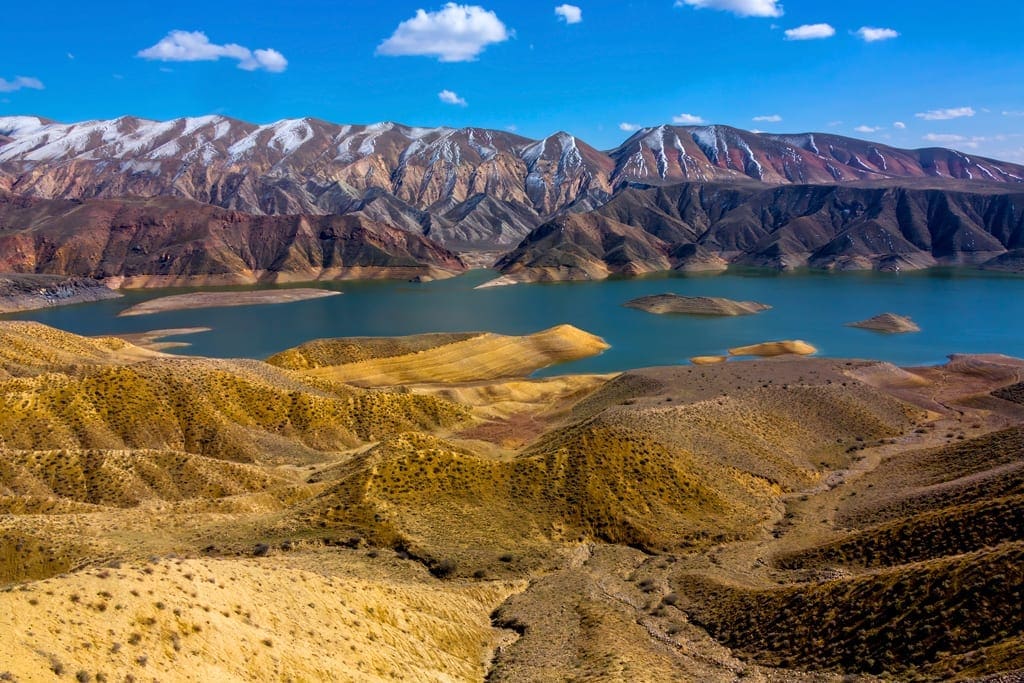
How do you choose your local partners?
The most vital things for us when choosing a new partner are creativity, reliability and passion. We are drawn to companies who are offering exciting itineraries and putting a spin on their destination’s average tourist highlights, all while offering exceptional customer service. It is also essential that they are locally owned, registered in the destination and are experienced in providing high quality holiday experiences. We check all their reviews, get in touch with previous clients and put their communication strategies to the test to make sure that they share our ethos of putting the customer first.
I think that there is now an opportunity to build a more sustainable future. Buying directly with a local company is one of the best ways to do this
I read somewhere that you and your partners are driving the revolution – how are you doing that?
There is a strong feeling amongst the TravelLocal network that the industry is undergoing a sort of generational change. A few years ago it was top down expertise delivered by a high-end tour operator – and prices to match. Now it’s being led by both technology – platforms like ours rather than bricks and mortar shops – and by our local partners and their exceptional local knowledge. Those two things combined are exceptionally disruptive. More broadly – this is a terrible cliche but it’s true – our customers are also driving this. We get amazing reviews which we are very proud of and we are passionate about quality. Customers can perceive that, and coupled with the buy local ethos they have something they’re prepared to shout about. We get many bookings simply from word of mouth recommendations. We are also getting bookings from many countries around the world – that excites all of us. It shows that the movement we’re driving has a global impact.

How is the customer experience on the ground changing?
Good question – the answer from us would be “a lot”. But the answer elsewhere in the more mainstream bits of the industry is that it’s inching forwards. We use technology to improve it, but at the moment the customer experience on the ground is in the hands of our expert local partners. It is they who finally have an outlet for their creativity and innovations. I vividly remember working for one of the big international tour operators in the UK and we dictated the experience, and ignored more unusual or niche experiences that were being suggested by locals in the destination. Now, we have the chance to turn that on its head – if you’re a great local travel company, passionate and creative about your destination, you can speak to a global marketplace directly on TravelLocal.
I think more broadly we see many changes driven by customers of all ages around niche interests. I have a strong memory when I first moved to Cambodia of all these thousands of travellers coming to Phnom Penh and seeing the city in a certain “classic” way, and I just thought “what a waste of everyone’s time”. There was a Phnom Penh they were not being shown that was much more layered and interesting – a great view from a well chosen rooftop bar, the rambling old colonial school where the Khmer Rouge were educated, or a quiet temple that only locals knew about. The biggest mistake that we could see was that big international tour operators underestimated their own clients – they thought it was all about ticking off the top five things in a city, then moving on. But travellers these days are much more sophisticated than that. They also ignored modern history – you had to find niche operators to really get to grips with that. We could see as clear as day that if given the option to really delve into recent events people were very keen to do so.
Do some research into the destination and try to get creative with the itinerary rather than following the average tourist itinerary.
How is technology shaping the future of travel?
Online commerce has become a mainstay of our economy and, in recent years, people have become more and more inclined to shop for travel on the internet. It is tough to gain consumer trust online but once it’s gained it can be a very powerful tool for reaching large numbers of potential clients. It is thanks to technology that we are able to place our local partners at the forefront of the transaction, allowing customers to communicate directly with them through our messaging system. The internet helps us to make connections across the world and I think that this is something that will continue to grow in the travel industry – people are able to reach far further in an online world.
What is the future of ethical and luxury travel?
I think that we are moving into an era which calls for a partnership between traveller and destination. We have seen a backlash in recent years against careless tourism and we are seeing that more and more of our clients are keen to travel in a respectful way . It’s about getting to the heart of a destination while also travelling responsibly and, to put it plainly, doing the right thing. I think that there is now an opportunity to build a more sustainable future. Buying directly with a local company is one of the best ways to do this – the destination is their home, the iconic sites are part of their cultural heritage and they are better placed than anyone to bring ethical luxury travel to the forefront.
Supporting local tourism is just one way that you can engage with responsible tourism, read Mike Haynes on, What is the Best Responsible Tourism Model for Myanmar?
A re you a member of a local tourism network?
TravelLocal is part of the Ethical Tour Operator’s Group (Tourism Concern) and all of our partners are members of tourism associations in their destination.
Finally, what is your advice for travellers wishing to have a genuine local tourism experience – what should they look for and what should they avoid?
I think that my most important piece of advice would be to make sure that they don’t just do the most popular things. Do some research into the destination and try to get creative with the itinerary rather than following the average tourist itinerary. Of course, I would also say that booking with locals is the best way to ensure an authentic travel experience. They are keen to engage with their destination in a new way and relish the challenge of creating off the beaten track itineraries. Don’t be afraid to ask for more and make sure you leave home with an open mind – you never know where people’s suggestions may take you.
Enjoy this post? Subscribe to our newsletter for monthly updates:
Explore topics.

Mark Bibby Jackson
Before setting up Travel Begins at 40, Mark was the publisher of AsiaLIFE Cambodia and a freelance travel writer. When he is not packing and unpacking his travelling bag, Mark writes novels, including To Cook A Spider and Peppered Justice. He loves walking, eating, tasting beer, isolation and arthouse movies, as well as talking to strangers on planes, buses and trains whenever possible. Most at home when not at home.
Read more posts by Mark Bibby Jackson →
Related Content:

Leave a Reply Cancel reply
Your email address will not be published. Required fields are marked *
Explore Further
- Experiences
- Travel Destinations
- Southeast Asia
- Events & Festivals
- Opinion / Profiles
- Business Travel & Travel Industry
- Travel News
Travel Topics
- Travel Guides
Recent Posts
- Your Ultimate Guide to Gatwick Airport Taxi and Transfers 6 May 2024
- 8 Tourist Cities You Must Visit in China 6 May 2024
- 10 Summer Food Festivals in the UK 5 May 2024
- Places to Visit During your Yacht Holiday on the Mediterranean Coast 4 May 2024
- From Wildlife Safaris to Beach Retreats: 10 Things to Do in Tanzania 2 May 2024
- Tips to Travel With Your Pet Safely 1 May 2024
- Navigating Brazil Alone: Safety Strategies for Solo Travelers 30 April 2024

An official website of the United States government
Here’s how you know
Official websites use .gov A .gov website belongs to an official government organization in the United States.
Secure .gov websites use HTTPS A lock ( ) or https:// means you’ve safely connected to the .gov website. Share sensitive information only on official, secure websites.

- Explore sell to government
- Ways you can sell to government
- How to access contract opportunities
- Conduct market research
- Register your business
- Certify as a small business
- Become a schedule holder
- Market your business
- Research active solicitations
- Respond to a solicitation
- What to expect during the award process
- Comply with contractual requirements
- Handle contract modifications
- Monitor past performance evaluations
- Explore real estate
- 3D-4D building information modeling
- Art in architecture | Fine arts
- Computer-aided design standards
- Commissioning
- Design excellence
- Engineering
- Project management information system
- Spatial data management
- Facilities operations
- Smart buildings
- Tenant services
- Utility services
- Water quality management
- Explore historic buildings
- Heritage tourism
- Historic preservation policy, tools and resources
- Historic building stewardship
- Videos, pictures, posters and more
- NEPA implementation
- Courthouse program
- Land ports of entry
- Prospectus library
- Regional buildings
- Renting property
- Visiting public buildings
- Real property disposal
- Reimbursable services (RWA)
- Rental policy and procedures
- Site selection and relocation
- For businesses seeking opportunities
- For federal customers
- For workers in federal buildings
- Explore policy and regulations
- Acquisition management policy
- Aviation management policy
- Information technology policy
- Real property management policy
- Relocation management policy
- Travel management policy
- Vehicle management policy
- Federal acquisition regulations
- Federal management regulations
- Federal travel regulations
- GSA acquisition manual
- Managing the federal rulemaking process
- Explore small business
- Explore business models
- Research the federal market
- Forecast of contracting opportunities
- Events and contacts
- Explore travel
- Per diem rates
- Transportation (airfare rates, POV rates, etc.)
- State tax exemption
- Travel charge card
- Conferences and meetings
- E-gov travel service (ETS)
- Travel category schedule
- Federal travel regulation
- Travel policy
- Explore technology
- Cloud computing services
- Cybersecurity products and services
- Data center services
- Hardware products and services
- Professional IT services
- Software products and services
- Telecommunications and network services
- Work with small businesses
- Governmentwide acquisition contracts
- MAS information technology
- Software purchase agreements
- Cybersecurity
- Digital strategy
- Emerging citizen technology
- Federal identity, credentials, and access management
- Mobile government
- Technology modernization fund
- Explore about us
- Annual reports
- Mission and strategic goals
- Role in presidential transitions
- Get an internship
- Launch your career
- Elevate your professional career
- Discover special hiring paths
- Events and training
- Agency blog
- Congressional testimony
- GSA does that podcast
- News releases
- Leadership directory
- Staff directory
- Office of the administrator
- Federal Acquisition Service
- Public Buildings Service
- Staff offices
- Board of Contract Appeals
- Office of Inspector General
- Region 1 | New England
- Region 2 | Northeast and Caribbean
- Region 3 | Mid-Atlantic
- Region 4 | Southeast Sunbelt
- Region 5 | Great Lakes
- Region 6 | Heartland
- Region 7 | Greater Southwest
- Region 8 | Rocky Mountain
- Region 9 | Pacific Rim
- Region 10 | Northwest/Arctic
- Region 11 | National Capital Region
- Per Diem Lookup
Local Travel Policy
1. Purpose . This directive provides guidance on the reimbursement of transportation expenses incurred on official business within the local area of an employee’s official worksite/duty station or appropriate alternative worksite. While the Federal Travel Regulation regulates expense reimbursement for temporary duty travel away from the official station for GSA employees, it does not provide guidance for local travel expense reimbursement.
2. Scope and Applicability .
a. This directive applies to all GSA organizations, programs, and personnel, including all Services, Staff Offices, and Regions. This Order applies to the Office of the Inspector General (OIG) to the extent that the OIG determines it is consistent with the OIG’s independent authority under the Inspector General Act and does not conflict with other OIG policies or the OIG mission. This Order applies to The Civilian Board of Contract Appeals (CBCA) to the extent that the CBCA determines it is consistent with the CBCA’s independent authority under the Contract Disputes Act and applicable Federal Court decisions and does not conflict with other CBCA policies or its mission.
b. Non-GSA employees who perform local travel at the request of GSA may be reimbursed as provided by their contract or inter- and intra-Government agreement, as applicable. Reimbursement to non-GSA employees will be processed through the financial system, not the E-Gov Travel Service 2 (ETS2).
3. Cancellation . This directive cancels and supersedes OAS 5770.1, Local Travel.
4. Responsibilities . The Office of Travel and Charge Card Services, Office of Administrative Services (OAS) develops local travel policy for GSA employees. Regional offices may supplement this policy, but regional policy may not change or conflict with official policy. Regional policy must be cleared by the Office of Travel and Charge Card Services.
5. Revisions . The following changes have been made to the Order:
a. All references to “HCO 6040.1A, GSA Mobility and Telework Policy” have been changed to “HRM 6040.1A, GSA Workforce Mobility and Telework Policy.”
b. All references to “OAS 4200.1A, Management and Use of the GSA SmartPay® Purchase Card” have been changed to “OAS 4200.1B CHGE 1, Management and Use of the GSA SmartPay® Purchase Card.”
c. All references to “Government contractor-issued travel charge card” have been changed to “GSA travel card”
d. Paragraph 6 has been revised to spell out the requirement for employees to obtain their authorizing official’s approval prior to incurring local travel expenses.
e. Paragraph 9 has been revised to add guidance regarding which modes of local travel should be considered more advantageous to the Government in relation to other modes.
f. Paragraph 9.d. has been revised to include transportation network companies (TNCs) and innovative mobility technology companies (IMTCs) as authorized methods of transportation for local travel.
g. Paragraph 9.d. has been revised to increase the maximum allowable tip to 20% of the method of transportation’s fare.
h. Paragraph 11.f. has been revised to add guidance requiring justifications in the comments section of local vouchers involving claims for mileage and claims involving use of a taxicab, TNC, or IMTC.
i. Appendix A: Glossary of Terms has been added.
j. “Appendix: Local Travel Scenarios” has been changed to “Appendix B: Local Travel Scenarios”.
Problems viewing this page? [email protected]
Are you a GSA employee? Use the Directive Library on InSite to access referenced information.
PER DIEM LOOK-UP
1 choose a location.
Error, The Per Diem API is not responding. Please try again later.
No results could be found for the location you've entered.
Rates for Alaska, Hawaii, U.S. Territories and Possessions are set by the Department of Defense .
Rates for foreign countries are set by the State Department .
2 Choose a date
Rates are available between 10/1/2021 and 09/30/2024.
The End Date of your trip can not occur before the Start Date.
Traveler reimbursement is based on the location of the work activities and not the accommodations, unless lodging is not available at the work activity, then the agency may authorize the rate where lodging is obtained.
Unless otherwise specified, the per diem locality is defined as "all locations within, or entirely surrounded by, the corporate limits of the key city, including independent entities located within those boundaries."
Per diem localities with county definitions shall include "all locations within, or entirely surrounded by, the corporate limits of the key city as well as the boundaries of the listed counties, including independent entities located within the boundaries of the key city and the listed counties (unless otherwise listed separately)."
When a military installation or Government - related facility(whether or not specifically named) is located partially within more than one city or county boundary, the applicable per diem rate for the entire installation or facility is the higher of the rates which apply to the cities and / or counties, even though part(s) of such activities may be located outside the defined per diem locality.
How to be a Local Tourist
The Local Tourist has a simple goal: we want you to experience the fascination of a tourist while feeling the comfort of the local, no matter where you are.

The Local Tourist began many, many, MANY years ago as a guide to Chicago .
And not just to Chicago, but a guide to a specific neighborhood.
I started a hyper-local site because after I moved to the city, I wanted to take every opportunity to discover what was in my own “back yard.” I was a tourist, yet also a local.
Chicago’s a major tourist destination, so on the surface, it’s easy and exciting to find things to do. It is easy, but precisely because of that complacency is common.
I also learned that, while not every place is the booming metropolis that is the Windy City, all destinations have something to share. From tiny towns like Tonopah, Nevada , and Charles City, Iowa , to college communities like West Lafayette/ Lafayette, Indiana , you can be a “Local Tourist” wherever you go.
When you’re local it’s easy to fall into a rut and do the same things over and over. When you’re a tourist, it’s easy to visit the places that every other tourist is visiting, and when you leave you feel like you haven’t really seen the place at all.
If you want to be a Local Tourist, if you want to explore with intention, whether you’re at home or somewhere else, we’re here to help.

What is a Local Tourist?
- A Local Tourist is someone who wants to go beyond the tourist traps…but knows that there are reasons those attractions are so popular.
- A Local Tourist wants to eat and drink local, shop at local boutiques, listen to local bands, view local art.
- Local Tourists are not content to do the same ol’ same ol’; they want to get out and explore, to see new places and meet new people.
- A Local Tourist wants to truly experience what is real and authentic, and to support those that create with passion and integrity.
- A Local Tourist wants to find what is unique about a place and what makes it worth visiting and worth experiencing.
Finally, a Local Tourist knows that there are no rules – if you want to check out the cheesiest, most tourist-y attraction there is, then do it, by golly! It’s your free time. We just want to help you enjoy it as much as possible.
To achieve that goal, here are 5 tips on how to travel like a local, and 5 tips on how to be a tourist in your own home.

How to travel like a local
It doesn’t matter where you are, if you use these tips you can explore anywhere with the comfort of the local.
1. Ask the professionals
Start your exploration by finding out what the professionals suggest . As you’re planning your visit search for the local Convention and Visitors Bureau (CVB).
Usually, if you search “Visit {insert destination here}” you can find their website. Browse their recommendations and make notes of which ones appeal to you.
You’ll also want to follow them on whatever social media channels you use. They’ll often have an online version of their printed visitors guide, and if you’re planning far enough in advance you can request to have one mailed to you.
One of my favorite places to connect with local visitors bureaus is at the Travel and Adventure Show.
Related: get a free ticket to the Los Angeles Travel and Adventure Show .
2. Check Local Media
Explore the websites of your destination’s newspaper, radio and TV stations, and print and online magazines. These will have openings, closings, reviews, news, and upcoming events.
3. Talk to the locals

Before you arrive at your destination, seek out local bloggers and social media influencers. To find local sites, search {destination} + blog, and you can add whatever keywords interest you.
You can also ask those CVBs if they have any recommendations of people to follow.
Once you’re there, ask the people you interact with – concierges, taxi/ride-sharing drivers, cashiers, etc. – where they go to lunch, or where their favorite dive bar is, or what spot they love for great music.
If you build some flexibility into your visit, you can end up where the real locals go.
4. Shop Local
Instead of getting your caffeine fix at a national chain, find the nearest locally-owned coffee shop.
When you’re planning dinner, skip the places you can find anywhere else and patronize the restaurant that has just one location.
Forget the big box store for any last-minute sundries; pick them up at the family-owned market.
5. Take public transportation
Using an unfamiliar public transportation system can be intimidating, but it can show you a side of the city you wouldn’t see any other way. Before you go check out the local transit system’s website. You should be able to find fares, routes, and tips on how to get around.
This isn’t an option everywhere, of course. This is another area where the CVBs will come in handy.
How to be a Tourist in your own city

Aren’t you lucky – you actually live in a place that people pay to visit! They make a special trip to see what you have access to every day.
It’s that familiarity, though, that makes you forget all about what makes it unique, prompts you to look right past it, or even worse, proclaim that you’ll never go because there are too many tourists.
With these five tips on exploring your own city, you can experience the fascination of a tourist in your home town.
1. Take a tour
Dig a little deeper into your city’s past, its architecture, and what sets it apart from other cities with a tour.
Led by experts who are paid to know more than you do, you’re pretty much guaranteed to learn something new about where you live.
Almost every city has professional tours of some type, whether they’re trolley tours, hop-on hop-off tours, food tours, or bicycle tours.
2. Check out the Visitors Center
Just because you’re a local doesn’t mean you shouldn’t check out the Visitors Center. These places are staffed by people, often volunteers, who know so much about your home they’re tasked with sharing the best with anyone who visits.
A Visitors Center’s sole purpose is to help people navigate everything your city has to offer, so why not let them help you?
3. Take a Staycation
If you want to really feel like a tourist in your hometown, get a room. By staying in a hotel you can immerse yourself in the action, just like a tourist.
Ask the concierge and the bellhop where they go for dining and entertainment, and you’ll probably get some suggestions you never would have considered.
4. Go somewhere new to you
Humans are creatures of habit. Why not break out of the routine by visiting someplace new? Go to an entirely different part of town and walk the streets, absorbing all of the new sights and sounds.
For example, if you live in the Lincoln Park neighborhood of Chicago, go to Pilsen or Hyde Park for a day. If your home is Little Italy in San Diego, take a tour of Ocean Beach. Get out of your comfort zone!
5. Visit a tourist attraction
There’s a reason Navy Pier and Millennium Park are the most popular tourist attractions in Chicago . Likewise, there’s a reason Balboa Park is on every San Diego visitor’s itinerary.
The most popular tourist attractions are popular for a reason. Make it a challenge to find out why. You don’t even have to wait for an out-of-town visitor!
The whole idea behind The Local Tourist is to explore with intention and have fun. Whether that means traveling like a local or being a tourist in your own city, we hope these tips will help you be a Local Tourist no matter where you are!

Accommodation added!
Go to favorites
Discover unique and inexpensive stays hosted by locals around the world or rent out your space.
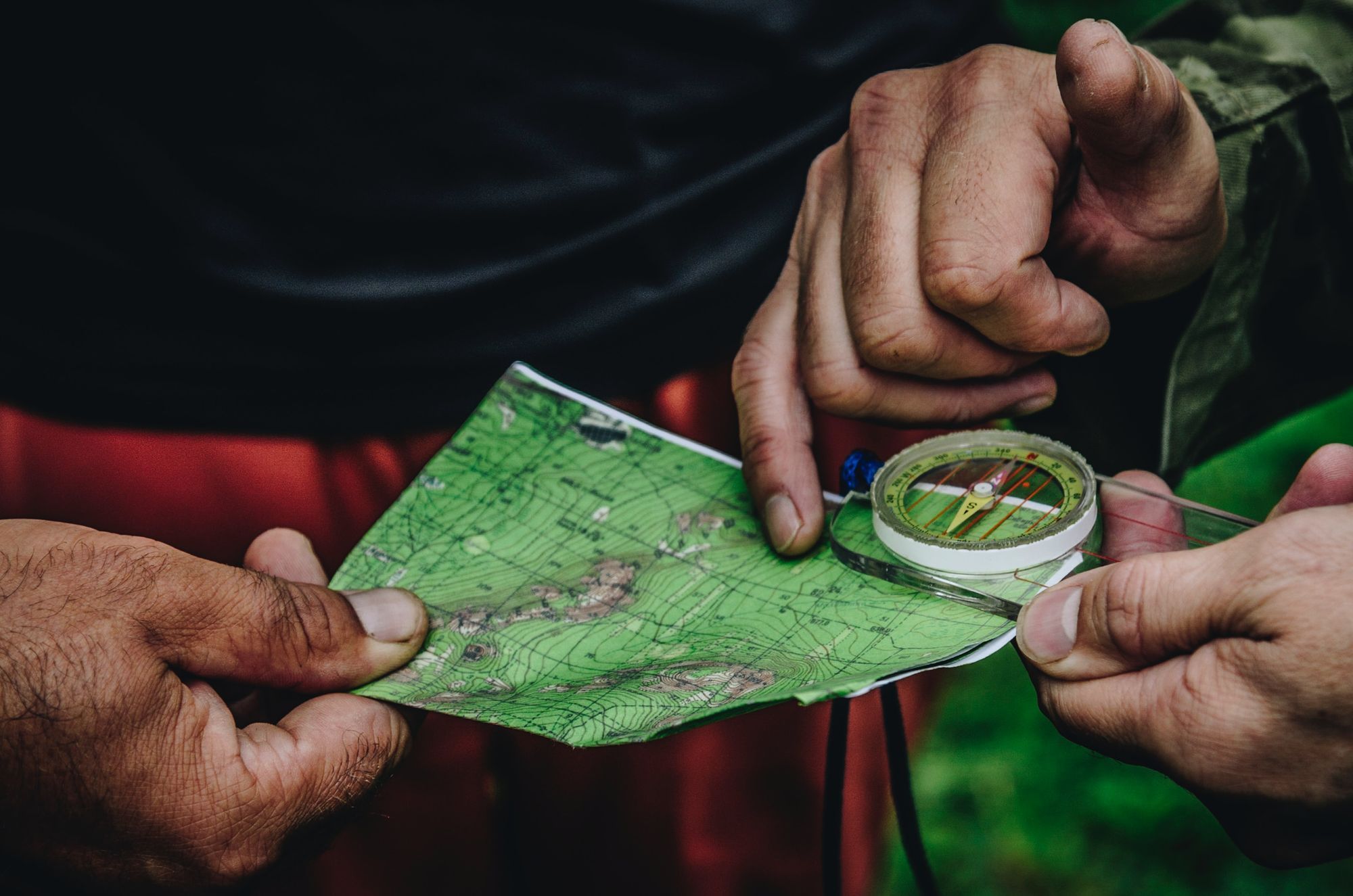
What is local travel?
When you open our website you'll see it right away; ‘With trusted locals', but what is local travel exactly?
It starts at the beginning, how do you plan your journey? Are you going to choose a travel agency that arranges everything for you or do you decide to do it yourself? Travelling takes us to new places where we will have new experiences, discover different cultures, meet people, learn new languages, discover different kinds of food, and discover new places. Taking a break from home helps you to let go of the routine of your work, and perhaps the hustle and bustle of your family. It helps you to let go of stress, and relax for a while.
As soon as you choose to 'plan' your journey yourself, you enter the wonderful world of 'local travel'. By choosing accommodation near a 'city' you can open up to the locals. Contacting the locals will help you find special places that are not on Tripadvisor. Sometimes you can even choose to dive even more into the local community, perhaps it's a threshold: primitive, no freedom and it can be quite uncomfortable but it's recommended.
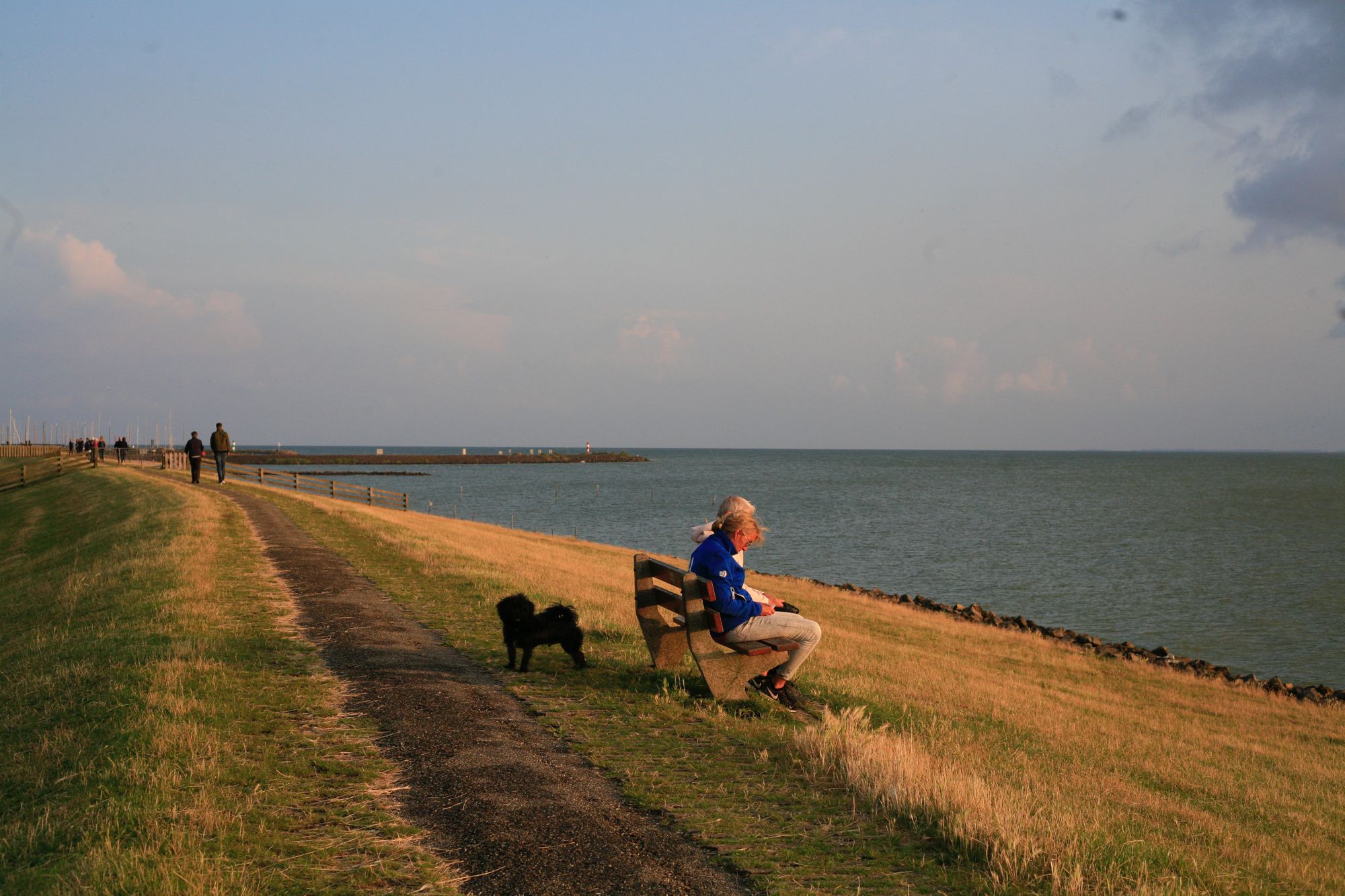
Local travel in the Netherlands
Can you do that? Yeah, I'm sure it can. We have several stays that certainly connect to this (Dutch stay in Amersfoort and another Dutch stay in Den Helder ). But what do you do?
The Netherlands is a small country but also a very large multicultural country, over the years immigrants, expats, refugees etcetera have come here, which has made the Netherlands a lot bigger but also a mixed country. Suppose you come from Sint Annaparochie for example and you have never been across the Afsluitdijk to discover North Holland, this is a nice first step. We have several trusted hosts in den Helder who will tell you the history and give you a beautiful experience.
Of course, you can also choose to stay in a chalet with your family, is this also local? Yes, our host will welcome you and your family with open arms and tell you the ins-and-outs of the region. For example this cabin in Kropswolde.
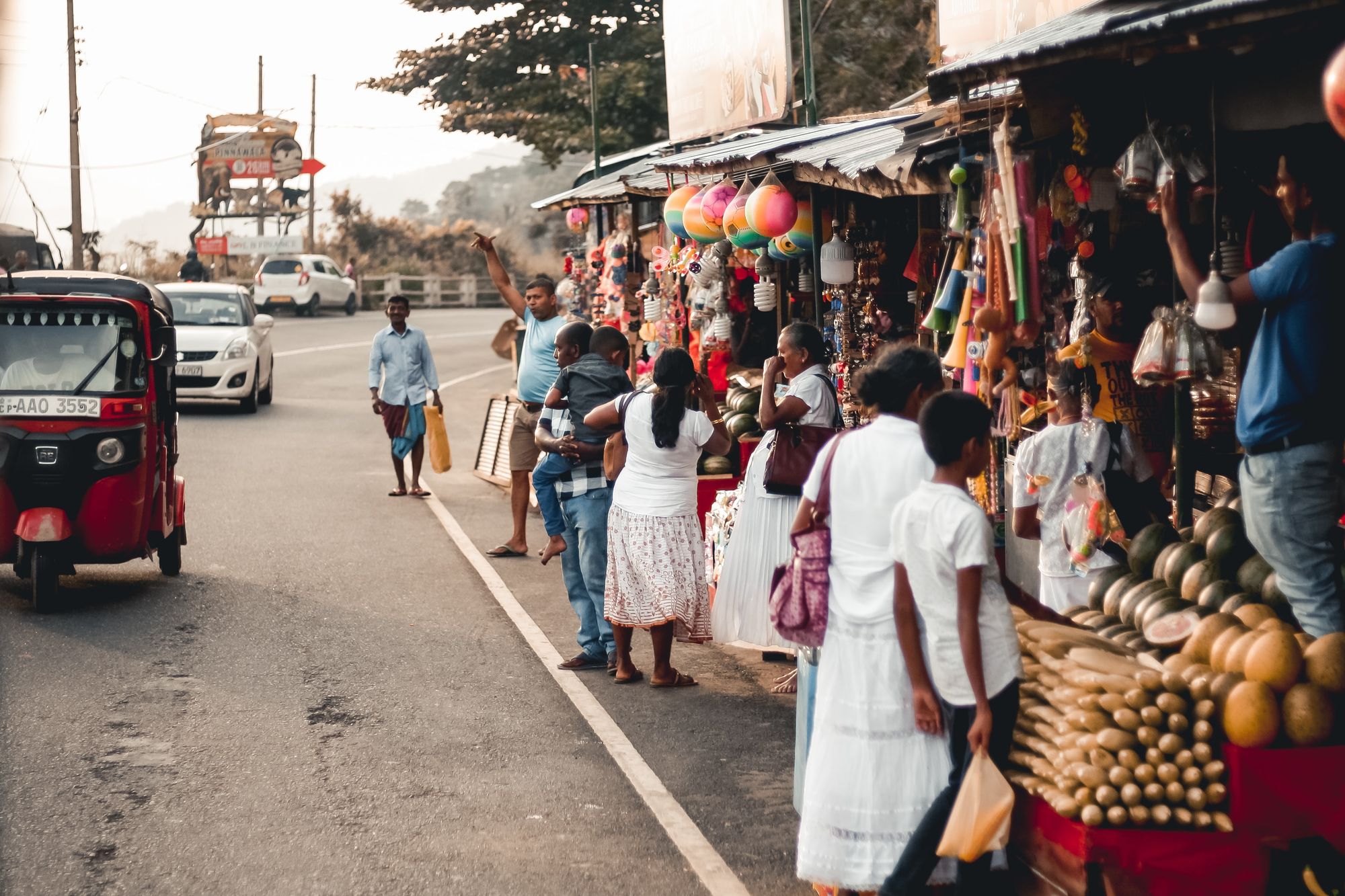
Local travel abroad
The association with local travel is often made with this, while as you read above it is of course also possible in the Netherlands.
- Use local transportation
Get in contact with people who also go to the same places of interest. Have you ever heard of apps like Duolingo or Memrise? Through these apps you can learn different languages for free, so you can communicate better with the real locals.
- Don't dive into the magazines too much
In several travel magazines, there are beautiful pictures but in reality this is not (often) the case. Rely on the surroundings and on yourself to discover the right places without making an extensive plan beforehand.
- Treat the locals with respect
For example, if you go to Thailand, it is impropriate to show the bottom of your feet or if you go to an Islamic country, it is impropriated to wear too short clothing.
Do you want to travel locally but do you still find it exciting at the moment? We even have villas and apartments (watch here and for example here ) where you will get a 'local' treatment. Our host is there for you 24/7, and indicates where the beautiful places in the area are.
- The Inventory
Support Quartz
Fund next-gen business journalism with $10 a month
Free Newsletters
Tourists want to “live like a local.” How do locals feel about that?
Latest videos, wegovy and ozempic: are we ready for weight loss drugs, hgtv's property brothers react to mortgage rates rising over 7%, are self-driving cars safe enough yet, will spacex spinoff starlink for a big ipo this year, palo alto, crowdstrike, and zscaler could have a big year, says exec, will nvidia and the ai boom lead to a nuclear energy boom, are we ready for nvidia’s blackwell chip, tsmc beat on q2 sales expectations driven by ai boom, nvidia, and apple, what’s wrong (and right) with neuralink | vision to launch, chatgpt requires 15 times more energy than a traditional web search, says arm exec, could middle east tension escalate oil prices, ai stocks to consider if you missed nvidia's run, trump media's live tv streaming play is rearranging deck chairs on the titanic, strategist says, are we ready for apple vision pro | vision to launch, dow closes 400 points lower on surprising inflation data, is bitcoin too speculative, most popular, does novo nordisk already have the next ozempic, the biggest risks to investors right now, is inflation still hurting the economy, will tesla finally unveil a self-driving vehicle don't count on it, tarek el moussa's road out of debt to being a millionaire | your wallet, why apple stock isn't growing aggressively, amazon's new pharmacy won't do much for its bottom line, analyst says, janet yellen isn't taking china tariffs off the table, it's not just apple: google and facebook are also facing doj and ftc scrutiny, why amazon stock gains are changing employee compensation, kara swisher on why google's ai will surpass openai, how to negotiate salary going into a new job | your wallet, why bitcoin won’t reach $1,000,000 | what’s next for bitcoin, why goldman sachs and morgan stanley might be buys in 2024 | smart investing, why many office buildings remain vacant, is meta a better stock than reddit right now, what's next for..., are we in an ai bubble | what’s next for nvidia, is the apple heart the next great innovation | what’s next for apple, will ozempic really take over america | what’s next for novo nordisk, how did sam altman scare board members | what’s next for openai, facebook’s 2016 election problems will be the same in 2024 | what’s next for meta, why the future of streaming may not involve netflix or disney+ | what’s next for streaming, uaw contract a victory for autoworkers, but not consumers | what’s next for gm, how ai is changing videoconferencing | what’s next for zoom, what’s next for x (twitter) | walter isaacson, your wallet, nike and pepsico executives on how to find your worth | your wallet, hgtv's tarek el moussa on how to flip houses for a profit | your wallet, how to find a new job and make more money | your wallet, how to save money in 2024: step-by-step guide | your wallet, how one woman turned $10,000 into a successful business | your wallet, how to find holiday shopping discounts | your wallet, holiday shopping credit card hacks | your wallet, how to save money on groceries | your wallet, should i buy or lease a car | your wallet, how to find a financial planner | your wallet, best careers for 2024 | your wallet, best rewards and cash back credit cards | your wallet, how to maximize your winter travel budget | your wallet, smart investing, why tesla stock might not be a buy, what's next for boeing, is bitcoin a good speculative investment, reddit and other ipos could be great news for investors, what nvidia’s reversal means for investors | smart investing, is there an ai bubble | smart investing, why the us economy might be headed for a bumpy landing | smart investing, is it too late to invest in nvidia | smart investing, why one strategist believes pfizer and two other stocks are buys | smart investing, will the rally in tech and weight loss drug stocks continue in 2024 | smart investing, 📬 sign up for the daily brief.
Our free, fast, and fun briefing on the global economy, delivered every weekday morning.
UN Tourism | Bringing the world closer
Un standards for measuring tourism, share this content.
- Share this article on facebook
- Share this article on twitter
- Share this article on linkedin
Glossary of tourism terms
Tourism is a social, cultural and economic phenomenon which entails the movement of people to countries or places outside their usual environment for personal or business/professional purposes. These people are called visitors (which may be either tourists or excursionists; residents or non-residents) and tourism has to do with their activities, some of which involve tourism expenditure.
A B C D E F G H I J K L M N O P Q R S T U V W Y Z
Activity/activities : In tourism statistics, the term activities represent the actions and behaviors of people in preparation for and during a trip in their capacity as consumers ( IRTS 2008, 1.2 ).
Activity (principal): The principal activity of a producer unit is the activity whose value added exceeds that of any other activity carried out within the same unit ( SNA 2008, 5.8 ).
Activity (productive): The (productive) activity carried out by a statistical unit is the type of production in which it engages. It has to be understood as a process, i.e. the combination of actions that result in a certain set of products. The classification of productive activities is determined by their principal output.
Administrative data : Administrative data is the set of units and data derived from an administrative source. This is a data holding information collected and maintained for the purpose of implementing one or more administrative regulations.
Adventure tourism : Adventure tourism is a type of tourism which usually takes place in destinations with specific geographic features and landscape and tends to be associated with a physical activity, cultural exchange, interaction and engagement with nature. This experience may involve some kind of real or perceived risk and may require significant physical and/or mental effort. Adventure tourism generally includes outdoor activities such as mountaineering, trekking, bungee jumping, rock climbing, rafting, canoeing, kayaking, canyoning, mountain biking, bush walking, scuba diving. Likewise, some indoor adventure tourism activities may also be practiced.
Aggregated data : The result of transforming unit level data into quantitative measures for a set of characteristics of a population.
Aggregation : A process that transforms microdata into aggregate-level information by using an aggregation function such as count, sum average, standard deviation, etc.
Analytical unit : Entity created by statisticians, by splitting or combining observation units with the help of estimations and imputations.
Balance of payments : The balance of payments is a statistical statement that summarizes transactions between residents and non-residents during a period. It consists of the goods and services account, the primary income account, the secondary income account, the capital account, and the financial account ( BPM6, 2.12 ).
Bias : An effect which deprives a statistical result of representativeness by systematically distorting it, as distinct from a random error which may distort on any one occasion but balances out on the average.
Business and professional purpose (of a tourism trip): The business and professional purpose of a tourism trip includes the activities of the self-employed and employees, as long as they do not correspond to an implicit or explicit employer-employee relationship with a resident producer in the country or place visited, those of investors, businessmen, etc. ( IRTS 2008, 3.17.2 ).
Business tourism : Business tourism is a type of tourism activity in which visitors travel for a specific professional and/or business purpose to a place outside their workplace and residence with the aim of attending a meeting, an activity or an event. The key components of business tourism are meetings, incentives, conventions and exhibitions. The term "meetings industry" within the context of business tourism recognizes the industrial nature of such activities. Business tourism can be combined with any other tourism type during the same trip.
Business visitor : A business visitor is a visitor whose main purpose for a tourism trip corresponds to the business and professional category of purpose ( IRTS 2008, 3.17.2 ).
Central Product Classification : The Central Product Classification (CPC) constitutes a complete product classification covering goods and services. It is intended to serve as an international standard for assembling and tabulating all kinds of data requiring product detail, including industrial production, national accounts, service industries, domestic and foreign commodity trade, international trade in services, balance of payments, consumption and price statistics. Other basic aims are to provide a framework for international comparison and promote harmonization of various types of statistics dealing with goods and services.
Census : A census is the complete enumeration of a population or groups at a point in time with respect to well defined characteristics: for example, Population, Production, Traffic on particular roads.
Coastal, maritime and inland water tourism : Coastal tourism refers to land-based tourism activities such as swimming, surfing, sunbathing and other coastal leisure, recreation and sports activities which take place on the shore of a sea, lake or river. Proximity to the coast is also a condition for services and facilities that support coastal tourism. Maritime tourism refers to sea-based activities such as cruising, yachting, boating and nautical sports and includes their respective land-based services and infrastructure. Inland water tourism refers to tourism activities such as cruising, yachting, boating and nautical sports which take place in aquatic- influenced environments located within land boundaries and include lakes, rivers, ponds, streams, groundwater, springs, cave waters and others traditionally grouped as inland wetlands.
Coherence : Adequacy of statistics to be combined in different ways and for various uses.
Competitiveness of a tourism destination : The competitiveness of a tourism destination is the ability of the destination to use its natural, cultural, human, man-made and capital resources efficiently to develop and deliver quality, innovative, ethical and attractive tourism products and services in order to achieve a sustainable growth within its overall vision and strategic goals, increase the added value of the tourism sector, improve and diversify its market components and optimize its attractiveness and benefits both for visitors and the local community in a sustainable perspective.
Consistency : Logical and numerical coherence.
Country of reference : The country of reference refers to the country for which the measurement is done. ( IRTS 2008, 2.15 ).
Country of residence : The country of residence of a household is determined according to the centre of predominant economic interest of its members. If a person resides (or intends to reside) for more than one year in a given country and has there his/her centre of economic interest (for example, where the predominant amount of time is spent), he/she is considered as a resident of this country.
Country-specific tourism characteristic products and activities : To be determined by each country by applying the criteria of IRTS 2008, 5.10 in their own context; for these products, the activities producing them will be considered as tourism characteristic, and the industries in which the principal activity is tourism-characteristic will be called tourism industries ( IRTS 2008, 5.16 ).
Cultural tourism : Cultural tourism is a type of tourism activity in which the visitor's essential motivation is to learn, discover, experience and consume the tangible and intangible cultural attractions/products in a tourism destination. These attractions/products relate to a set of distinctive material, intellectual, spiritual and emotional features of a society that encompasses arts and architecture, historical and cultural heritage, culinary heritage, literature, music, creative industries and the living cultures with their lifestyles, value systems, beliefs and traditions.
Data checking : Activity whereby the correctness conditions of the data are verified. It also includes the specification of the type of error or of the condition not met, and the qualification of the data and their division into "error-free data" and "erroneous data".
Data collection : Systematic process of gathering data for official statistics.
Data compilation : Operations performed on data to derive new information according to a given set of rules.
Data confrontation : The process of comparing data that has generally been derived from different surveys or other sources, especially those of different frequencies, in order to assess and possibly improve their coherency, and identify the reasons for any differences.
Data processing : Data processing is the operation performed on data by the organization, institute, agency, etc., responsible for undertaking the collection, tabulation, manipulation and preparation of data and metadata output.
Data reconciliation : The process of adjusting data derived from two different sources to remove, or at least reduce, the impact of differences identified.
Destination (main destination of a trip): The main destination of a tourism trip is defined as the place visited that is central to the decision to take the trip. See also purpose of a tourism trip ( IRTS 2008, 2.31 ).
Destination management / marketing organization (DMO) : A destination management/marketing organization (DMO) is the leading organizational entity which may encompass the various authorities, stakeholders and professionals and facilitates tourism sector partnerships towards a collective destination vision. The governance structures of DMOs vary from a single public authority to a public/ private partnership model with the key role of initiating, coordinating and managing certain activities such as implementation of tourism policies, strategic planning, product development, promotion and marketing and convention bureau activities. The functions of the DMOs may vary from national to regional and local levels depending on the current and potential needs as well as on the decentralization level of public administration. Not every tourism destination has a DMO.
Documentation: Processes and procedures for imputation, weighting, confidentiality and suppression rules, outlier treatment and data capture should be fully documented by the survey provider. Such documentation should be made available to at least the body financing the survey.
Domestic tourism : Domestic tourism comprises the activities of a resident visitor within the country of reference, either as part of a domestic tourism trip or part of an outbound tourism trip ( IRTS 2008, 2.39 ).
Domestic tourism consumption : Domestic tourism consumption is the tourism consumption of a resident visitor within the economy of reference ( TSA:RMF 2008, figure 2.1 ).
Domestic tourism expenditure : Domestic tourism expenditure is the tourism expenditure of a resident visitor within the economy of reference, (IRTS 2008, 4.15(a)).
Domestic tourism trip : A domestic tourism trip is one with a main destination within the country of residence of the visitor (IRTS 2008, 2.32).
Domestic visitor : As a visitor travels within his/her country of residence, he/she is a domestic visitor and his/her activities are part of domestic tourism.
Durable consumer goods : Durable consumer goods are goods that may be used repeatedly or continuously over a period of a year or more, assuming a normal or average rate of physical usage. When acquired by producers, these are considered to be capital goods used for production processes, as is the case of vehicles, computers, etc. When acquired by households, they are considered to be consumer durable goods ( TSA:RMF 2008, 2.39 ). This definition is identical to the definition of SNA 2008, 9.42 : A consumer durable is a goodthat may be used for purposes of consumption repeatedly or continuously over a period of a year or more.
Dwellings : Each household has a principal dwelling (sometimes also designated as main or primary home), usually defined with reference to time spent there, whose location defines the country of residence and place of usual residence of this household and of all its members. All other dwellings (owned or leased by the household) are considered secondary dwellings ( IRTS 2008, 2.26 ).
Ecotourism : Ecotourism is a type of nature-based tourism activity in which the visitor's essential motivation is to observe, learn, discover, experience and appreciate biological and cultural diversity with a responsible attitude to protect the integrity of the ecosystem and enhance the well-being of the local community. Ecotourism increases awareness towards the conservation of biodiversity, natural environment and cultural assets both among locals and the visitors and requires special management processes to minimize the negative impact on the ecosystem.
Economic analysis : Tourism generates directly and indirectly an increase in economic activity in the places visited (and beyond), mainly due to demand for goods and services thatneed to be produced and provided. In the economic analysis of tourism, one may distinguish between tourism's 'economic contribution' which refers to the direct effect of tourism and is measurable by means of the TSA, and tourism's 'economic impact' which is a much broader concept encapsulating the direct, indirect and induced effects of tourism and which must be estimated by applying models. Economic impact studies aim to quantify economic benefits, that is, the net increase in the wealth of residents resulting from tourism, measured in monetary terms, over and above the levels that would prevail in its absence.
Economic territory : The term "economic territory" is a geographical reference and points to the country for which the measurement is done (country of reference) ( IRTS 2008, 2.15 ).
Economically active population : The economically active population or labour force comprises all persons of either sex who furnish the supply of labour for the production of goods and services as defined by the system of national accounts during a specified time-reference period (ILO, Thirteenth ICLS, 6.18).
Economy (of reference): "Economy" (or "economy of reference") is an economic reference defined in the same way as in the balance of payments and in the system of national accounts: it refers to the economic agents that are resident in the country of reference ( IRTS 2008, 2.15 ).
Education tourism : Education tourism covers those types of tourism which have as a primary motivation the tourist's engagement and experience in learning, self-improvement, intellectual growth and skills development. Education Tourism represents a broad range of products and services related to academic studies, skill enhancement holidays, school trips, sports training, career development courses and language courses, among others.
Employees : Employees are all those workers who hold the type of job defined as "paid employment" (ILO, Fifteenth ICLS, pp. 20-22).
Employer-employee relationship : An employer-employee relationship exists when there is an agreement, which may be formal or informal, between an entity and an individual, normally entered into voluntarily by both parties, whereby the individual works for the entity in return for remuneration in cash or in kind ( BPM6, 11.11 ).
Employers : Employers are those workers who, working on their own account with one or more partners, hold the type of job defined as a "self-employment job" and, in this capacity, on a continuous basis (including the reference period) have engaged one or more persons to work for them in their business as "employee(s)" (ILO, Fifteenth ICLS, pp. 20-22).
Employment : Persons in employment are all persons above a specified age who, during a specified brief period, either one week or one day, were in paid employment or self-employment (OECD GST, p. 170).
Employment in tourism industries : Employment in tourism industries may be measured as a count of the persons employed in tourism industries in any of their jobs, as a count of the persons employed in tourism industries in their main job, or as a count of the jobs in tourism industries ( IRTS 2008, 7.9 ).
Enterprise : An enterprise is an institutional unit engaged in production of goods and/or services. It may be a corporation, a non-profit institution, or an unincorporated enterprise. Corporate enterprises and non-profit institutions are complete institutional units. An unincorporated enterprise, however, refers to an institutional unit —a household or government unit —only in its capacity as a producer of goods and services (OECD BD4, p. 232)
Establishment : An establishment is an enterprise, or part of an enterprise, that is situated in a single location and in which only a single productive activity is carried out or in which the principal productive activity accounts for most of the value added ( SNA 2008, 5.14 ).
Estimation : Estimation is concerned with inference about the numerical value of unknown population values from incomplete data such as a sample. If a single figure is calculated for each unknown parameter the process is called "point estimation". If an interval is calculated within which the parameter is likely, in some sense, to lie, the process is called "interval estimation".
Exports of goods and services : Exports of goods and services consist of sales, barter, or gifts or grants, of goods and services from residents to non-residents (OECD GST, p. 194)
Frame : A list, map or other specification of the units which define a population to be completely enumerated or sampled.
Forms of tourism : There are three basic forms of tourism: domestic tourism, inbound tourism, and outbound tourism. These can be combined in various ways to derive the following additional forms of tourism: internal tourism, national tourism and international tourism.
Gastronomy tourism : Gastronomy tourism is a type of tourism activity which is characterized by the visitor's experience linked with food and related products and activities while travelling. Along with authentic, traditional, and/or innovative culinary experiences, Gastronomy Tourism may also involve other related activities such as visiting the local producers, participating in food festivals and attending cooking classes. Eno-tourism (wine tourism), as a sub-type of gastronomy tourism, refers to tourism whose purpose is visiting vineyards, wineries, tasting, consuming and/or purchasing wine, often at or near the source.
Goods : Goods are physical, produced objects for which a demand exists, over which ownership rights can be established and whose ownership can be transferred from one institutional unit to another by engaging in transactions on markets ( SNA 2008, p. 623 ).
Gross fixed capital formation : Gross fixed capital formation is defined as the value of institutional units' acquisitions less disposals of fixed assets. Fixed assets are produced assets (such as machinery, equipment, buildings or other structures) that are used repeatedly or continuously in production over several accounting periods (more than one year) ( SNA 2008, 1.52 ).
Gross margin : The gross margin of a provider of reservation services is the difference between the value at which the intermediated service is sold and the value accrued to the provider of reservation services for this intermediated service.
Gross value added : Gross value added is the value of output less the value of intermediate consumption ( TSA:RMF 2008, 3.32 ).
Gross value added of tourism industries : Gross value added of tourism industries (GVATI) is the total gross value added of all establishments belonging to tourism industries, regardless of whether all their output is provided to visitors and the degree of specialization of their production process ( TSA:RMF 2008, 4.86 ).
Grossing up : Activity aimed at transforming, based on statistical methodology, micro-data from samples into aggregate-level information representative of the target population.
Health tourism : Health tourism covers those types of tourism which have as a primary motivation, the contribution to physical, mental and/or spiritual health through medical and wellness-based activities which increase the capacity of individuals to satisfy their own needs and function better as individuals in their environment and society. Health tourism is the umbrella term for the subtypes wellness tourism and medical tourism.
Imputation : Procedure for entering a value for a specific data item where the response is missing or unusable.
Inbound tourism : Inbound tourism comprises the activities of a non-resident visitor within the country of reference on an inbound tourism trip ( IRTS 2008, 2.39 ).
Inbound tourism consumption : Inbound tourism consumption is the tourism consumption of a non-resident visitor within the economy of reference ( TSA:RMF 2008, figure 2.1 ).
Inbound tourism expenditure : Inbound tourism expenditure is the tourism expenditure of a non-resident visitor within the economy of reference ( IRTS 2008, 4.15(b) ).
Innovation in tourism : Innovation in tourism is the introduction of a new or improved component which intends to bring tangible and intangible benefits to tourism stakeholders and the local community, improve the value of the tourism experience and the core competencies of the tourism sector and hence enhance tourism competitiveness and /or sustainability. Innovation in tourism may cover potential areas, such as tourism destinations, tourism products, technology, processes, organizations and business models, skills, architecture, services, tools and/or practices for management, marketing, communication, operation, quality assurance and pricing.
Institutional sector : An aggregation of institutional units on the basis of the type of producer and depending on their principal activity and function, which are considered to be indicative of their economic behaviour.
Institutional unit : The elementary economic decision-making centre characterised by uniformity of behaviour and decision-making autonomy in the exercise of its principal function.
Intermediate consumption : Intermediate consumption consists of the value of the goods and services consumed as inputs by a process of production, excluding fixed assets whose consumption is recorded as consumption of fixed capital ( SNA 2008, 6.213 ).
Internal tourism : Internal tourism comprises domestic tourism and inbound tourism, that is to say, the activities of resident and non-resident visitors within the country of reference as part of domestic or international tourism trips ( IRTS 2008, 2.40(a) ).
Internal tourism consumption : Internal tourism consumption is the tourism consumption of both resident and non-resident visitors within the economy of reference. It is the sum of domestic tourism consumption and inbound tourism consumption ( TSA:RMF 2008, figure 2.1 ).
Internal tourism expenditure : Internal tourism expenditure comprises all tourism expenditure of visitors, both resident and non-resident, within the economy of reference. It is the sum of domestic tourism expenditure and inbound tourism expenditure. It includes acquisition of goods and services imported into the country of reference and sold to visitors. This indicator provides the most comprehensive measurement of tourism expenditure in the economy of reference ( IRTS 2008, 4.20(a) ).
International Standard Industrial Classification of All Economic Activities : The International Standard Industrial Classification of All Economic Activities (ISIC) consists of a coherent and consistent classification structure of economic activities based on a set of internationally agreed concepts, definitions, principles and classification rules. It provides a comprehensive framework within which economic data can be collected and reported in a format that is designed for purposes of economic analysis, decision-taking and policymaking. The classification structure represents a standard format to organize detailed information about the state of an economy according to economic principles and perceptions (ISIC, Rev.4, 1).
International tourism : International tourism comprises inbound tourism and outbound tourism, that is to say, the activities of resident visitors outside the country of reference, either as part of domestic or outbound tourism trips and the activities of non-resident visitors within the country of reference on inbound tourism trips ( IRTS 2008, 2.40(c) ).
International visitor : An international traveller qualifies as an international visitor with respect to the country of reference if: (a) he/she is on a tourism trip and (b) he/she is a non-resident travelling in the country of reference or a resident travelling outside of it ( IRTS 2008, 2.42 ).
Job : The agreement between an employee and the employer defines a job and each self-employed person has a job ( SNA 2008, 19.30 ).
Measurement error : Error in reading, calculating or recording numerical value.
Medical tourism : Medical tourism is a type of tourism activity which involves the use of evidence-based medical healing resources and services (both invasive and non-invasive). This may include diagnosis, treatment, cure, prevention and rehabilitation.
Meetings industry : To highlight purposes relevant to the meetings industry, if a trip's main purpose is business/professional, it can be further subdivided into "attending meetings, conferences or congresses, trade fairs and exhibitions" and "other business and professional purposes". The term meetings industry is preferred by the International Congress and Convention Association (ICCA), Meeting Professionals International (MPI) and Reed Travel over the acronym MICE (Meetings, Incentives, Conferences and Exhibitions) which does not recognize the industrial nature of such activities.
Metadata : Data that defines and describes other data and processes.
MICE : See meetings industry.
Microdata : Non-aggregated observations, or measurements of characteristics of individual units.
Mirror statistics : Mirror statistics are used to conduct bilateral comparisons of two basic measures of a trade flow and are a traditional tool for detecting the causes of asymmetries in statistics (OECD GST, p. 335).
Mountain tourism : Mountain tourism is a type of tourism activity which takes place in a defined and limited geographical space such as hills or mountains with distinctive characteristics and attributes that are inherent to a specific landscape, topography, climate, biodiversity (flora and fauna) and local community. It encompasses a broad range of outdoor leisure and sports activities.
National tourism : National tourism comprises domestic tourism and outbound tourism, that is to say, the activities of resident visitors within and outside the country of reference, either as part of domestic or outbound tourism trips ( IRTS 2008, 2.40(b) ).
National tourism consumption : National tourism consumption is the tourism consumption of resident visitors, within and outside the economy of reference. It is the sum of domestic tourism consumption and outbound tourism consumption ( TSA:RMF 2008, figure 2.1 ).
National tourism expenditure : National tourism expenditure comprises all tourism expenditure of resident visitors within and outside the economy of reference. It is the sum of domestic tourism expenditure and outbound tourism expenditure ( IRTS 2008, 4.20(b) ).
Nationality : The concept of "country of residence" of a traveller is different from that of his/her nationality or citizenship ( IRTS 2008, 2.19 ).
Non-monetary indicators : Data measured in physical or other non-monetary units should not be considered a secondary part of a satellite account. They are essential components, both for the information they provide directly and in order to analyse the monetary data adequately ( SNA 2008, 29.84 ).
Observation unit : entity on which information is received and statistics are compiled.
Outbound tourism : Outbound tourism comprises the activities of a resident visitor outside the country of reference, either as part of an outbound tourism trip or as part of a domestic tourism trip ( IRTS 2008, 2.39(c) ).
Outbound tourism consumption : Outbound tourism consumption is the tourism consumption of a resident visitor outside the economy of reference ( TSA:RMF 2008, figure 2.1 ).
Outbound tourism expenditure : Outbound tourism expenditure is the tourism expenditure of a resident visitor outside the economy of reference ( IRTS 2008, 4.15(c) ).
Output : Output is defined as the goods and services produced by an establishment, a) excluding the value of any goods and services used in an activity for which the establishment does not assume the risk of using the products in production, and b) excluding the value of goods and services consumed by the same establishment except for goods and services used for capital formation (fixed capital or changes in inventories) or own final consumption ( SNA 2008, 6.89 ).
Output (main): The main output of a (productive) activity should be determined by reference to the value added of the goods sold or services rendered (ISIC rev.4, 114).
Pilot survey : The aim of a pilot survey is to test the questionnaire (pertinence of the questions, understanding of questions by those being interviewed, duration of the interview) and to check various potential sources for sampling and non-sampling errors: for instance, the place in which the surveys are carried out and the method used, the identification of any omitted answers and the reason for the omission, problems of communicating in various languages, translation, the mechanics of data collection, the organization of field work, etc.
Place of usual residence : The place of usual residence is the geographical place where the enumerated person usually resides, and is defined by the location of his/her principal dwelling (Principles and recommendations for population and housing censuses of the United Nations, 2.20 to 2.24).
Probability sample : A sample selected by a method based on the theory of probability (random process), that is, by a method involving knowledge of the likelihood of any unit being selected.
Production account : The production account records the activity of producing goods and services as defined within the SNA. Its balancing item, gross value added, is defined as the value of output less the value of intermediate consumption and is a measure of the contribution to GDP made by an individual producer, industry or sector. Gross value added is the source from which the primary incomes of the SNA are generated and is therefore carried forward into the primary distribution of income account. Value added and GDP may also be measured net by deducting consumption of fixed capital, a figure representing the decline in value during the period of the fixed capital used in a production process ( SNA 2008, 1.17 ).
Production : Economic production may be defined as an activity carried out under the control and responsibility of an institutional unit that uses inputs of labour, capital, and goods and services to produce outputs of goods or services ( SNA 2008, 6.24. ).
Purpose of a tourism trip (main): The main purpose of a tourism trip is defined as the purpose in the absence of which the trip would not have taken place ( IRTS 2008, 3.10. ). Classification of tourism trips according to the main purpose refers to nine categories: this typology allows the identification of different subsets of visitors (business visitors, transit visitors, etc.) See also destination of a tourism trip ( IRTS 2008, 3.14 ).
Quality of a tourism destination : Quality of a tourism destination is the result of a process which implies the satisfaction of all tourism product and service needs, requirements and expectations of the consumer at an acceptable price, in conformity with mutually accepted contractual conditions and the implicit underlying factors such as safety and security, hygiene, accessibility, communication, infrastructure and public amenities and services. It also involves aspects of ethics, transparency and respect towards the human, natural and cultural environment. Quality, as one of the key drivers of tourism competitiveness, is also a professional tool for organizational, operational and perception purposes for tourism suppliers.
Questionnaire and Questionnaire design : Questionnaire is a group or sequence of questions designed to elicit information on a subject, or sequence of subjects, from a reporting unit or from another producer of official statistics. Questionnaire design is the design (text, order, and conditions for skipping) of the questions used to obtain the data needed for the survey.
Reference period : The period of time or point in time to which the measured observation is intended to refer.
Relevance : The degree to which statistics meet current and potential users' needs.
Reliability : Closeness of the initial estimated value to the subsequent estimated value.
Reporting unit : Unit that supplies the data for a given survey instance, like a questionnaire or interview. Reporting units may, or may not, be the same as the observation unit.
Residents/non-residents : The residents of a country are individuals whose centre of predominant economic interest is located in its economic territory. For a country, the non-residents are individuals whose centre of predominant economic interest is located outside its economic territory.
Response and non-response : Response and non-response to various elements of a survey entail potential errors.
Response error : Response errors may be defined as those arising from the interviewing process. Such errors may be due to a number of circumstances, such as inadequate concepts or questions; inadequate training; interviewer failures; respondent failures.
Rural tourism : Rural tourism is a type of tourism activity in which the visitor's experience is related to a wide range of products generally linked to nature-based activities, agriculture, rural lifestyle / culture, angling and sightseeing. Rural tourism activities take place in non-urban (rural) areas with the following characteristics:
- Low population density;
- Landscape and land-use dominated by agriculture and forestry; and
- Traditional social structure and lifestyle
Same-day visitor (or excursionist): A visitor (domestic, inbound or outbound) is classified as a tourist (or overnight visitor), if his/her trip includes an overnight stay, or as a same-day visitor (or excursionist) otherwise ( IRTS 2008, 2.13 ).
Sample : A subset of a frame where elements are selected based on a process with a known probability of selection.
Sample survey : A survey which is carried out using a sampling method.
Sampling error : That part of the difference between a population value and an estimate thereof, derived from a random sample, which is due to the fact that only a subset of the population is enumerated.
Satellite accounts : There are two types of satellite accounts, serving two different functions. The first type, sometimes called an internal satellite, takes the full set of accounting rules and conventions of the SNA but focuses on a particular aspect of interest by moving away from the standard classifications and hierarchies. Examples are tourism, coffee production and environmental protection expenditure. The second type, called an external satellite, may add non-economic data or vary some of the accounting conventions or both. It is a particularly suitable way to explore new areas in a research context. An example may be the role of volunteer labour in the economy ( SNA 2008, 29.85 ).
SDMX, Statistical Data and Metadata Exchange : Set of technical standards and content-oriented guidelines, together with an IT architecture and tools, to be used for the efficient exchange and sharing of statistical data and metadata (SDMX).
Seasonal adjustment : Seasonal adjustment is a statistical technique to remove the effects of seasonal calendar influences on a series. Seasonal effects usually reflect the influence of the seasons themselves, either directly or through production series related to them, or social conventions. Other types of calendar variation occur as a result of influences such as number of days in the calendar period, the accounting or recording practices adopted or the incidence of moving holidays.
Self-employment job : Self-employment jobs are those jobs where remuneration is directly dependent upon the profits (or the potential of profits) derived from the goods or services produced.
Self-employed with paid employees : Self-employed with paid employees are classified as employers.
Self-employed without employees : Self-employed without employees are classified as own-account workers.
Services : Services are the result of a production activity that changes the conditions of the consuming units, or facilitates the exchange of products or financial assets. They cannot be traded separately from their production. By the time their production is completed, they must have been provided to the consumers ( SNA 2008, 6.17 ).
Social transfers in kind : A special case of transfers in kind is that of social transfers in kind. These consist of goods and services provided by general government and non-profit institutions serving households (NPISHs) that are delivered to individual households. Health and education services are the prime examples. Rather than provide a specified amount of money to be used to purchase medical and educational services, the services are often provided in kind to make sure that the need for the services is met. (Sometimes the recipient purchases the service and is reimbursed by the insurance or assistance scheme. Such a transaction is still treated as being in kind because the recipient is merely acting as the agent of the insurance scheme) (SNA 2008, 3.83).
Sports tourism : Sports tourism is a type of tourism activity which refers to the travel experience of the tourist who either observes as a spectator or actively participates in a sporting event generally involving commercial and non-commercial activities of a competitive nature.
Standard classification : Classifications that follow prescribed rules and are generally recommended and accepted.
Statistical error : The unknown difference between the retained value and the true value.
Statistical indicator : A data element that represents statistical data for a specified time, place, and other characteristics, and is corrected for at least one dimension (usually size) to allow for meaningful comparisons.
Statistical metadata : Data about statistical data.
Statistical unit : Entity about which information is sought and about which statistics are compiled. Statistical units may be identifiable legal or physical entities or statistical constructs.
Survey : An investigation about the characteristics of a given population by means of collecting data from a sample of that population and estimating their characteristics through the systematic use of statistical methodology.
System of National Accounts : The System of National Accounts (SNA) is the internationally agreed standard set of recommendations on how to compile measures of economic activity in accordance with strict accounting conventions based on economic principles. The recommendations are expressed in terms of a set of concepts, definitions, classifications and accounting rules that comprise the internationally agreed standard for measuring indicators of economic performance. The accounting framework of the SNA allows economic data to be compiled and presented in a format that is designed for purposes of economic analysis, decision-taking and policymaking ( SNA 2008, 1.1 ).
Total tourism internal demand : Total tourism internal demand, is the sum of internal tourism consumption, tourism gross fixed capital formation and tourism collective consumption ( TSA:RMF 2008, 4.114 ). It does not include outbound tourism consumption.
Tourism : Tourism refers to the activity of visitors ( IRTS 2008, 2.9 ).
Tourism characteristic activities : Tourism characteristic activities are the activities that typically produce tourism characteristic products. As the industrial origin of a product (the ISIC industry that produces it) is not a criterion for the aggregation of products within a similar CPC category, there is no strict one-to-one relationship between products and the industries producing them as their principal outputs ( IRTS 2008, 5.11 ).
Tourism characteristic products : Tourism characteristic products are those that satisfy one or both of the following criteria: a) Tourism expenditure on the product should represent a significant share total tourism expenditure (share-of-expenditure/demand condition); b) Tourism expenditure on the product should represent a significant share of the supply of the product in the economy (share-of-supply condition). This criterion implies that the supply of a tourism characteristic product would cease to exist in meaningful quantity in the absence of visitors ( IRTS 2008, 5.10 ).
Tourism connected products : Their significance within tourism analysis for the economy of reference is recognized although their link to tourism is very limited worldwide. Consequently, lists of such products will be country-specific ( IRTS 2008, 5.12 ).
Tourism consumption : Tourism consumption has the same formal definition as tourism expenditure. Nevertheless, the concept of tourism consumption used in the Tourism Satellite Account goes beyond that of tourism expenditure. Besides the amount paid for the acquisition of consumption goods and services, as well as valuables for own use or to give away, for and during tourism trips, which corresponds to monetary transactions (the focus of tourism expenditure), it also includes services associated with vacation accommodation on own account, tourism social transfers in kind and other imputed consumption. These transactions need to be estimated using sources different from information collected directly from the visitors, such as reports on home exchanges, estimations of rents associated with vacation homes, calculations of financial intermediation services indirectly measured (FISIM), etc. ( TSA:RMF 2008, 2.25 ).
Tourism destination : A tourism destination is a physical space with or without administrative and/or analytical boundaries in which a visitor can spend an overnight. It is the cluster (co-location) of products and services, and of activities and experiences along the tourism value chain and a basic unit of analysis of tourism. A destination incorporates various stakeholders and can network to form larger destinations. It is also intangible with its image and identity which may influence its market competitiveness.
Tourism direct gross domestic product : Tourism direct gross domestic product (TDGDP) is the sum of the part of gross value added (at basic prices) generated by all industries in response to internal tourism consumption plus the amount of net taxes on products and imports included within the value of this expenditure at purchasers' prices ( TSA:RMF 2008, 4.96 ).
Tourism direct gross value added : Tourism direct gross value added (TDGVA) is the part of gross value added generated by tourism industries and other industries of the economy that directly serve visitors in response to internal tourism consumption ( TSA:RMF 2008, 4.88 ).
Tourism expenditure : Tourism expenditure refers to the amount paid for the acquisition of consumption goods and services, as well as valuables, for own use or to give away, for and during tourism trips. It includes expenditures by visitors themselves, as well as expenses that are paid for or reimbursed by others ( IRTS 2008, 4.2 ).
Tourism industries : The tourism industries comprise all establishments for which the principal activity is a tourism characteristic activity. Tourism industries (also referred to as tourism activities) are the activities that typically producetourism characteristic products. The term tourism industries is equivalent to tourism characteristic activities and the two terms are sometimes used synonymously in the IRTS 2008, 5.10, 5.11 and figure 5.1 .
Tourism product : A tourism product is a combination of tangible and intangible elements, such as natural, cultural and man-made resources, attractions, facilities, services and activities around a specific center of interest which represents the core of the destination marketing mix and creates an overall visitor experience including emotional aspects for the potential customers. A tourism product is priced and sold through distribution channels and it has a life-cycle.
Tourism ratio : For each variable of supply in the Tourism Satellite Account, the tourism ratiois the ratio between the total value of tourism share and total value of the corresponding variable in the Tourism Satellite Account expressed in percentage form ( TSA:RMF 2008, 4.56 ). (See also Tourism share).
Tourism Satellite Account : The Tourism Satellite Account is the second international standard on tourism statistics (Tourism Satellite Account: Recommended Methodological Framework 2008 –TSA:RMF 2008) that has been developed in order to present economic data relative to tourism within a framework of internal and external consistency with the rest of the statistical system through its link to the System of National Accounts. It is the basic reconciliation framework of tourism statistics. As a statistical tool for the economic accounting of tourism, the TSA can be seen as a set of 10 summary tables, each with their underlying data and representing a different aspect of the economic data relative to tourism: inbound, domestic tourism and outbound tourism expenditure, internal tourism expenditure, production accounts of tourism industries, the Gross Value Added (GVA) and Gross Domestic Product (GDP) attributable to tourism demand, employment, investment, government consumption, and non-monetary indicators.
Tourism Satellite Account aggregates : The compilation of the following aggregates, which represent a set of relevant indicators of the size of tourism in an economy is recommended ( TSA:RMF 2008, 4.81 ):
- Internal tourism expenditure;
- Internal tourism consumption;
- Gross value added of tourism industries (GVATI);
- Tourism direct gross value added (TDGVA);
- Tourism direct gross domestic product (TDGDP).
Tourism sector : The tourism sector, as contemplated in the TSA, is the cluster of production units in different industries that provide consumption goods and services demanded by visitors. Such industries are called tourism industries because visitor acquisition represents such a significant share of their supply that, in the absence of visitors, their production of these would cease to exist in meaningful quantity.
Tourism share : Tourism share is the share of the corresponding fraction of internal tourism consumption in each component of supply ( TSA:RMF 2008, 4.51 ). For each industry, the tourism share of output (in value), is the sum of the tourism share corresponding to each product component of its output ( TSA:RMF 2008, 4.55 ). (See also Tourism ratio ).
Tourism single-purpose consumer durable goods : Tourism single-purpose consumer durables is a specific category of consumer durable goods that include durable goods that are used exclusively, or almost exclusively, by individuals while on tourism trips ( TSA:RMF 2008 , 2.41 and Annex 5 ).
Tourism trip : Trips taken by visitors are tourism trips ( IRTS 2008, 2.29 ).
Tourist (or overnight visitor): A visitor (domestic, inbound or outbound) is classified as a tourist (or overnight visitor), if his/her trip includes an overnight stay, or as a same-day visitor (or excursionist) otherwise ( IRTS 2008, 2.13 ).
Tourism value chain : The tourism value chain is the sequence of primary and support activities which are strategically fundamental for the performance of the tourism sector. Linked processes such as policy making and integrated planning, product development and packaging, promotion and marketing, distribution and sales and destination operations and services are the key primary activities of the tourism value chain. Support activities involve transport and infrastructure, human resource development, technology and systems development and other complementary goods and services which may not be related to core tourism businesses but have a high impact on the value of tourism.
Travel / traveller : Travel refers to the activity of travellers. A traveller is someone who moves between different geographic locations, for any purpose and any duration ( IRTS 2008, 2.4 ). The visitor is a particular type of traveller and consequently tourism is a subset of travel.
Travel group : A travel group is made up of individuals or travel parties travelling together: examples are people travelling on the same package tour or youngsters attending a summer camp ( IRTS 2008, 3.5 ).
Travel item (in balance of payments): Travel is an item of the goods and services account of the balance of payments: travel credits cover goods and services for own use or to give away acquired from an economy by non-residents during visits to that economy. Travel debits cover goods and services for own use or to give away acquired from other economies by residents during visits to other economies ( BPM6, 10.86 ).
Travel party : A travel party is defined as visitors travelling together on a trip and whose expenditures are pooled ( IRTS 2008, 3.2 ).
Trip : A trip refers to the travel by a person from the time of departure from his/her usual residence until he/she returns: it thus refers to a round trip. Trips taken by visitors are tourism trips.
Urban/city tourism : Urban/city tourism is a type of tourism activity which takes place in an urban space with its inherent attributes characterized by non-agricultural based economy such as administration, manufacturing, trade and services and by being nodal points of transport. Urban/city destinations offer a broad and heterogeneous range of cultural, architectural, technological, social and natural experiences and products for leisure and business.
Usual environment: The usual environment of an individual, a key concept in tourism, is defined as the geographical area (though not necessarily a contiguous one) within which an individual conducts his/her regular life routines ( IRTS 2008, 2.21 ).
Usual residence : The place of usual residence is the geographical place where the enumerated person usually resides (Principles and recommendations for population and housing censuses of the United Nations, 2.16 to 2.18).
Vacation home : A vacation home (sometimes also designated as a holiday home) is a secondary dwelling that is visited by the members of the household mostly for purposes of recreation, vacation or any other form of leisure ( IRTS 2008, 2.27 ).
Valuables : Valuables are produced goods of considerable value that are not used primarily for purposes of production or consumption but are held as stores of value over time ( SNA 2008, 10.13 ).
Visit : A trip is made up of visits to different places.The term "tourism visit" refers to a stay in a place visited during a tourism trip ( IRTS 2008, 2.7 and 2.33 ).
Visitor : A visitor is a traveller taking a trip to a main destination outside his/her usual environment, for less than a year, for any main purpose (business, leisure or other personal purpose) other than to be employed by a resident entity in the country or place visited ( IRTS 2008, 2.9 ). A visitor (domestic, inbound or outbound) is classified as a tourist (or overnight visitor), if his/her trip includes an overnight stay, or as a same-day visitor (or excursionist) otherwise ( IRTS 2008, 2.13 ).
Wellness tourism : Wellness tourism is a type of tourism activity which aims to improve and balance all of the main domains of human life including physical, mental, emotional, occupational, intellectual and spiritual. The primary motivation for the wellness tourist is to engage in preventive, proactive, lifestyle-enhancing activities such as fitness, healthy eating, relaxation, pampering and healing treatments.
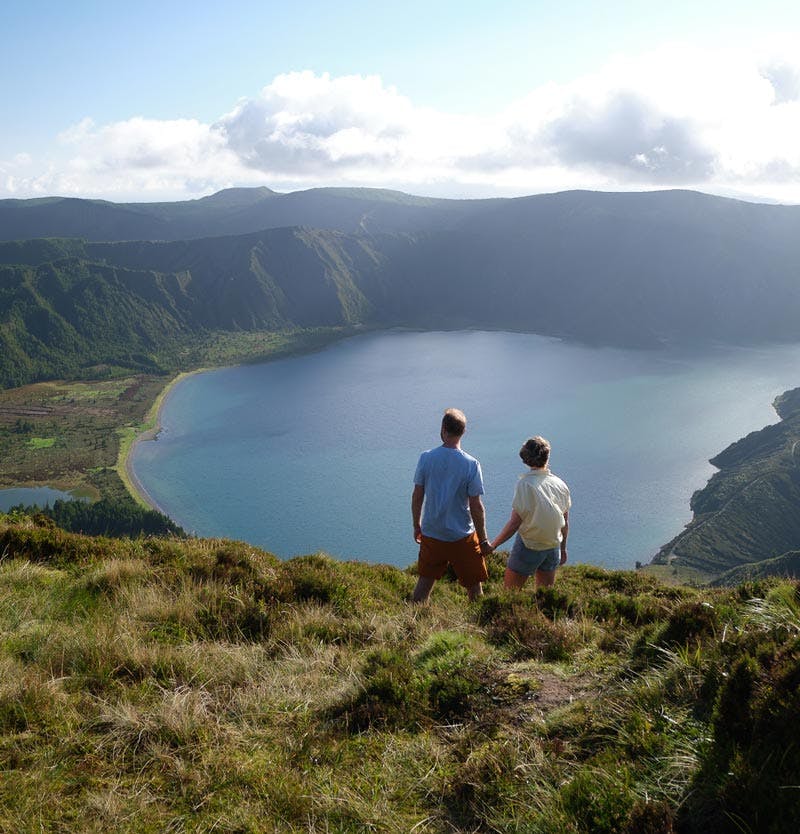
Global travel, local experts
Tailor-made holidays worldwide, your trip, their local expertise.
Our local in-destination experts are here to help you plan the most unique, authentic trips.
Reimagining travel
Travel that benefits all: our environment, ecosystems, local partners, and travellers.
Tailor-made, made easy
Travel with confidence with our flexible terms and ABTA financial protection.

Plan your trip with local experts. The most authentic way to see the world.
Tailor-made holidays planned with local experts uniquely for you. The better way to travel.
Plan your safari adventure with us
Go in search of some of the world's most magnificent creatures, roaming wild in their natural habitats. Watch our TV advert to discover who we are, and connect with our local experts in your chosen destination to craft an epic, tailor-made holiday.

Africa safari holidays

Active safaris around the world
1 April 2024

Top safari destinations outside of Africa
5 April 2024
Reimagine travel with us
Join our newsletter for more inspiration, local expertise, and updates on how we’re making travel a force for good.
Where’s next on your list?

Who better to plan your trip than travel experts who live and work in your destination? Our local partners are what TravelLocal is all about.
✔ Experienced tour operators based in the destination ✔ They know it best – ask them anything! ✔ Get to know a place through local people for a truly authentic experience ✔ 200+ local experts around the world

What our travellers are saying
" The combination of fast response and local knowledge made tailoring our holiday a breeze. Well done Laura in Argentina and the TravelLocal staff. "
Exceeded all expectations
" Our trip to Costa Rica exceeded all expectations... One of our best holidays ever. We will definitely use TravelLocal for our future adventures. "
John and Sylvia
An amazing holiday
" We had never booked any trip through an agency before.. We were not disappointed! We had an amazing holiday in Sri Lanka and would use TravelLocal again in the future. "

Great African train journeys
8 April 2024

Top 10 places to visit in Tanzania
3 April 2024
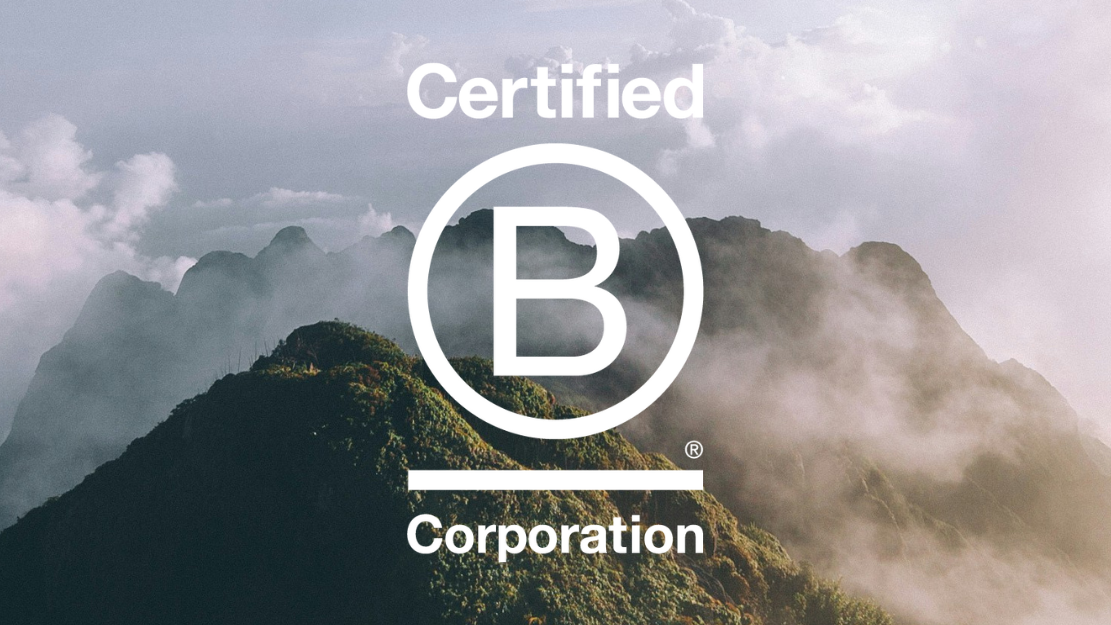
We’re reimagining fairer, more sustainable travel
In a changing world, travel needs to change as well. We’re working hard to ensure that it remains a wonderfully positive experience for the world and everyone in it. As of March 2024, we are proud to be a certified B Corporation: this is a significant achievement for us, and just one of the ways in which we’re helping shape the future of travel.
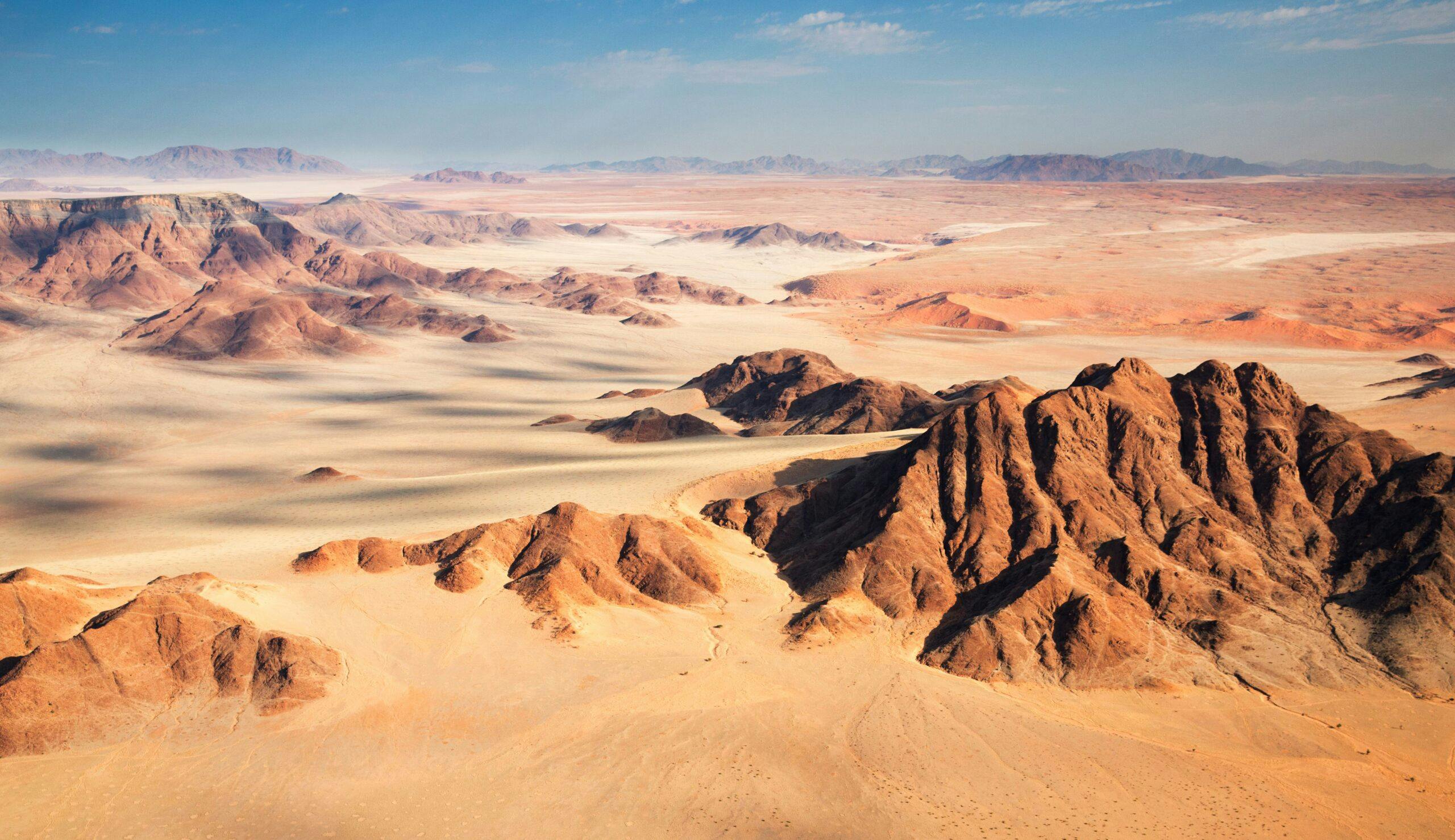
Experience the magic of Namibia

Highlights of Namibia self-drive
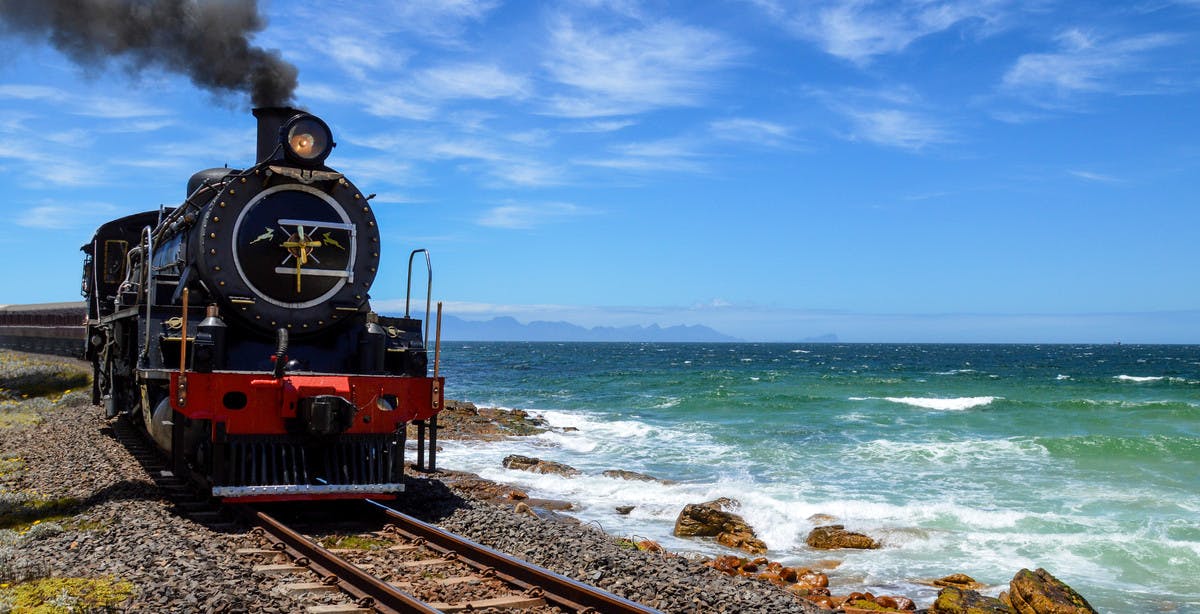
10-day trip | South Africa & Namibia by rail

7-day private fly-in Namibia safari
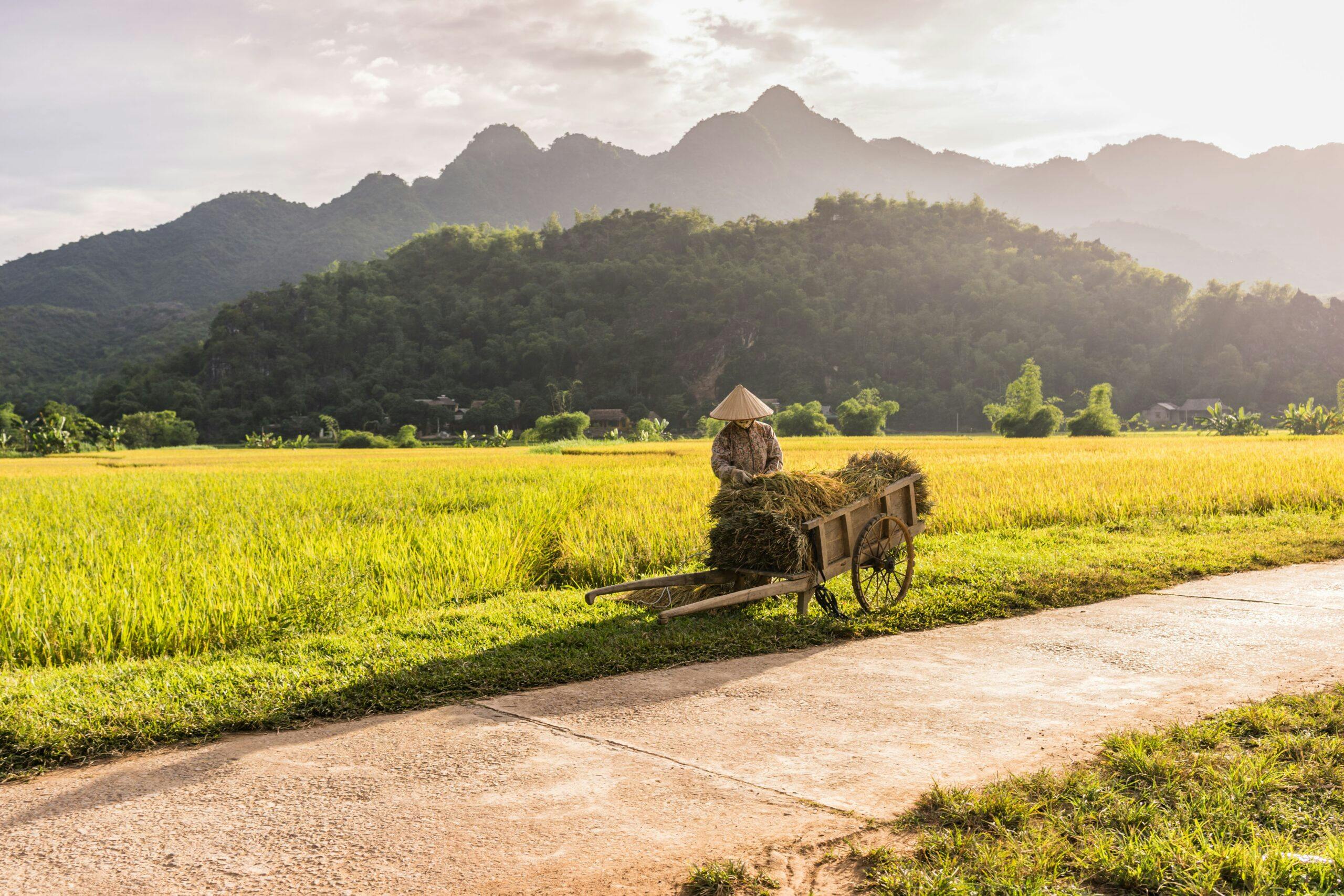
Top itineraries
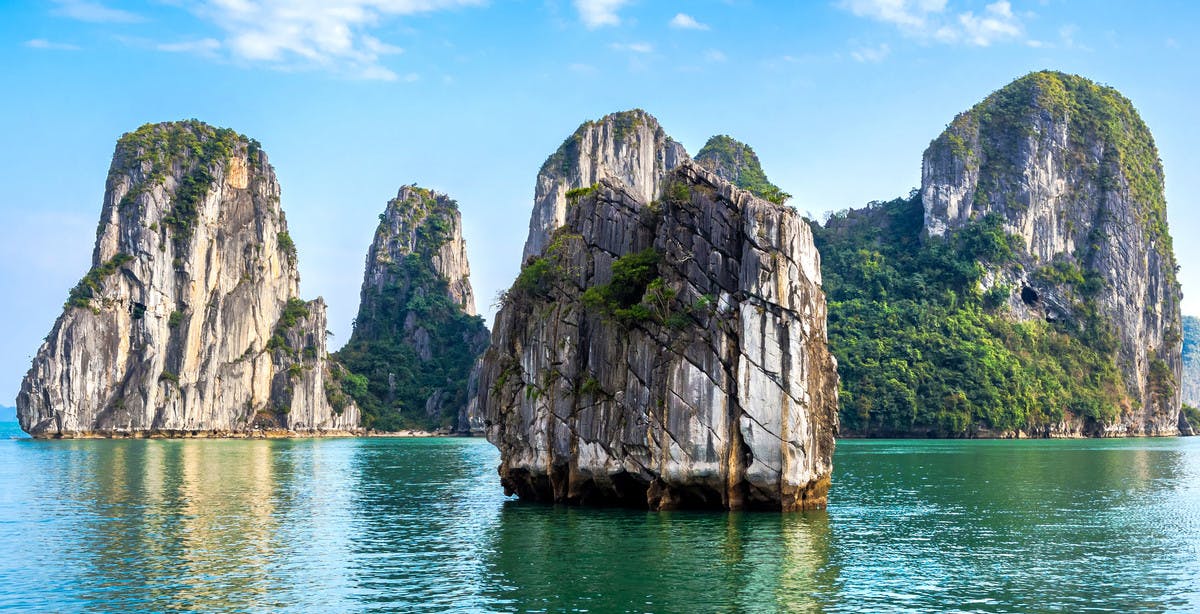
City to countryside: serene Northern Vietnam tour

Highlights of Tokyo & the Kansai region
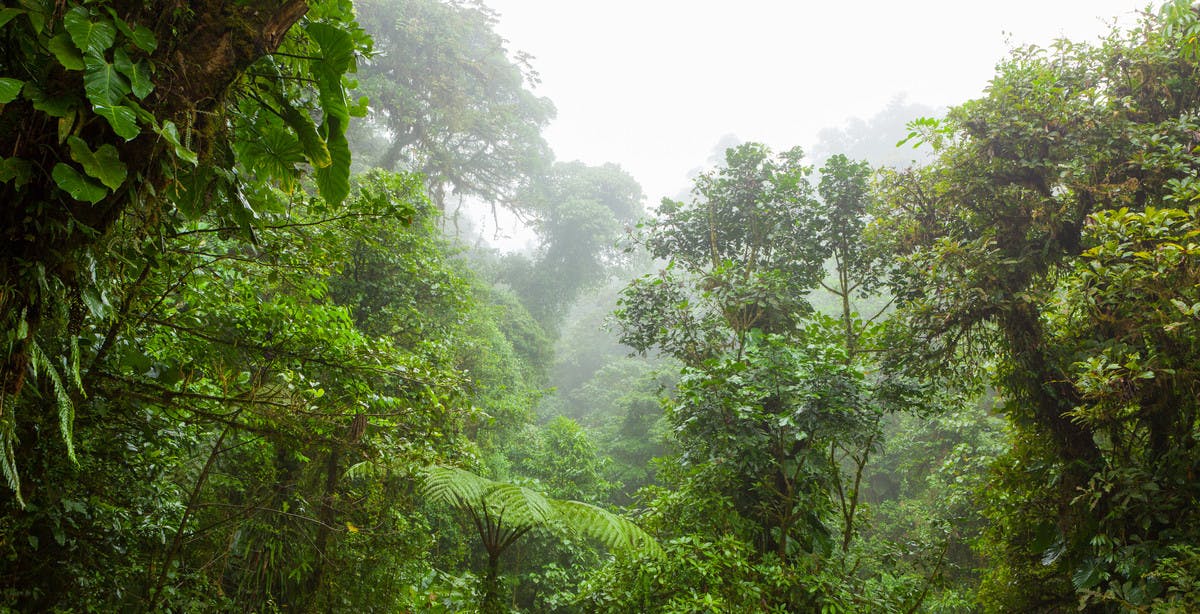
Costa Rica: an intrepid adventure
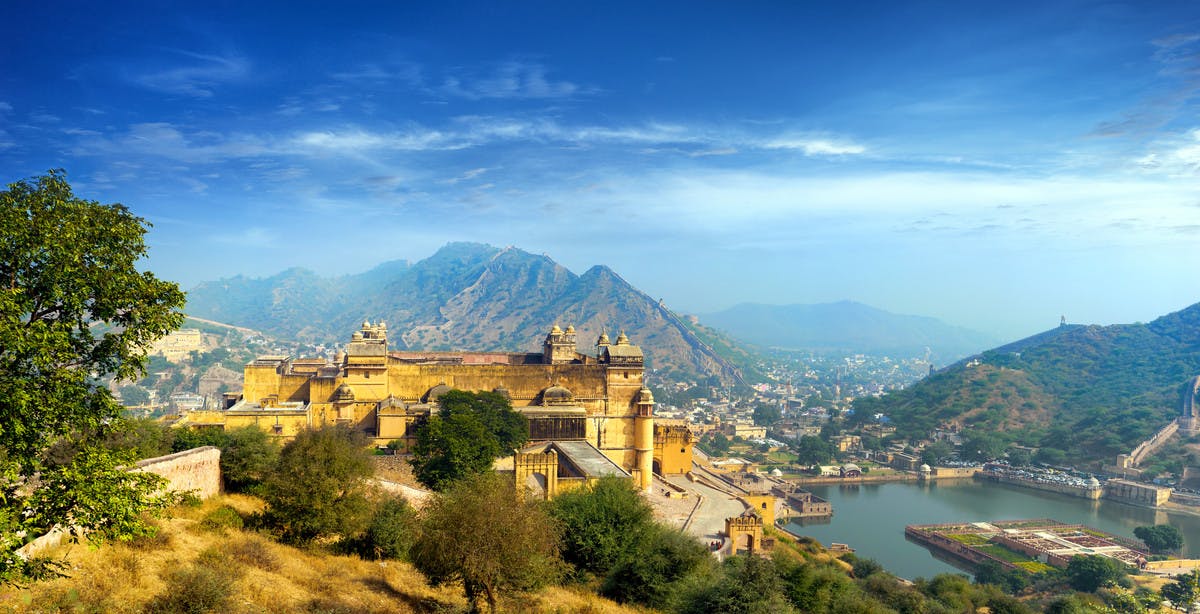
India's Golden Triangle: icons of Delhi, Jaipur & Agra
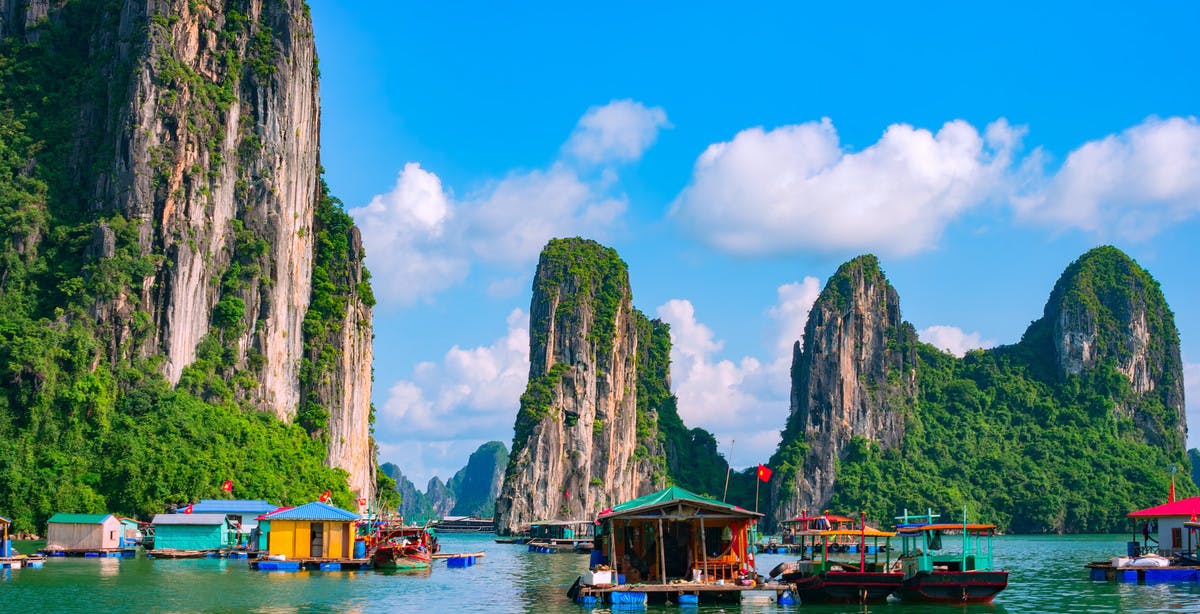
Ultimate Southeast Asia: best of Vietnam, Cambodia, Laos & Thailand

Indonesia: highlights & jungle adventures

12-day Mainland Greece discovery tour
I-375 revision would mean fewer travel lanes, but residents still have questions

It was hard to get past the width of the roadway.
Nine lanes of traffic.
That’s how wide parts of a reimagined Interstate 375 appeared in numerous presentations, only not as an interstate in a trench splitting downtown Detroit from Lafayette Park and other east-side areas but as a street-level boulevard.
It gave critics ample room to question the “Reconnecting” portion of the I-375 Reconnecting Communities Project name or how it could ever address the elimination of areas like Black Bottom and Paradise Valley decades ago.
One neighborhood group, the ReThink I-375 Community Coalition, even launched a letter campaign to Gov. Gretchen Whitmer and Mayor Mike Duggan in April seeking to have the Michigan Department of Transportation removed from its role leading project design, saying in a sample letter that the effort as envisioned would actively disconnect the community and threaten decades of stability.
But MDOT is now offering a revised vision for the project, one with fewer lanes following an analysis in recent months showing less traffic during the morning and evening rush hours than before the pandemic.
Instead of nine lanes, the boulevard would be six, according to an MDOT presentation slide showing a possible view of the area north of Lafayette. Instead of three through lanes in each direction, there would be two. Instead of two left turn lanes in one direction, there would be one turn lane.
MDOT in an April webinar called it a 33% reduction in the travel lane width, and Project Manager Jon Loree said in an email that the department's traffic analysis forecast "a 20% to 40% reduction in the new boulevard based on time of day and location. This allows us to reduce the boulevard cross section, maintain mobility, and will result in a more comfortable pedestrian experience."
While the revisions appear to address some concerns from mobility advocates, who have been vocal that crossing so many travel lanes on foot or a bicycle or a wheelchair would be dangerous, not everyone is convinced the project has the right focus in mind, even with the changes.
J. Gregory Love, a former Detroit executive deputy fire commissioner, said he is “concerned about the lives that are going to be lost” when an interstate connection between east-side neighborhoods and the Detroit Medical Center is transformed into a signalized surface street.
He predicted that ambulances serving the thousands of residents, many of them senior citizens, living in high-rise buildings along the East Jefferson corridor, would see additional minutes added to hospital trips. He said those trips happen every day, and the issue highlights how the project will affect residents and neighborhoods beyond Lafayette Park.
“When they raise the freeway, they’re going to have an extension of that ride, probably eight to nine minutes longer,” said Love, who is president of the Indian Village Manor Condominium Association.
Love said he’s focused on being a voice for the seniors on the east side of Detroit, many of them at a deficit in terms of internet connections whose concerns aren’t as visible as others. He emphasized that he’s “staying in the lane” of public safety, something he knows best, in his comments about I-375.
In response to the emergency response concerns, MDOT's Loree provided documents from the preliminary designs shared with various groups last year showing travel times between Lafayette Park and the DMC. The estimated travel times range from five to six or seven minutes using the existing route and from seven to eight to as much as 13 to 14 minutes, depending on the time of day, using four alternative design route options.
Loree noted that "in response to the feedback we received, we have developed a number of design refinements made possible by a reduction in recent traffic volumes. This includes adding new local connections in the interchange that will enable emergency vehicles to take the 375 boulevard north into Brush Park and a direct connection from the 375 boulevard to the northbound I-75 service drive that connects to Mack. Travel times for these new connections are under development."
'Severing an artery'
The stakes are high for this project, which has been discussed at least since 2013, and residents and public officials know it. Federal money is involved, including a $105 million grant that U.S. Transportation Secretary Pete Buttigieg came to Detroit to announce in 2022.
The project, including the reconfiguration of the I-75 interchange, has been estimated to cost $425 million. It would see major construction in 2026-28 and completion in 2029, according to the latest plans.
I-375 and the effort to reimagine its next phase have been tied to the understanding that such highway projects and the urban renewal efforts they were connected with displaced many minority and immigrant communities across the country at a time in the last century when those communities’ concerns did not receive due consideration. MDOT says the purpose of the project is to create a safer road that can meet current design standards and improve connectivity in place of an aging highway that's six decades old.
Reimagining the roadway, which could free up substantial land for reuse or redevelopment in some fashion, carries the weight of trying to address the history of the area in a way that serves the community for years to come.
But Love, whose aunt had lived in Black Bottom and was pushed out, echoed what some critics contend, that history could be repeating itself in a sense, in the way the project is playing out.
He dismissed the notion that the project would reconnect a community.
“What community are you reconnecting? You’re severing an artery,” he said.
More: I-75 in Detroit could look much different in the coming years. Here's how
The need for a vision
Olga Stella, who has lived in Lafayette Park for 25 years and is part of the group leading the letter-writing campaign, said she can’t comment yet on whether the revisions are adequate because she hasn’t had an opportunity to “dig in.”
The idea behind the letter, which Stella said Friday is being finalized, was to let public officials know how concerned residents are with this project. She declined to specify how many people had signed the letter, but allowed that the group had exceeded its goal of 100 signatures.
“There’s a characterization that there’s a very small group of people who have concerns. That’s not the case,” she said.
MDOT's Loree, however, defended the process.
"The public engagement process is working. Through our Local Advisory Committee and our neighborhood meetings, we heard concerns and have addressed them through the design refinements. We are still early in the design process and look forward to continuous engagement that will help move the project forward," he said in a response sent to the Free Press.
Determining the land use for the area that is freed up from the project is another key part of what's ahead, a process that has yet to play out and will be led by the city. Numerous critics have said that process should have happened before design began.
“This is a project that will shape our city for the next 50 years in the same way that the original I-375 shaped the city up to this point. It’s very important that we get this right,” Stella said. “What should be driving this project is a vision.”
That vision, she said, has been lacking up to this point.
It’s also not clear to Stella or others how much of the project can be changed going forward despite what they've heard from MDOT.
Loree said in April that most of the design work remains ahead and that the department is “still in that mode where we can consider design changes.”
“We’re certainly open to looking at opportunities to add connections … to add mobility,” he said during the April public session.
MDOT will be looking at how the framework planning can feed the future design as well as “how we honor Black Bottom,” Paradise Valley and the history of those neighborhoods, he said.
Some changes, however, can’t be made, he said, pointing to those that would negatively affect safety and those that would affect adjacent properties.
More: Ford Road project would mean no left turns
'Cautiously happy, optimistic'
The changes to the roadway design are a welcome adjustment to some.
Todd Scott, executive director of the Detroit Greenways Coalition and a member of a local advisory committee for the project, said he was excited to see what MDOT had come up with, and his sense from a recent meeting was that some people believe MDOT is beginning to build trust and listen.
“I think it’s a big, big change. I’d say some people are cautiously happy, optimistic … (but) everyone’s not, ‘we’re done, high-fives,’” Scott said, noting that while there appears to be good biking connections downtown and to Eastern Market, he remains unclear on connections to Brush Park, for instance.
But the revisions would make a real difference to the impact of the roadway, he indicated.
“They were originally planning to build a Telegraph Road through downtown, and now they’re planning to build a Mack Avenue,” he said, highlighting the shift in view to a local road that is less challenging for vulnerable road users.
Eric Larson, CEO of the Downtown Detroit Partnership, said that most everyone feels that the reduction to six lanes is an improvement.
“Have we gone far enough? That’s the continuing consideration,” he said. “We are encouraged by the progress and the changes that were presented … we are continuing to work very closely with the community, MDOT and the city to look at further changes, further opportunities and additional ways to incorporate the community’s input and concerns.”
Larson said he’s encouraged that the “right conversations” are taking place now.
“All of us want to make the most of a transformative project,” he said, noting that it goes beyond the number of lanes to what the broader vision is for transportation and mobility.
DDP is getting support from The Kresge Foundation through a $1.85 million grant “to maximize the potential of the I-375 project and to ensure that residents and businesses are fully engaged in the process to bring the interstate to grade,” according to a statement from Jennifer Kulczycki, a spokeswoman for the foundation.
She noted that “we are also convening a reparative roundtable made up of community members from across the city to ensure that the project is responsive to (the) community and is as creative, restorative, aspirational and equitable as it can be.”
Contact Eric D. Lawrence: [email protected] . Become a subscriber . Submit a letter to the editor .

IMAGES
VIDEO
COMMENTS
Learning about local history and culture improves community pride, fosters tolerance, and encourages engagement and participation. It contributes to one's local or national identity allowing them to feel connected to their community and its outcomes. 3. Local travel is more eco-friendly and sustainable.
It could even mean going to a new brewery in your area. We would consider any of that local travel. #2 The more you say yes- the easier it gets. The more you get out of your comfort zone and experience new things, the more you look for those experiences and when that flight finally shows up and all the stars align- you are much more likely to ...
Support the community by staying at locally-owned accommodations and eating at local restaurants. 2. Do what you can to minimize your carbon footprint. This is so much easier when you travel locally. For instance, you could bring eco-friendly travel items or choose low-impact forms of transportation. 3.
Whether a person chooses to go local or travel luxe is simply a decision they make depending on their preferences, tastes, moods, financial circumstances, and even their travel partners. We mix things up ourselves. Secretly, I wanted to tell him a fib. "Yes, it's over. Tell your marketing folks and concierge it's time to move onto ...
Local travel is a great way to get to know your home country. Here are the reasons why you should travel locally. Even though traveling is mainly about exploring new destinations and exotic countries, travelers should not forget to explore their own backyard. Discover with us the pros of traveling locally and support domestic tourism.
Everywhere you turn in the tourism industry these days, all eyes are on "locals" — locally focused travel experiences, supporting local businesses, listening to local stakeholders, shifting to local narratives and storytellers, and, yes, even focusing on local (domestic) travelers. For a long time, the tourism industry centered travelers ...
Definition of local travel. Traveling locally is defined as seeing and doing things inside a certain region. It entails traveling to neighboring towns, cities, or areas, typically a short flight or a few hours' drive from one's residence. People can learn about and enjoy the history, culture, landscape, and tourist attractions of their own ...
Kevin Manaugh, Ahmed M. El-Geneidy, What makes travel 'local', Journal of Transport and Land Use, Vol. 5, No. 3 (2012), pp. 15-27
Stay in a local hostel or hotel and visit all the attractions you would have visited if you were a tourist. Join local guided tours, visit museums, landmarks, and viewpoints. Try out new restaurants and cafes. Try your city or country's specialties that you normally would only make at home. Visit a new neighborhood.
13 Secrets on How to Travel like a local. 1. Let Locals Plan Your Day. Tours can be great if you don't have time to plan your trip, if new places make you nervous and you'd rather get your feet wet before diving in, or if you just want everything taken care of for you. However, it's not the best way to see a city from the eyes of those ...
Definition of Local Tourism. Local tourism can be defined as a form of travel that focuses on immersing oneself in the local community and culture of a destination. It emphasizes grassroots experiences, connecting travelers with the local residents, traditions, and customs of a place.
The local area is within the local commuting area of the duty station, which is determined by the authorizing official or prescribed by local Service or Defense Agency directives. The local area includes separate cities, towns, or installations adjacent to or close to each other, where the commuting public travels daily during normal business ...
Well, after two years of travel and dozens of lessons learned, I can say I've had those truly memorable local travel experiences that I was missing the first time around. From spontaneous road trips in Croatia to watching Rick and Morty in Polish, I've shared moments with locals that mean more to me than any photo could.
1. Become a Shutterbug Spy. Grab your camera and transform ordinary sights into extraordinary captures. Use a macro lens to reveal hidden details in architecture, nature, or street scenes. Bonus points for joining a local photography tour - a perfect opportunity to learn insider tips and hidden locations.
1.32.1 IRS Local Travel Guide 1.32.1.1 Program Scope and Objectives 1.32.1.1.1 ... (11) 1.32.1.2 (2), General Rules - updated based on definition of local travel - This IRM covers travel on official business, which is performed within a 50-mile radius of the employee's official assigned duty station that is performed within one day and does ...
From humble beginnings TravelLocal is starting to take mainstream tourism by storm, Travel Begins at 40 talks with its co-founder Huw Owen about the company and why local tourism is an important part of responsible tourism. Luxury Travel, Opinion / Profiles, Sustainable / Eco. By Mark Bibby Jackson. Posted on 4 May 2018 (Updated 15 February 2021)
Local Travel Policy. 1. Purpose. This directive provides guidance on the reimbursement of transportation expenses incurred on official business within the local area of an employee's official worksite/duty station or appropriate alternative worksite. While the Federal Travel Regulation regulates expense reimbursement for temporary duty travel ...
2. Check Local Media. Explore the websites of your destination's newspaper, radio and TV stations, and print and online magazines. These will have openings, closings, reviews, news, and upcoming events. 3. Talk to the locals. Before you arrive at your destination, seek out local bloggers and social media influencers.
Taking a break from home helps you to let go of the routine of your work, and perhaps the hustle and bustle of your family. It helps you to let go of stress, and relax for a while. As soon as you choose to 'plan' your journey yourself, you enter the wonderful world of 'local travel'. By choosing accommodation near a 'city' you can open up to ...
Fund next-gen business journalism with $10 a month. We may earn a commission from links on this page. Lifestyle. LIVE LIKE A LOCAL. Tourists want to "live like a local.". How do locals feel ...
Travel party: A travel party is defined as visitors travelling together on a trip and whose expenditures are pooled (IRTS 2008, 3.2). Trip: A trip refers to the travel by a person from the time of departure from his/her usual residence until he/she returns: it thus refers to a round trip. Trips taken by visitors are tourism trips.
Local Travel. definition. Local Travel means travel between Firm's offices and San Mateo County, and travel to any location within a fifty- mile radius of either Firm's office or San Mateo County. Local Travel means travel within the state of Washington. Local Travel means travel between Architect‐Engineer's offices and Contra Costa ...
Our local partners are what TravelLocal is all about. Experienced tour operators based in the destination. They know it best - ask them anything! Get to know a place through local people for a truly authentic experience. 200+ local experts around the world.
MDOT in an April webinar called it a 33% reduction in the travel lane width, and Project Manager Jon Loree said in an email that the department's traffic analysis forecast "a 20% to 40% reduction ...